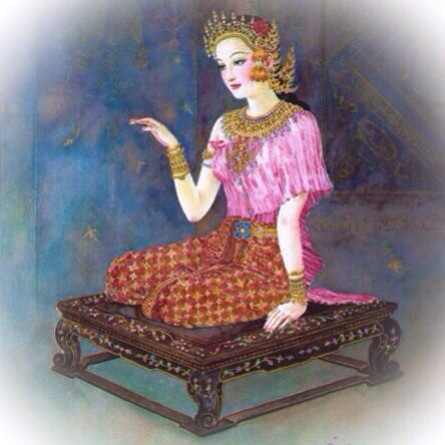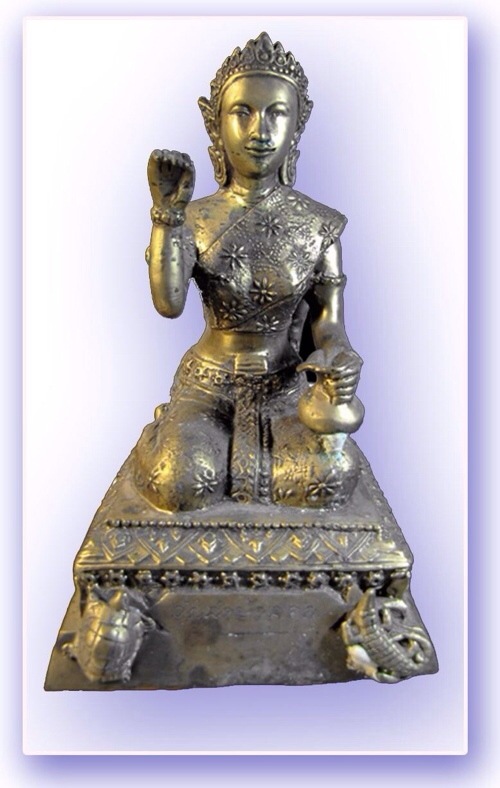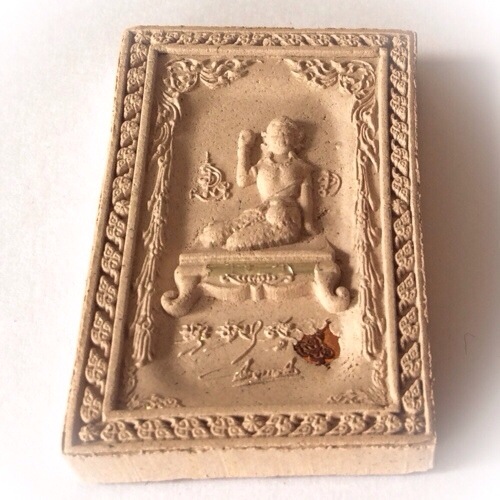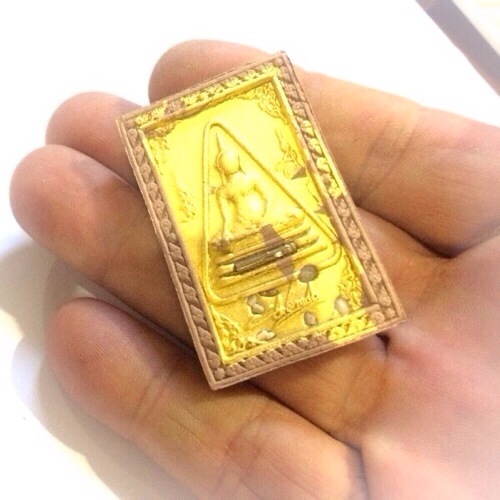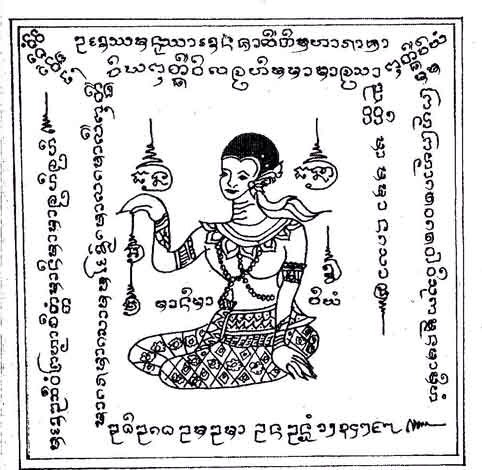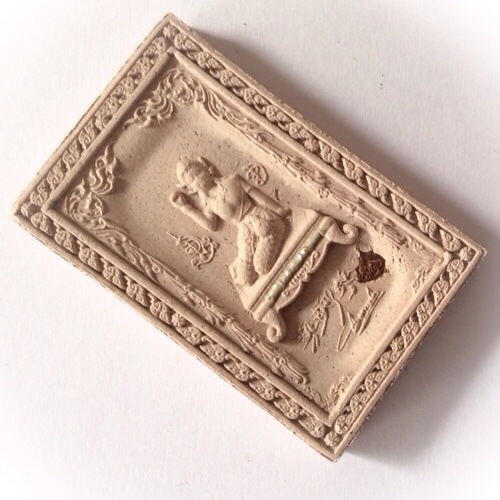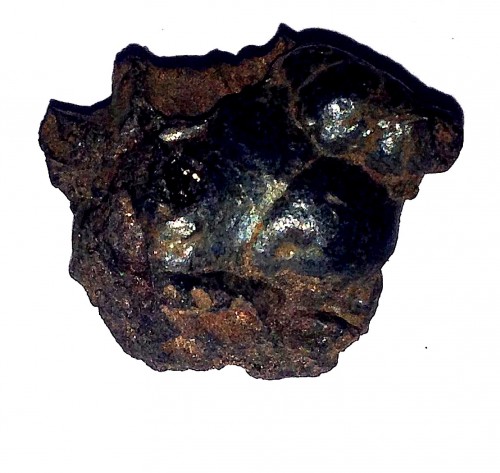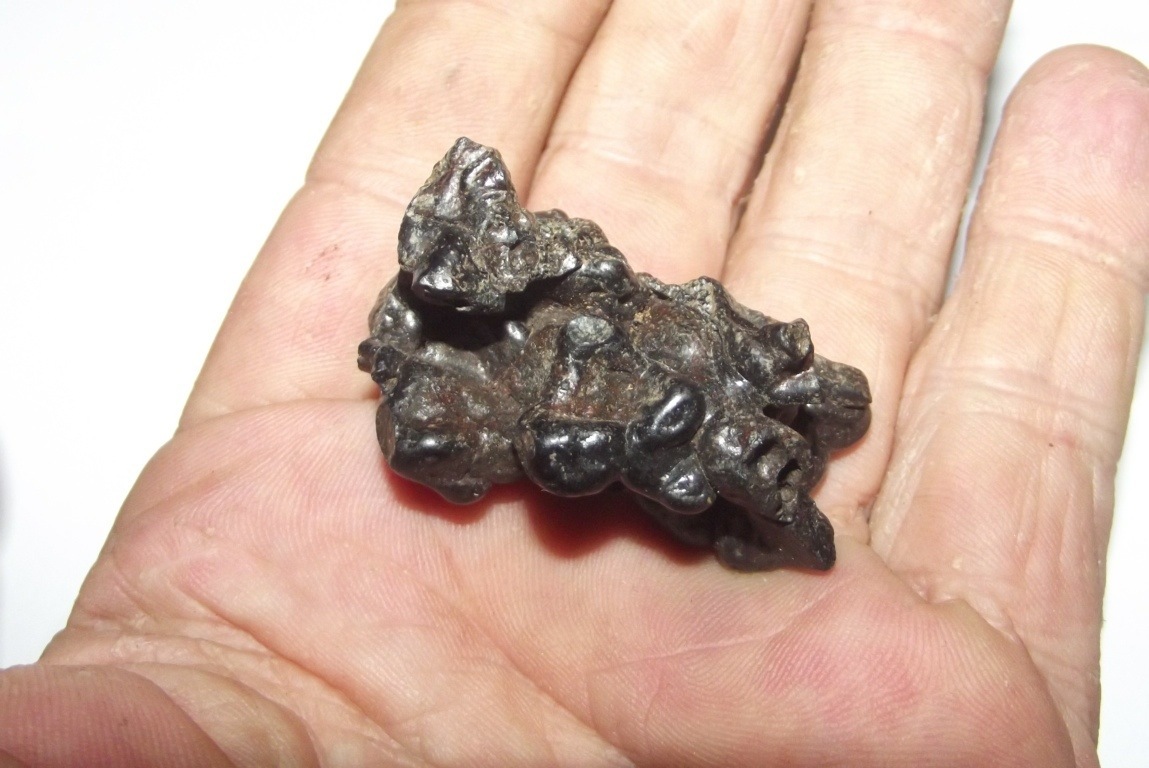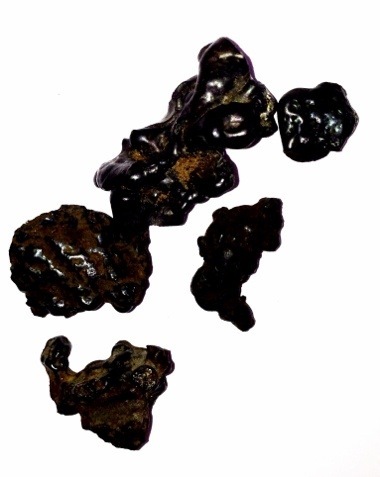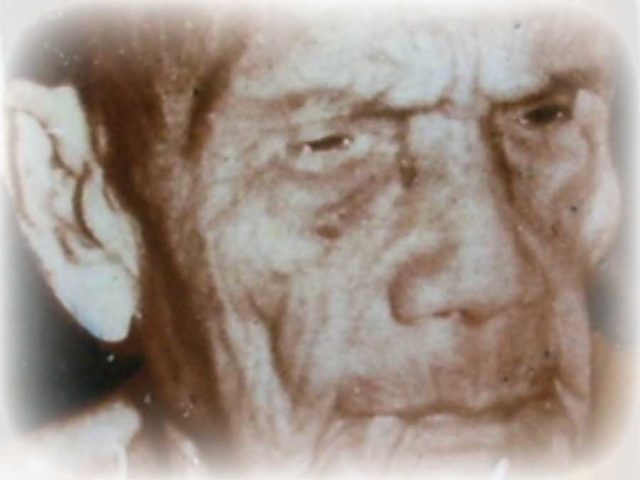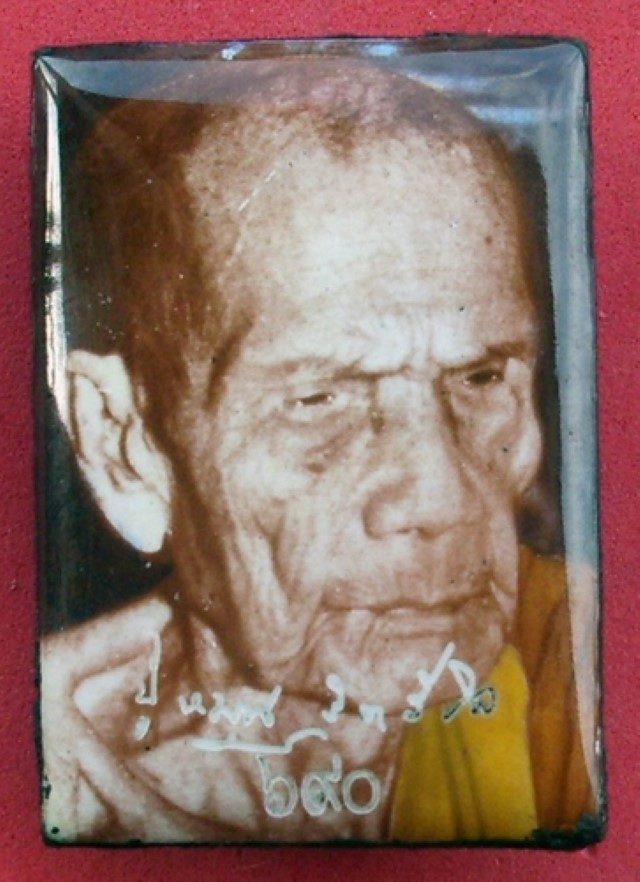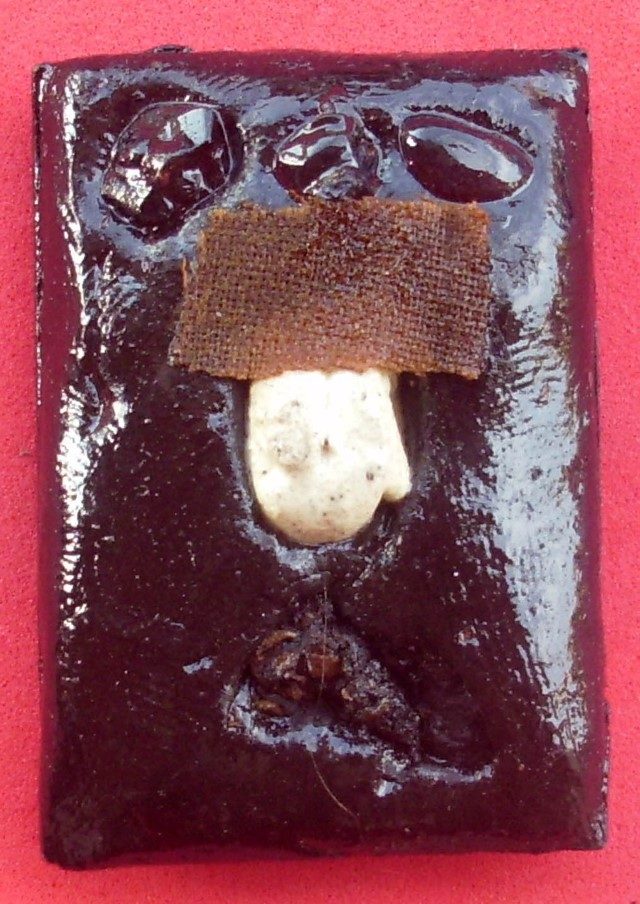The Legend of the Sacred Amulets and Talismans of Luang Por Sakorn, Wat Nong Grub
Luang Por Sakorn Manunyo, was a highly renowned master monk (Kroo Ba Ajarn) of Wat Nong Grub in Rayong Province. In the realm of sacred objects and talismans, he was widely recognized as a practitioner of exceptionally potent magical arts. His deep and formidable mystical knowledge was inherited from his teacher, Luang Por Pheung of Wat Nong Bua, and further refined through advanced study under the guidance of Luang Pu Tim of Wat Laharn Rai.
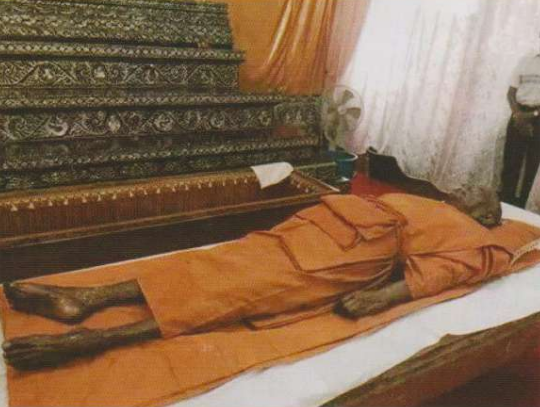
It was under Luang Pu Tim’s careful mentorship that Luang Por Sakorn was advised to pursue additional study with Luang Pu Hin at Wat Nong Sanom until his skills reached mastery.

The sacred objects crafted and consecrated by Luang Por Sakorn have long been cherished by collectors and devoted worshippers alike. These objects are believed to carry miraculous powers and an enduring sacredness a belief that is supported by many years of stories and personal experiences shared by countless devotees.
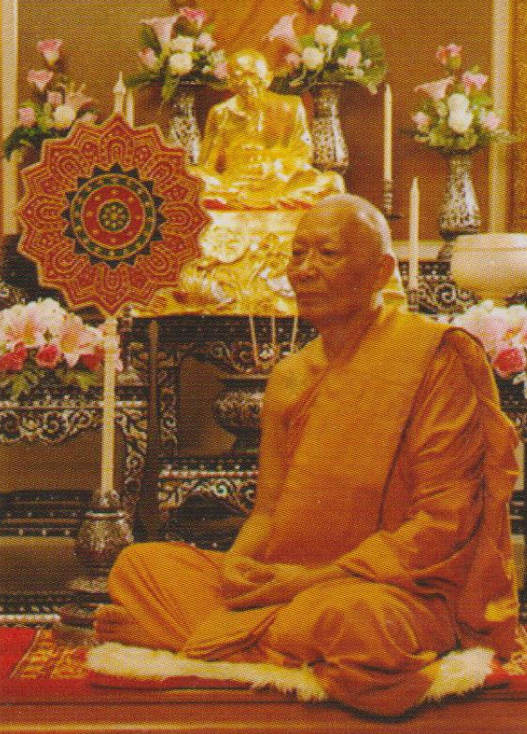
Below is a detailed explanation of the major sacred amulets and talismans attributed to Luang Por Sakorn, complete with the legends surrounding each object, their dates of creation, and the Physical details and marks (known as “tamni” and “Pim”) that help to identify each type:
1. Pra Khun Phaen (Pong Prai Kumarn) – Nong Bua Klee Model
Year of Creation: 2543–2544 BE
This amulet is considered among the most famous sacred objects of Luang Por Sakorn. According to legend, Luang Por Sakorn performed a very powerful consecration ritual, employing age-old incantations and spells of great intensity. The ritual used pure “prai kumarn” powder, which was mixed with an herbal essence derived from the “Dork Tong” (Golden Flower herb) and other special sacred substances. The back side of the amulet features an image of Mae Nang Bua Klee, a female deity who symbolizes irresistible charm and an immense magnetism. Devotees believe that wearing or carrying this amulet endows the possessor with extraordinary powers in the realms of universal benevolence (metta maha niyom), fortune in wealth, and protection from various dangers and misfortunes.
Marks and Impressions:
• Large Print: Notable for its prominent, sharp, and detailed facial features, especially the distinctive, protruding nose.
• Small Print: Similar in design to the large version but rendered in a smaller size for more convenient carrying.
• Herbal Composition A: A formulation that mixes the “Dork Fai Tong” with pure Prai Kumarn powder. This version is both highly popular and considered the rarest in the collection.
• Herbal Composition B: A blend of Prai Kumarn powder with “bai laan” powder, which exhibits a darker hue and is known for its extraordinary potency.
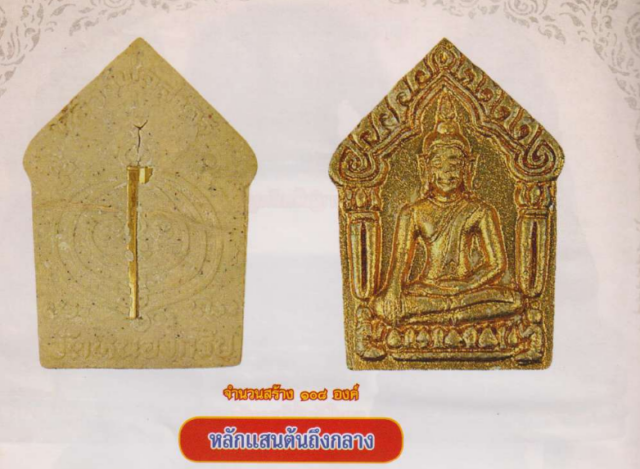
Khun Phaen Run Raek first edition amulet
2. Pra Khun Phaen (Pong Prai Kumarn) – Sap Perm (Wealth Increasing) Model
Year of Creation: 2548 BE
This version of the Pra Khun Phaen was specially consecrated by Luang Por Sakorn with the purpose of blessing its devotees with an increase in material wealth and fortune. The ritual for this model involved a secret mixture of special powders that Luang Por Sakorn had accumulated over many years, including powder derived from very old sacred images some more than a century in age. The consecration process extended over an arduous period of nine days and nine nights, carried out by Luang Por Sakorn in the company of several famous monk-teachers.
Marks and Impressions:
• Large Print: Characterized by a striking, intense face that expresses a sense of formidable determination.
• Medium Print: Exhibits clear, well-proportioned details that highlight its aesthetic appeal.
• Small Print: A compact version that is easy to carry, ensuring that the spiritual benefits are accessible on the go.
• Herbal Mixture: A version prepared by combining Prai Kumarn powder with bai laan powder, resulting in a darker color that signifies high magical potency.
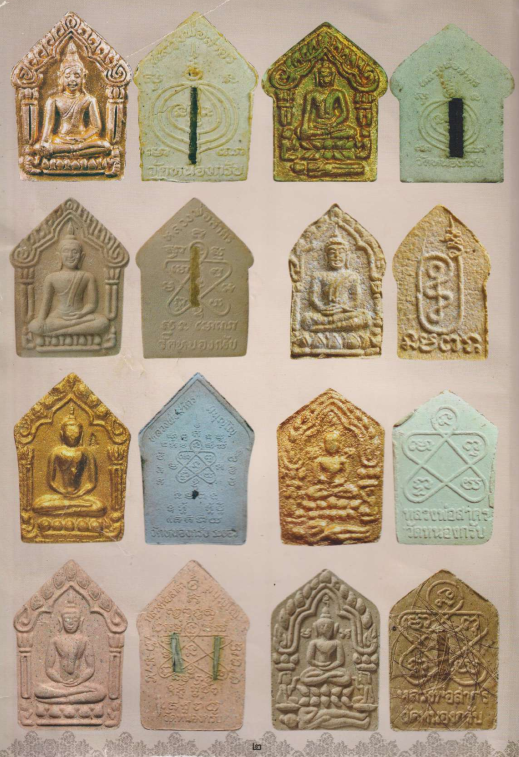
3. Luang Por Sakorn’s Sacred Coin – Sao Ha (Saturday-5) Model
Year of Creation: 2536 BE
This sacred coin was created on a Saturday that coincided with the lunar Phase known as “Ram 5 Kham,” believed to be an auspicious moment in ancient times. Luang Por Sakorn performed an intense consecration using ancient incantations passed down from Luang Pu Tim of Wat Laharn Rai. The coin is shrouded in legend and is reputed to bestow extraordinary protection; many devotees have shared miraculous accounts of narrowly escaping severe accidents and mishaps after carrying or venerating this coin.

Marks and Impressions:
• Golden Composition: There are only nine coins made with this material, making them extremely rare and valuable.
• Silver Composition: Noted for its sharp and intricate line patterns that underscore its divine craftsmanship.
• Metallic Composition (Nwona Lokhad): This version is popular among serious collectors due to its distinctive finish.
• Copper Composition: Although the most abundant among the variants, these coins have become rarer today because devotees tend to favor the other forms.
4. Takrut Tone (Sacred Amulet – Inscribed Dial) of Luang Por Sakorn
Year of Creation: This type has been produced in various models starting from 2530 BE onwards.
The Takrut Tone amulets are renowned for their association with national protection, invincibility, and immense charm. Luang Por Sakorn himself would inscribe these amulets with ancient sacred characters, using the mystical techniques he had learned from both Luang Pu Tim and Luang Pu Hin. There is a popular legend that soldiers and police officers who carried these inscriptions while on duty in dangerous areas were miraculously saved from violent confrontations and attempted assassinations.
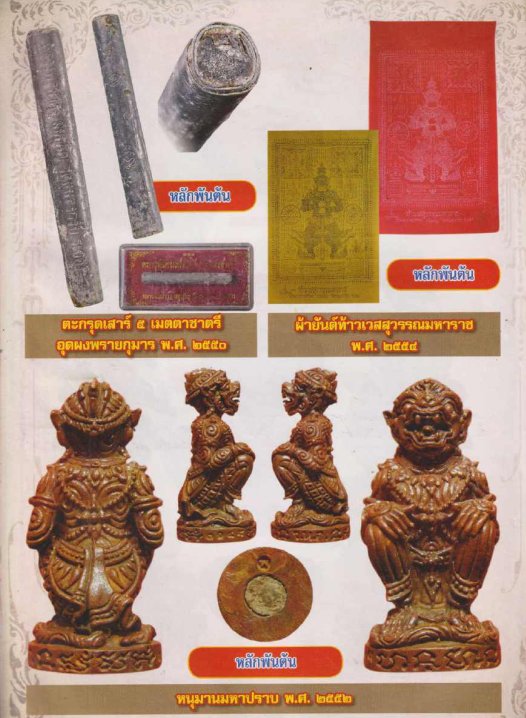
Characteristics and Varieties:
• Takrut Tone with Silver: Approximately 3–5 centimeters in length, fully inscribed with sacred characters.
• Takrut Tone with Copper: Known for its high potency and favored for its strong protective qualities.
• Takrut Sam Kasat (Three Kings’ Takrut): This exceptionally rare model is an alloy blending silver, gold, and copper a combination that further amplifies its special properties.
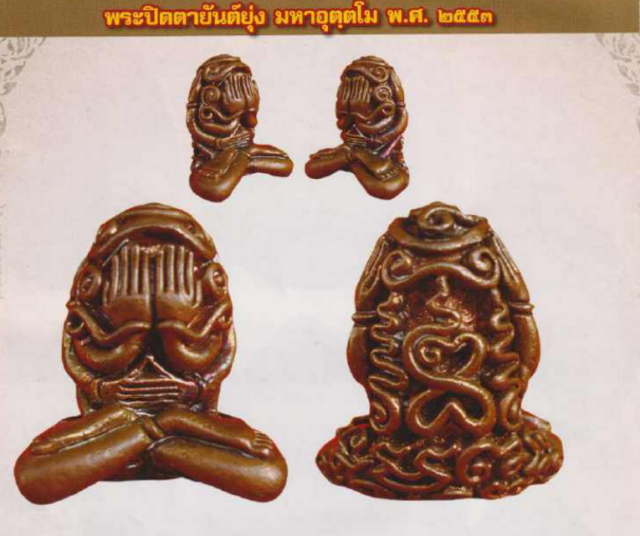
5. Pra Pidta (Eye-Covering Amulet) – Maha Lap (Great Wealth) Model
Year of Creation: 2540 BE
The legend of this Pra Pidta tells that Luang Por Sakorn combined the techniques of creating protective eye-covering amulets that he learned from Luang Pu Tim, with additional knowledge obtained from Luang Pu Hin. As a result, this amulet model acquired the unique power to safeguard its wearer and enhance their luck. Luang Por Sakorn used a sacred, ancient powder blended with a powder obtained from centuries-old sacred images and consecrated it over the course of seven days and seven nights. Many devotees have testified that those who venerate this amulet often experience unexpected successes in their work and receive abundant blessings.
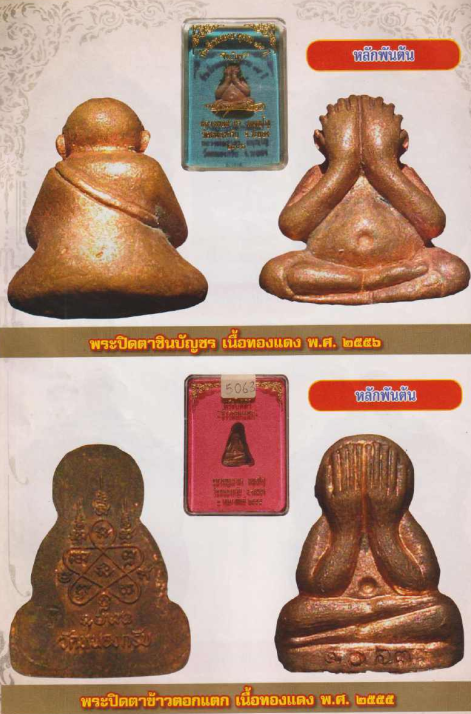
Marks and Impressions:
• Large Print: Features a sharply defined, intense facial expression with the hand pose clearly indicating the “hama yat” (gesture to ward off misfortune).
• Medium Print: Offers well-balanced proportions and is highly popular among collectors.
• Small Print: Designed to be compact and portable, making it easy to carry everywhere.
• Herbal Composition A: A blend of bai laan powder with the ancient sacred powder, recognizable by its deeper hue and high potency.
• Herbal Composition B: A version with a lighter color, noted for its exceptional beauty and unique energy.
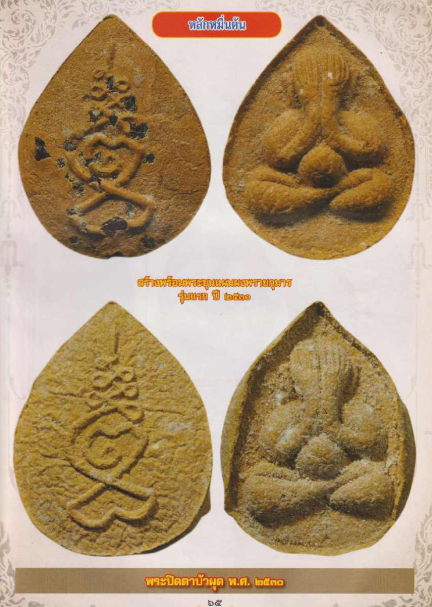
6. The First Model of Luang Por Sakorn’s Lion Amulet
Year of Creation: 2535 BE
The very first lion model crafted by Luang Por Sakorn is considered one of the rarest and most valuable sacred objects to date. According to legend, Luang Por Sakorn once received a divine vision in which he saw a golden lion appear in his dream. Inspired by this vision, he created the lion amulet using a mixture of several sacred substances, including ancient powders reputed to have been passed down from legendary spiritual ancestors. The consecration took five days and five nights, during which Luang Por Sakorn and several esteemed monk-teachers joined in the ritual. The resulting amulet is celebrated for its embodiment of spiritual power, courage, and protective force.
Marks and Impressions:
• Large Print: Notable for its majestic appearance and a presence that exudes power and dynamism.
• Medium Print: Distinguished by its balanced proportions and finely detailed craftsmanship.
• Small Print: A more portable version, making it convenient for devotees to carry this symbol of strength and protection.
• Nine Sacred metals Metallic Composition (Nava Loha): Highly prized for its beauty and intrinsic value.
• Copper Composition: Distinguished by its robust mystical energy and favored by many devotees.
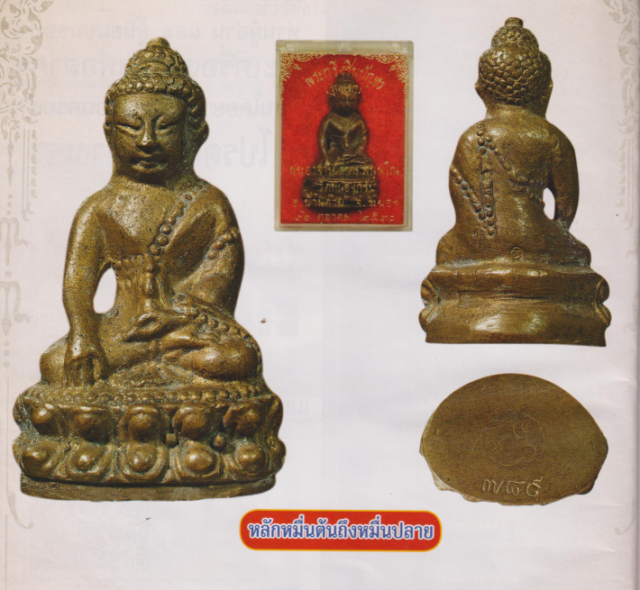
7. The Tiger Amulet – Champion in Battle Model
Year of Creation: 2545 BE
The tiger model, known as “Chana Seuk” (Champion in Battle), was created during a time when parts of Thailand faced social unrest and instability. It is said that Luang Por Sakorn deliberately created this amulet to be bestowed upon military personnel and police officers operating in dangerous areas. The ritual involved a special blend of sacred powders that had been accumulated over many years, including soil from ancient battlefields. The consecration was performed using particularly potent and age-old chants. Many devotees claim that those who have carried this tiger amulet have found not only Physical protection but also the courage to overcome adversaries, achieving victory over their enemies and evading all sorts of harm.
Marks and Impressions:
• Large Print: Features an aggressive, roaring posture that conveys both strength and determination.
• Medium Print: Shows detailed, well-proportioned imagery favored by collectors.
• Small Print: A compact and easily transportable version ideal for those who require constant protection.
• Metallic Composition (Nwona Lokhad): Admired for its aesthetic beauty and revered value.
• Copper Composition: Noted for its high mystical potency and cherished by devotees.

8. Luang Por Sakorn’s Sacred Bell – Charoen Porn (Prosperity) Model
Year of Creation: 2550 BE
Created during the later years of Luang Por Sakorn’s life, the sacred bell model named Charoen Ponr was said to embody all the accumulated spiritual knowledge and experiences the master had gathered over his lifetime. The creation of this sacred bell took as long as nine days and nine nights. It was performed by Luang Por Sakorn himself, accompanied by more than 108 renowned monk-teachers, each contributing to the ritual by mixing over 108 special types of sacred powders. Included among these ingredients was a powder derived from a Buddhist statue over 500 years old. This amulet is particularly celebrated for its ability to bestow universal benevolence, bring fortune and prosperity, and usher in spiritual success, as testified by many devotees.
Marks and Impressions:
• Gold Composition: Only nine pieces exist in this category, adding to its rarity and sacred value.
• Silver Composition: Recognized for its attractive and refined lustre.
• Metallic Composition (Nwona Lokhad): Especially popular among collectors due to its exquisite appearance.
• Copper Composition: Noted for its powerful spiritual energy and highly esteemed among the faithful.
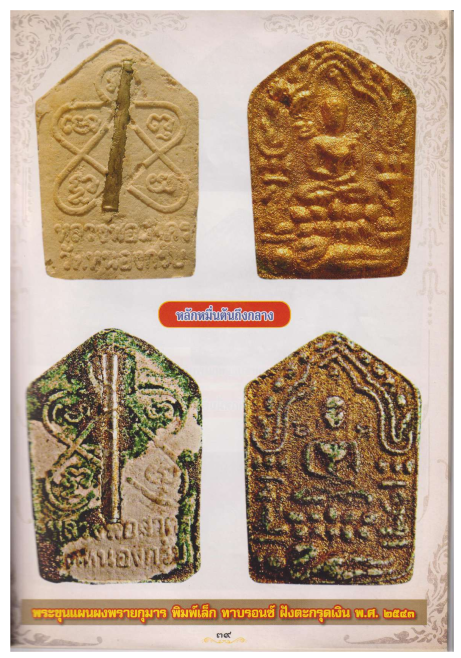
9. Sacred Talisman Cloth (Paa Yant) – Pha Yant Maha Sethee (Great Wealth) Model
Year of Creation: 2547 BE
The cloth talisman known as the Maha Sethee model, was developed during a period when Thailand was recovering from an economic crisis. In response, Luang Por Sakorn created this talisman to help bring wealth and prosperity to its devotees. The cloth was inscribed by Luang Por Sakorn himself, using a special ink prepared by mixing enchanted oil with “Maha Sanéh” oil the very oil he formulated from his deep understanding of sacred alchemy. The consecration process lasted for seven days and seven nights during a full-moon period. Countless devotees have claimed that worshiping this cloth talisman has led to remarkable success in their business ventures; some even report winning major government lottery prizes.
Characteristics and Varieties:
• Red Talisman Cloth: Intended for those seeking universal benevolence and deep compassion from others.
• Yellow Talisman Cloth: Designed to attract wealth and prosperity to the wearer.
• White Talisman Cloth: Associated with happiness, success, and overall well-being.
• Black Talisman Cloth: Reserved for those seeking invincible protection and the power to ward off misfortunes over a lifetime.
10. Paya Tao Ruean (The Tortoise Amulet) – Ruay Tan Jai (Instant Wealth) Model
Year of Creation: 2549 BE
The Instant Wealth model of the Tortoise Amulet was created following a divine vision experienced by Luang Por Sakorn. In this vision, he saw a golden tortoise leading an abundance of treasures and wealth directly to him. Motivated by this compelling vision, he set out to create an amulet that would rapidly bestow material prosperity upon its devotees. Its creation required the blending of a special mixture of powders that Luang Por Sakorn had gathered and stored over many years, including powders from ancient sacred relics and venerable statues.
The consecration ritual lasted for five days and five nights, performed by Luang Por Sakorn together with a team of well-known monk-teachers. It is said that many businessmen and traders who have venerated this tortoise amulet later experienced unexpected and substantial windfalls the kind of fortune that transformed their lives overnight.
Marks and Impressions:
• Large Print: Distinguished by its beautifully rendered details and an overall aesthetically pleasing design.
• Medium Print: Boasts finely proportioned and popular imagery among collectors.
• Small Print: A miniature version crafted for ease of carrying while retaining all the intricate details.
• Metallic Composition: Valued for its graceful appearance and revered as a symbol of spiritual and material wealth.
• Copper Composition: Known for its high mystical potency and widely popular among devotees.
How to Authenticate Luang Por Sakorn’s Sacred Amulets
To determine whether a sacred object attributed to Luang Por Sakorn is genuine, there are several critical factors that must be considered:
1. Material (Saua Watthu):
Genuine sacred objects by Luang Por Sakorn exhibit a unique material composition. For example, in the case of the Prai Kumarn powder, the texture is extremely fine and invariably mixed with herbs in a manner that can be observed by experienced devotees.
2. Calligraphy or Handwriting (Lai Mue):
In amulets such as the talismans or cloth inscriptions, the handwriting of Luang Por Sakorn is distinct and unique. Devotees who have seen his work can often recognize his style, ensuring that the object is indeed authentic.
3. Detailing (Rai La-iat):
True sacred objects feature finely detailed engravings, especially evident in the facial features and decorative patterns. Such clear, defined details are a hallmark of his masterful craftsmanship.
4. Weight:
Authentic amulets possess an appropriate weight they are neither too light nor excessively heavy. This balanced weight is seen as an indication of the right proportion of sacred materials used during the creation process.
5. Impressions or Stamps (Pim):
Each model has a unique set of impressions or marks that distinguish it from counterfeits. A thorough study and comparison of these marks can help authenticate the object, with each model (whether large, medium, or small) having its own distinct design patterns.
The Powers and Blessings of Luang Por Sakorn’s Sacred Objects
Luang Por Sakorn’s sacred amulets and talismans are reputed for their varied and potent influences. Their powers generally fall into four primary domains:
1. National Protection (Kong Grapan Chatri):
Certain models especially the talismans (Takrut Tone) and some sacred coins are renowned for their ability to shield the bearer from harm. Many devotees recount miraculous escapes from accidents or dangerous situations after carrying these objects.
2. Universal Benevolence (Metta Maha Niyom):
The Pra Khun Phaen models and other similar sacred objects are believed to enhance the wearer’s magnetism, making them more amiable and well-loved by those around them. Their influence is seen as transformative, endowing the possessor with a charismatic charm and a compassionate nature.

3. Wealth and Prosperity (Choke Laap and Rung Rueang):
Amulets such as the Tortoise Amulet, the Pra Pidta, and various cloth talismans are widely reputed to attract material wealth and good fortune. Devotees report successes in trade, business, and even unexpected lottery wins, attributing these strokes of luck to the blessings imbued in these sacred objects.
4. Spiritual Authority and Courage (Aman Barami):
The lion and tiger models, in particular, are celebrated for their capacity to enhance personal power, instil courage, and provide protection against Physical and spiritual adversaries. They are often seen as symbols of leadership and martial prowess, channelling the divine energy of the master into tangible protective power.”
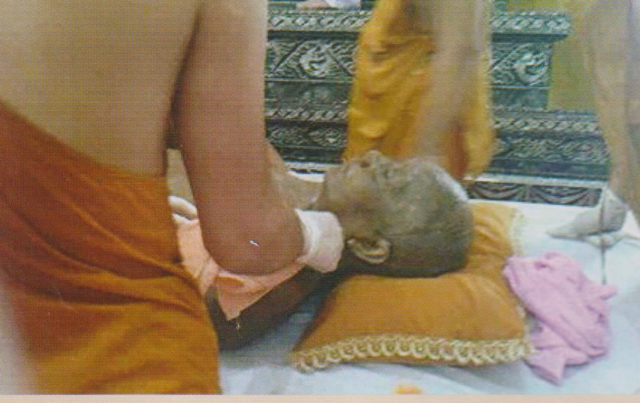

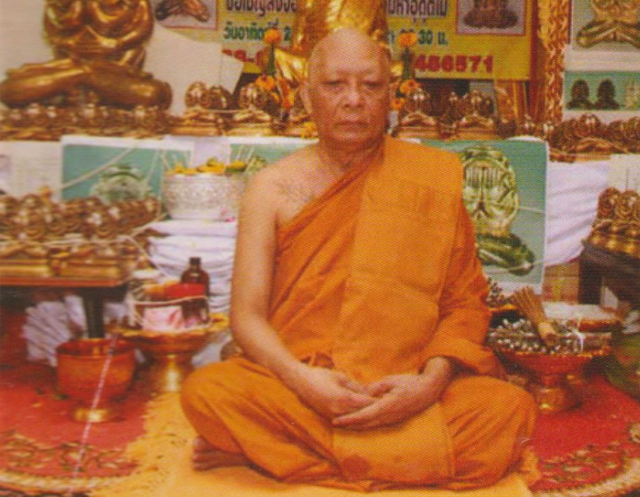
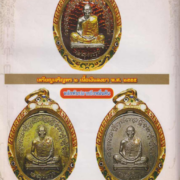
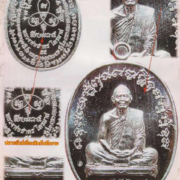
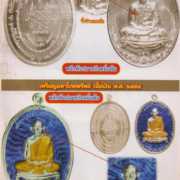
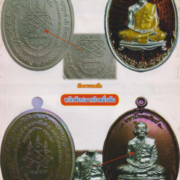
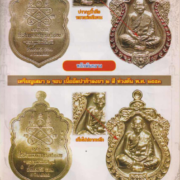
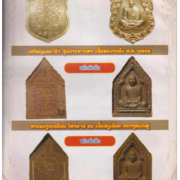
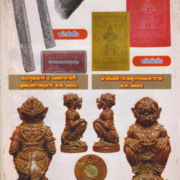
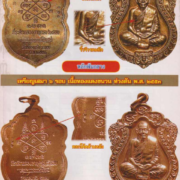
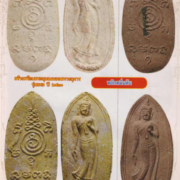

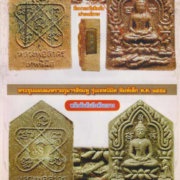
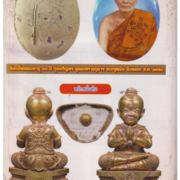
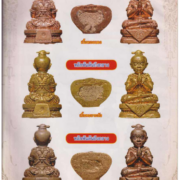
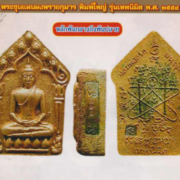
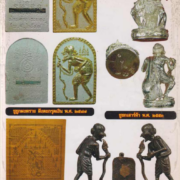

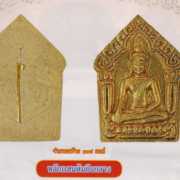
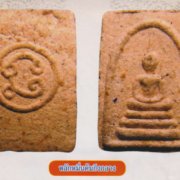
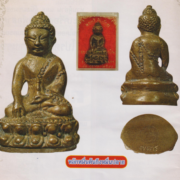
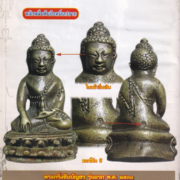
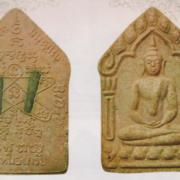
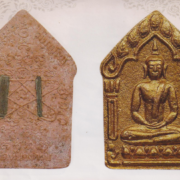
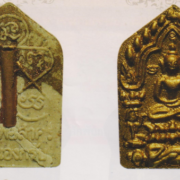
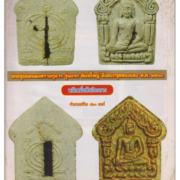
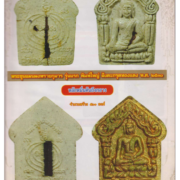
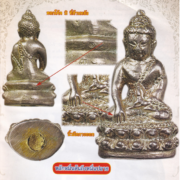
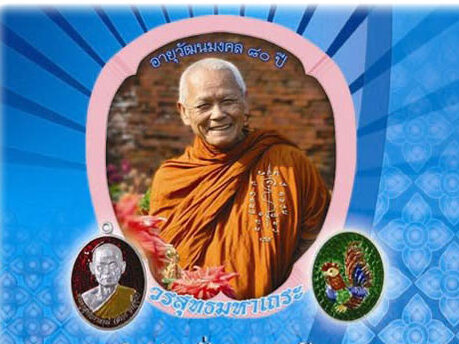
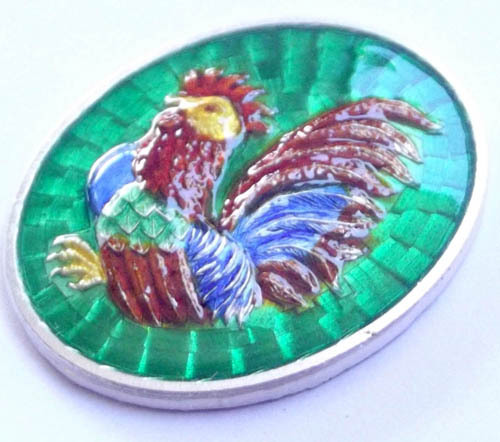
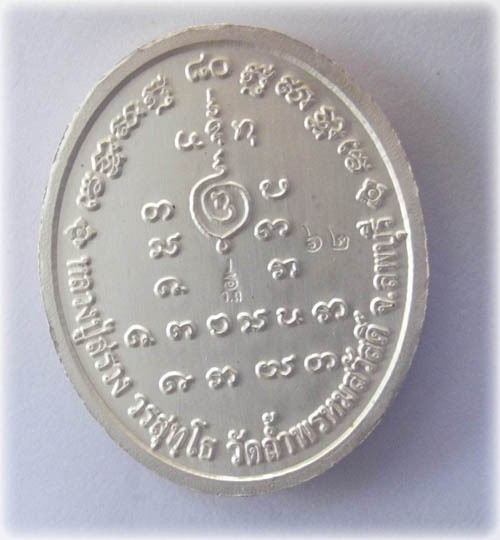

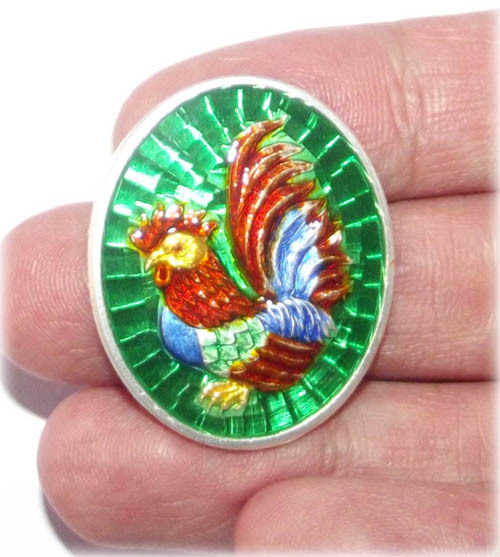
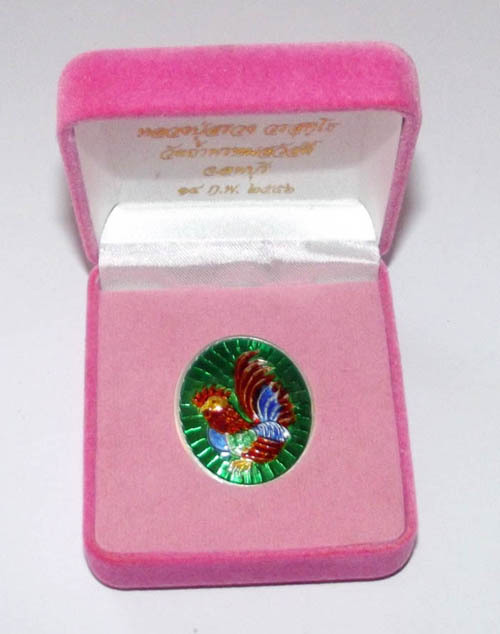
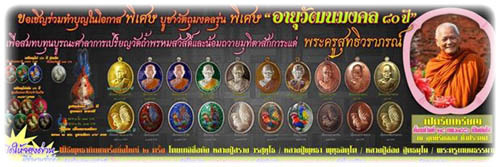
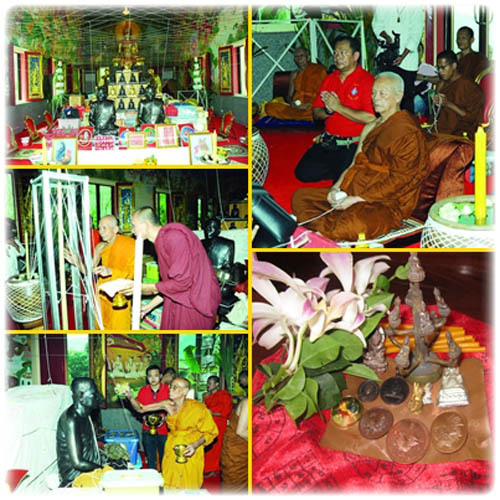
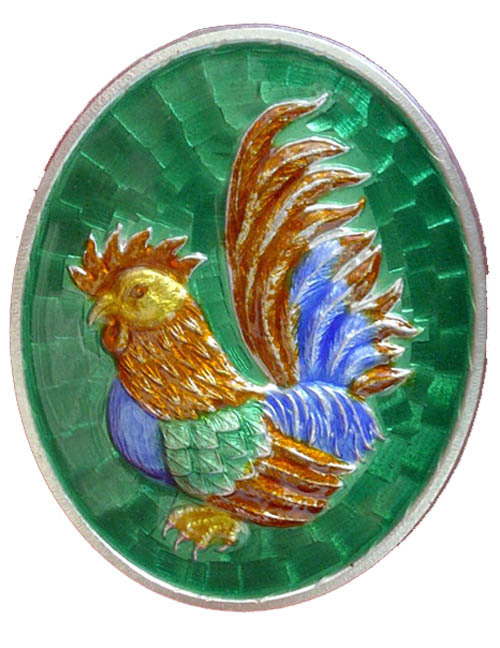
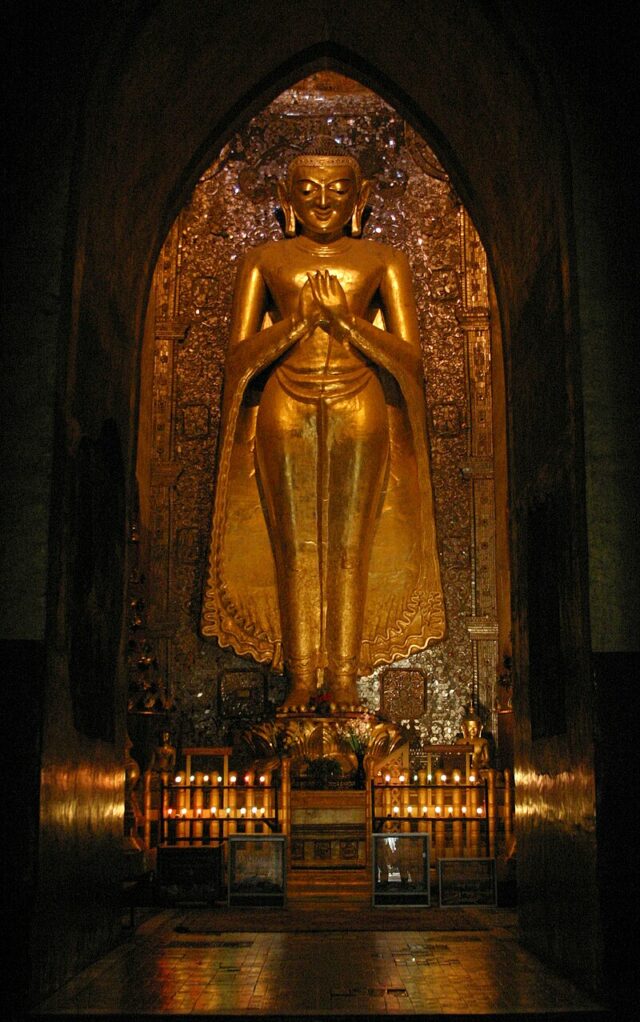

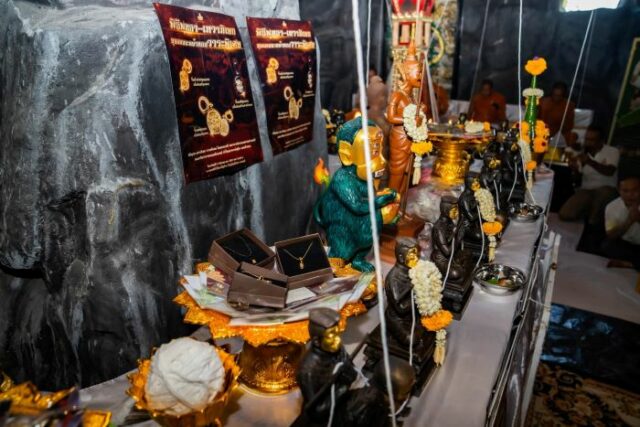
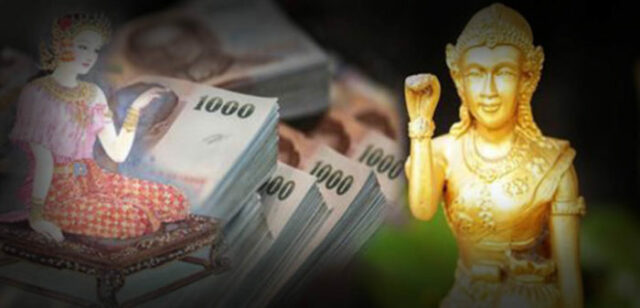
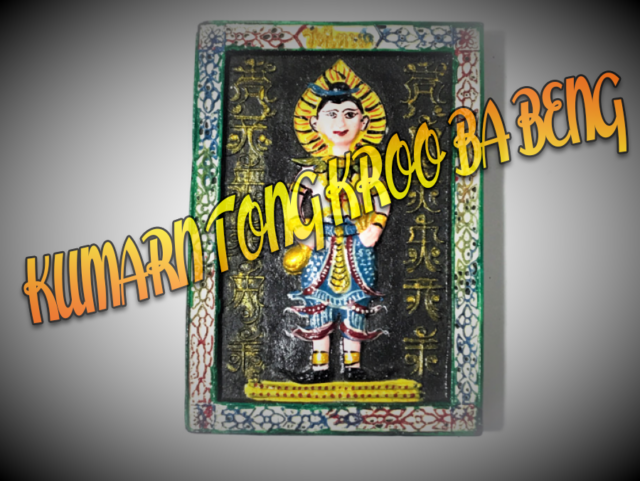
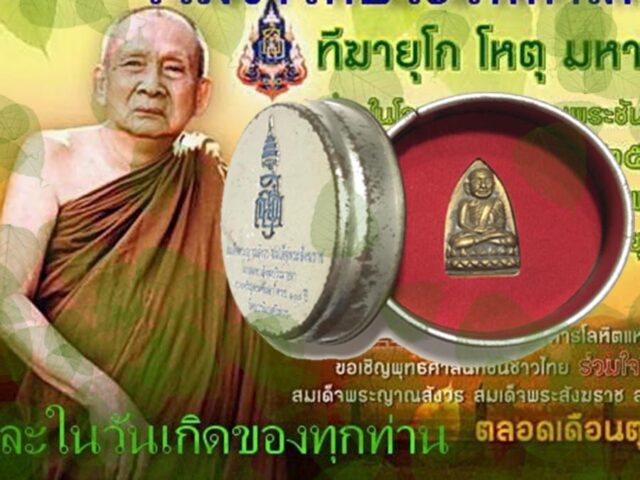
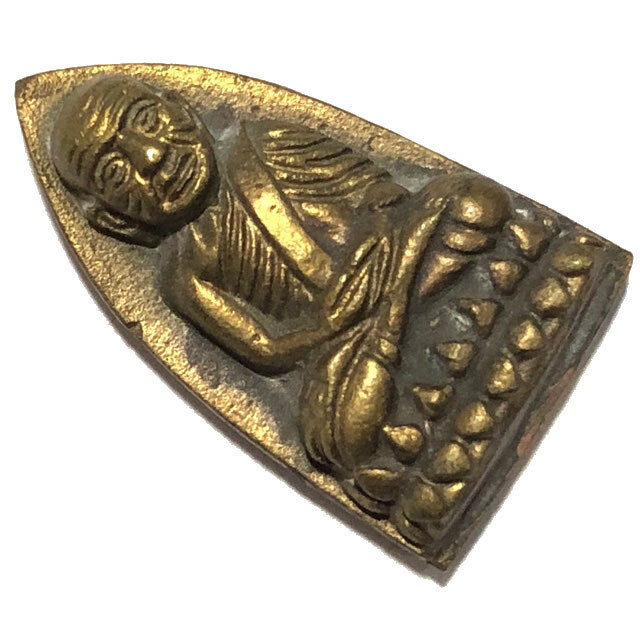

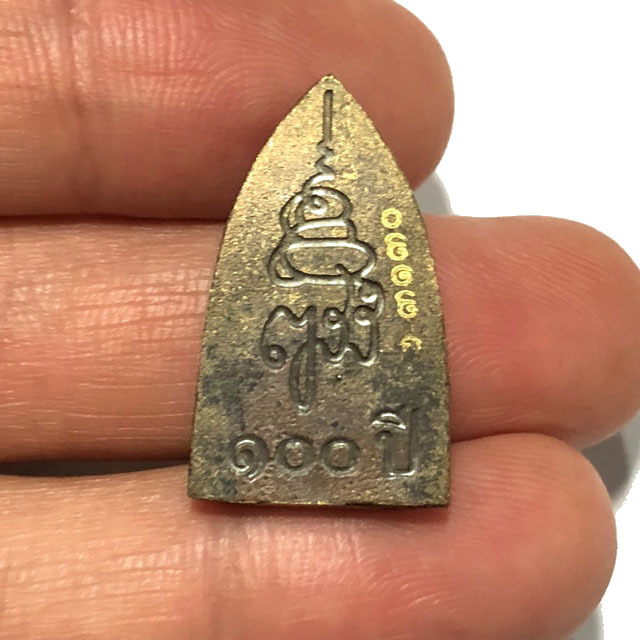
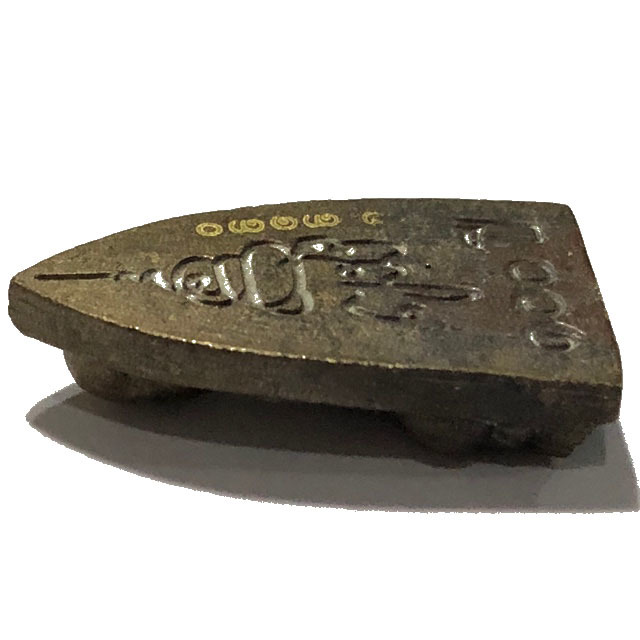

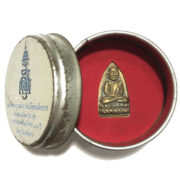
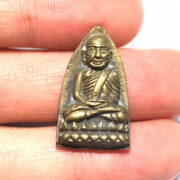
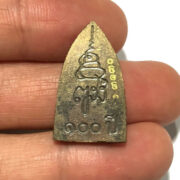
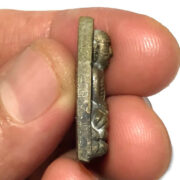
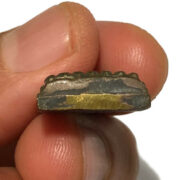
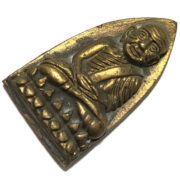
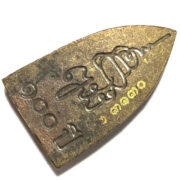
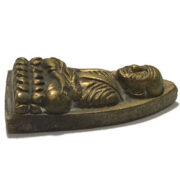
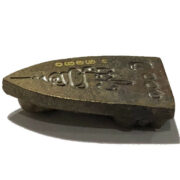
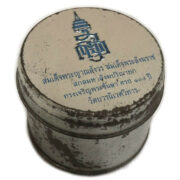
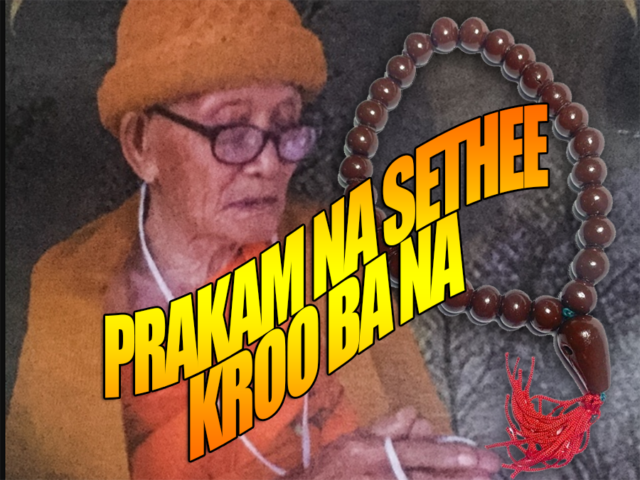
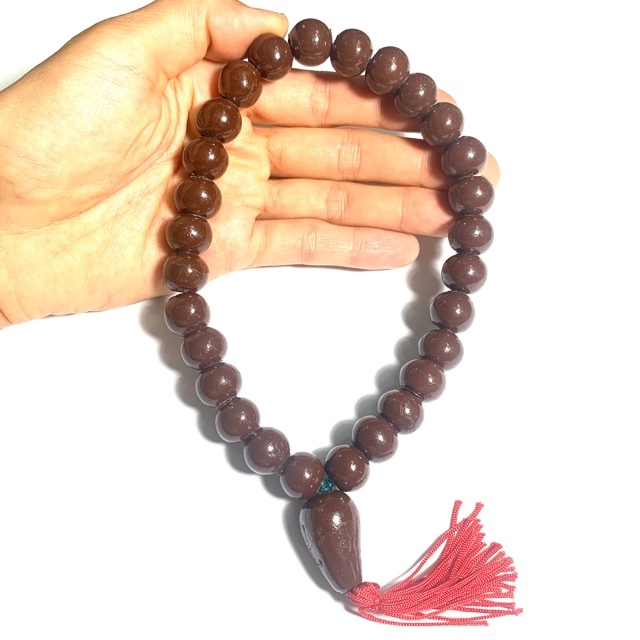
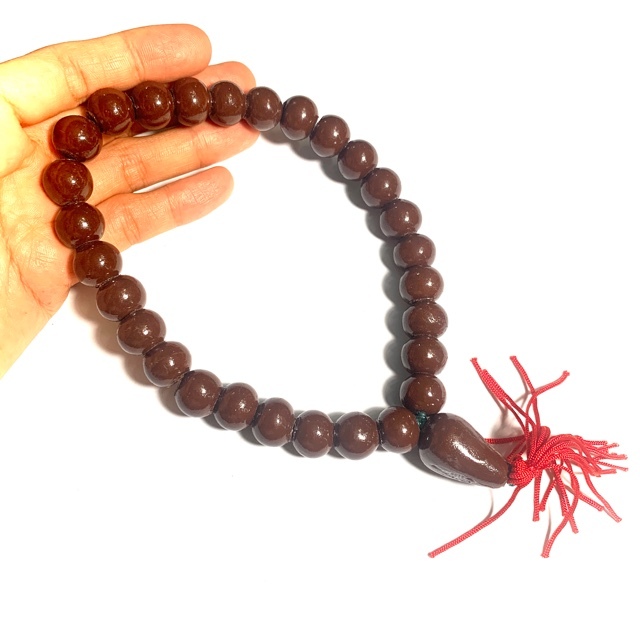
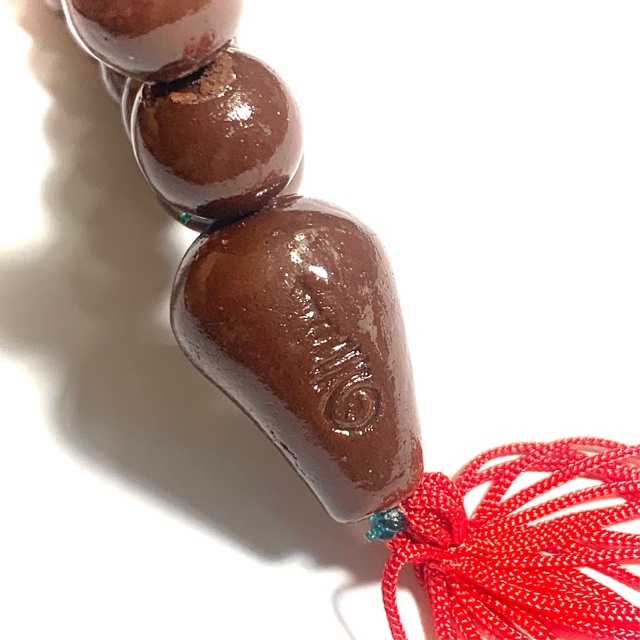
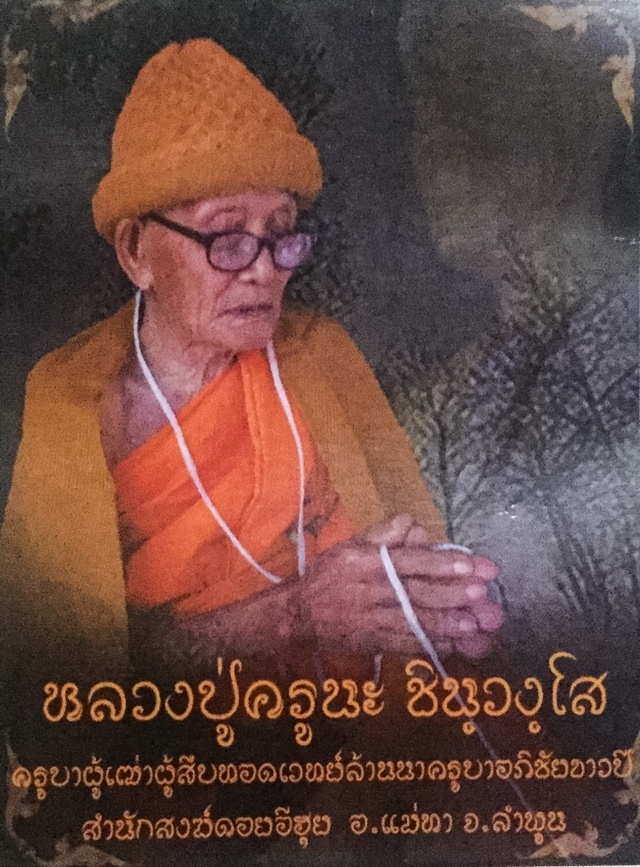
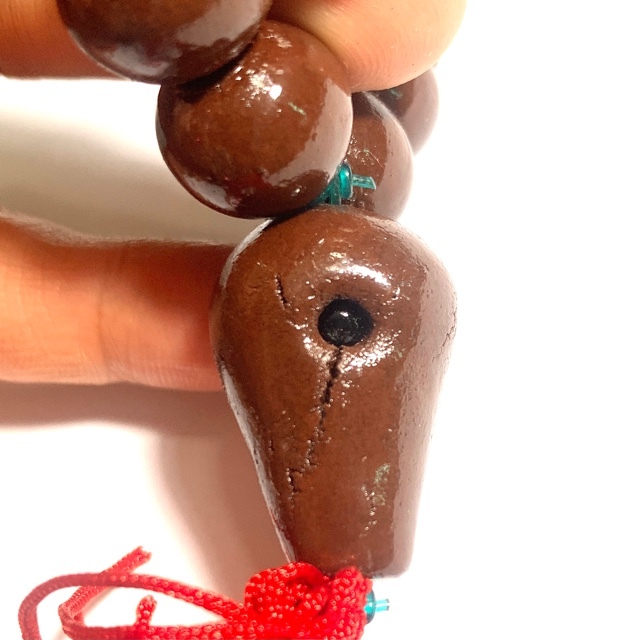
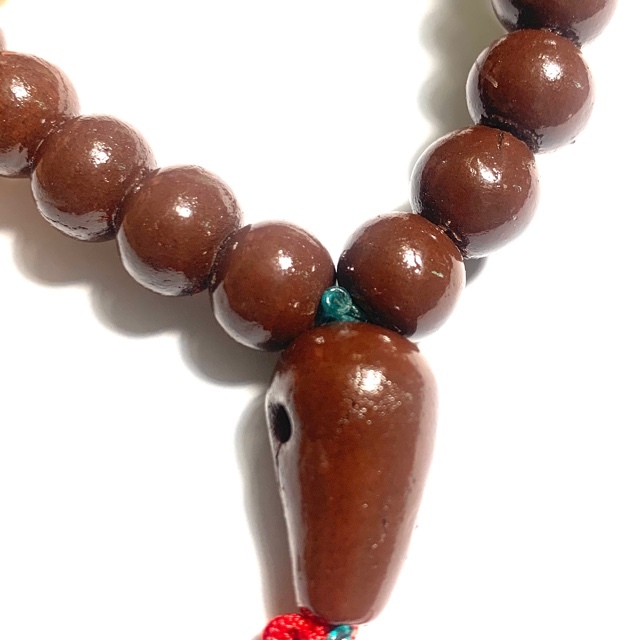


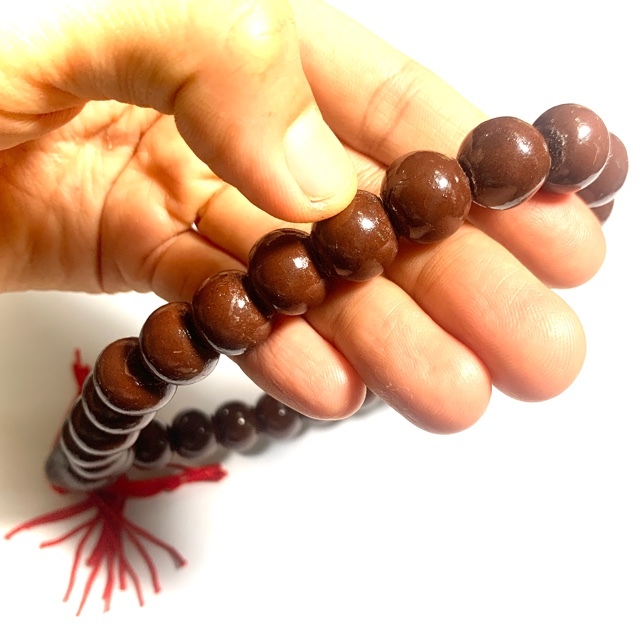
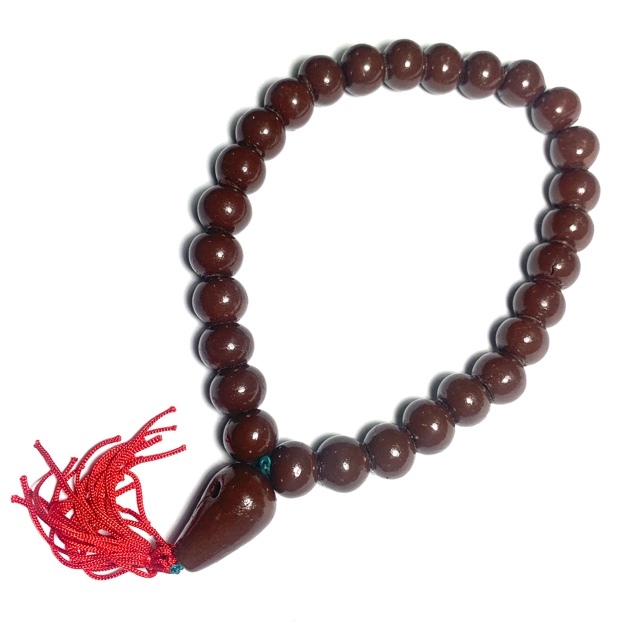
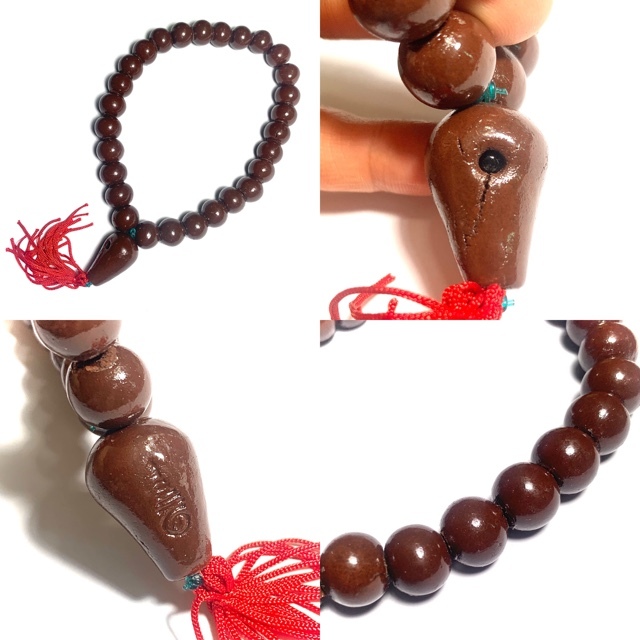
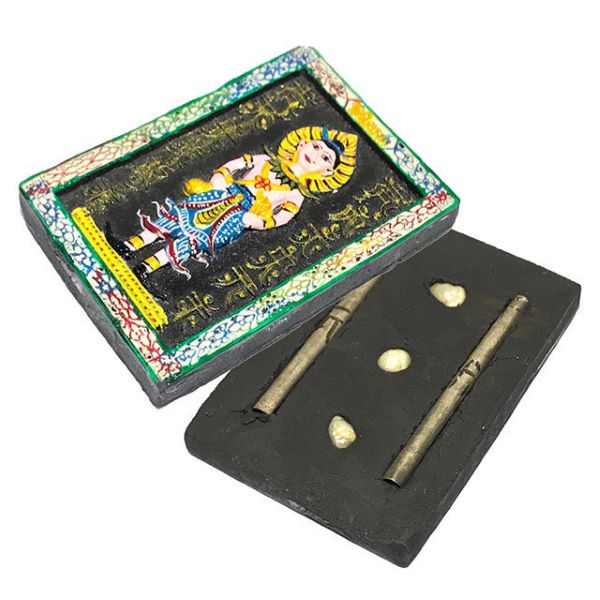
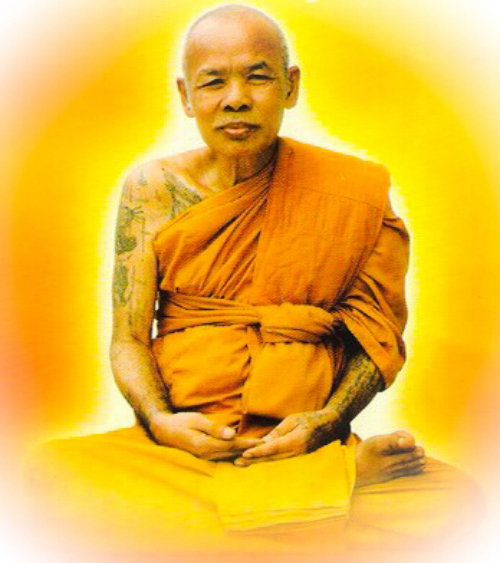
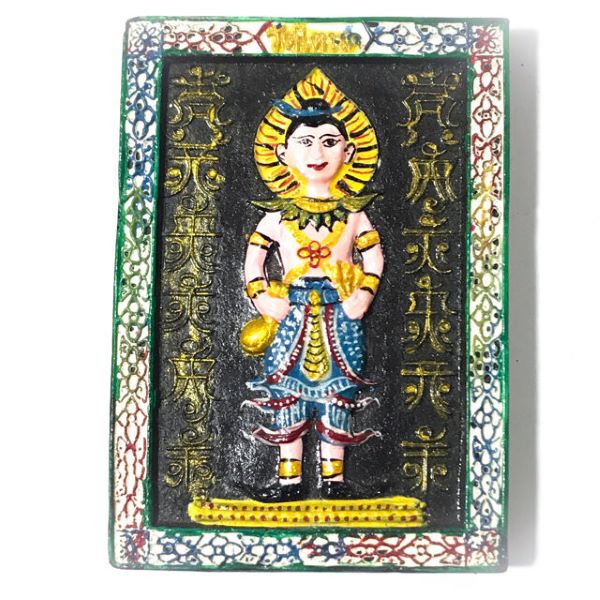
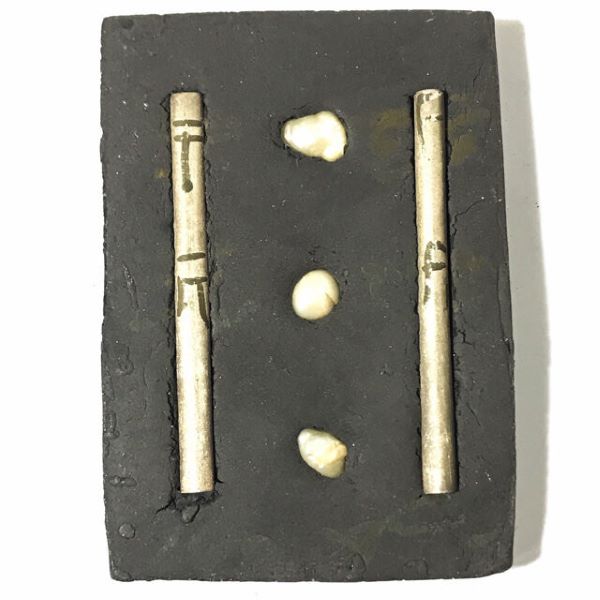
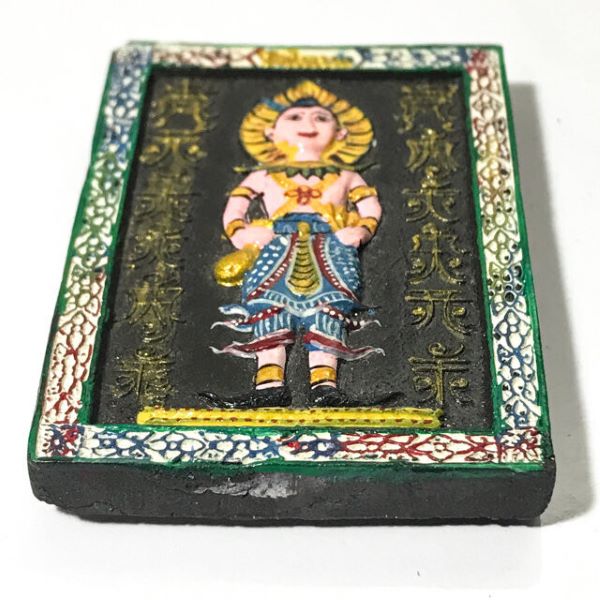
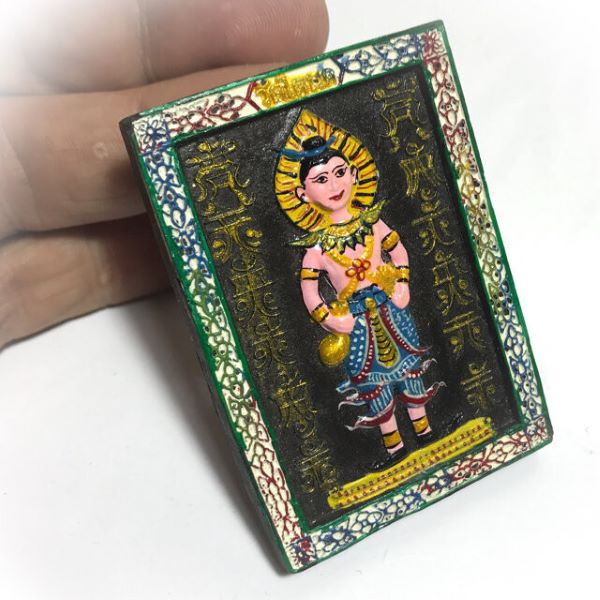
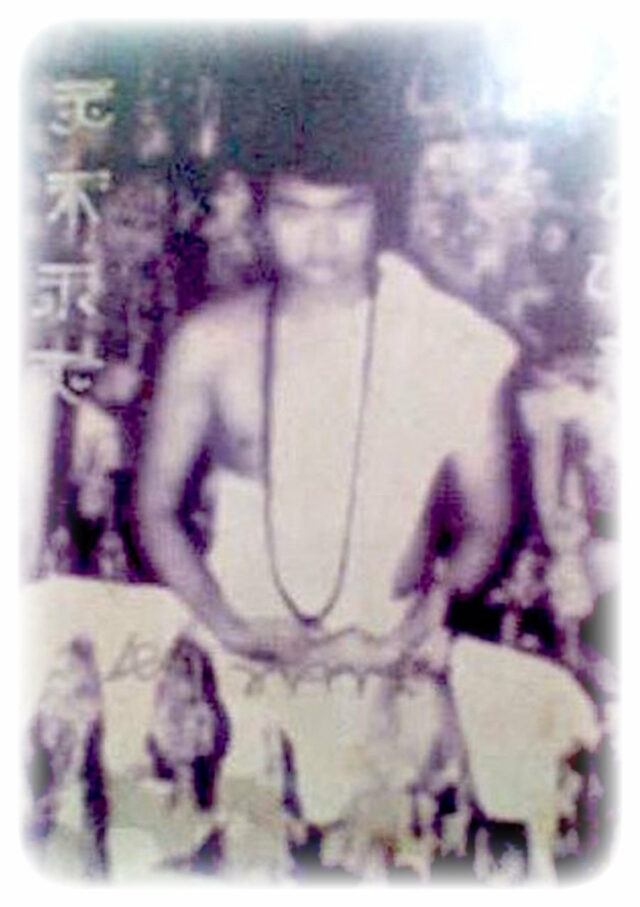
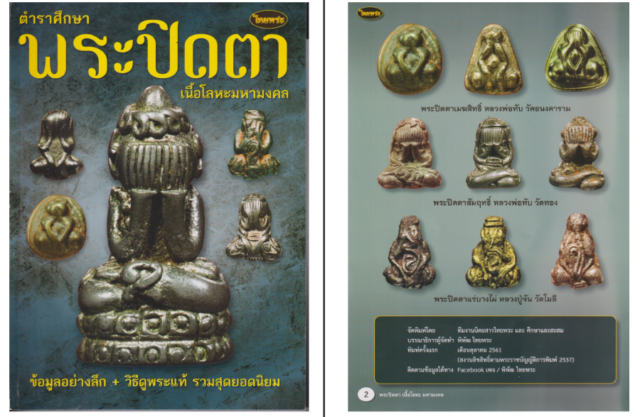
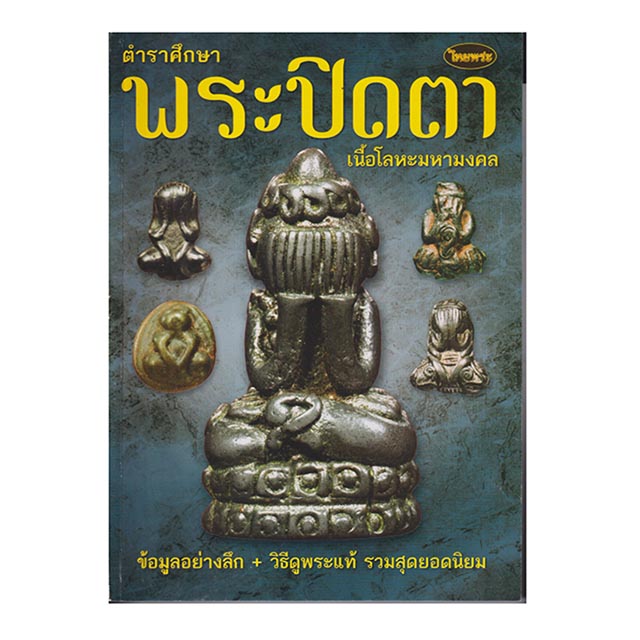
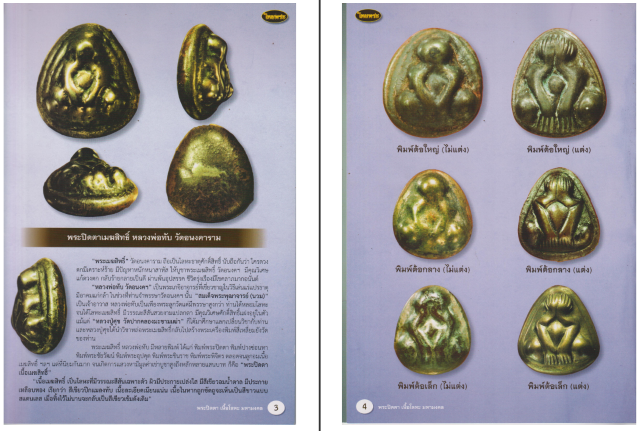
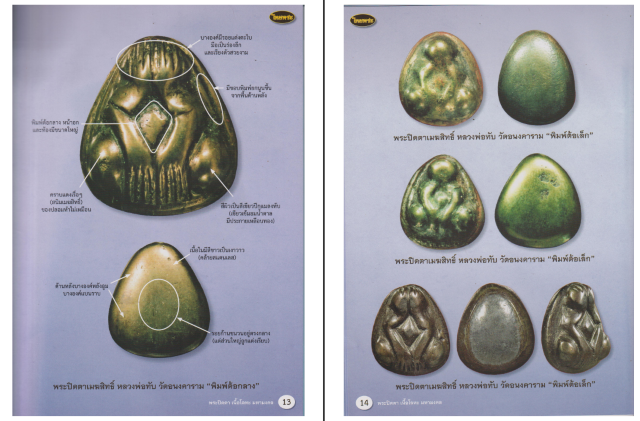
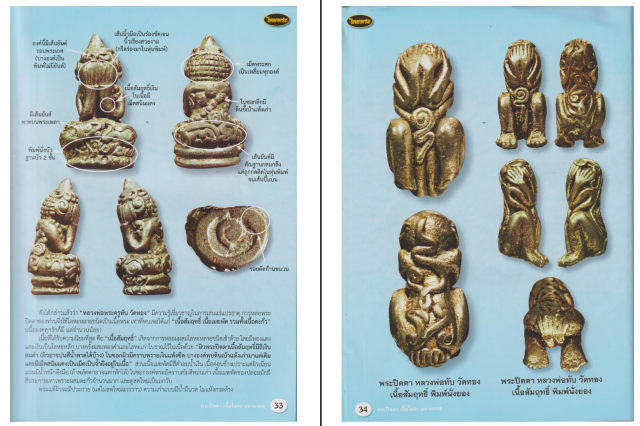
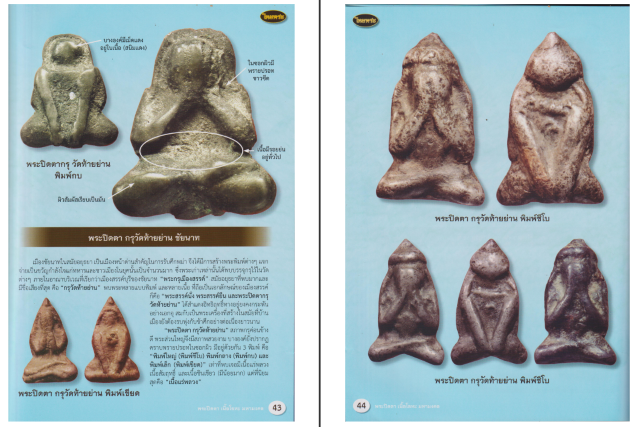
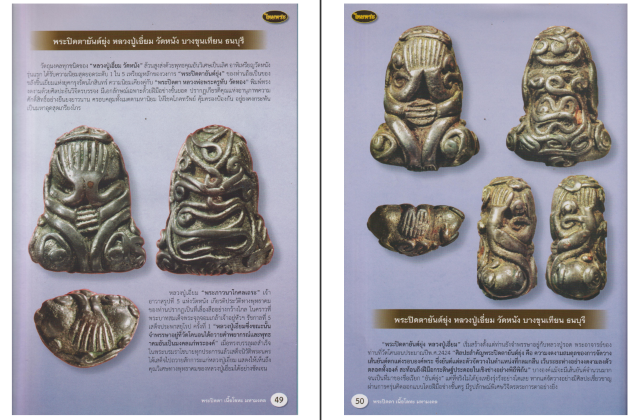
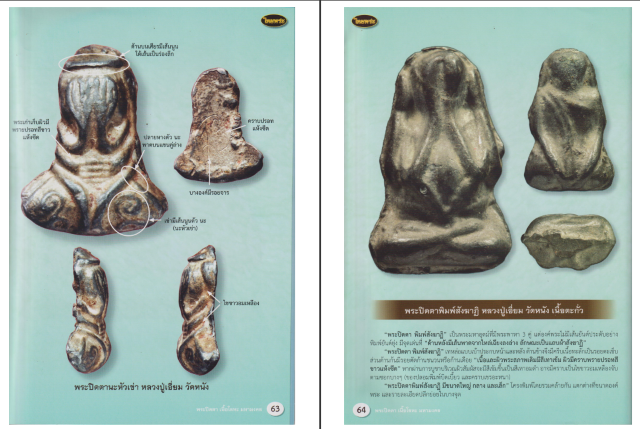
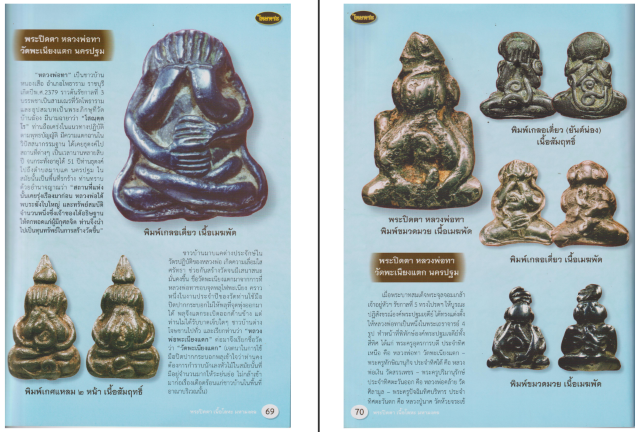
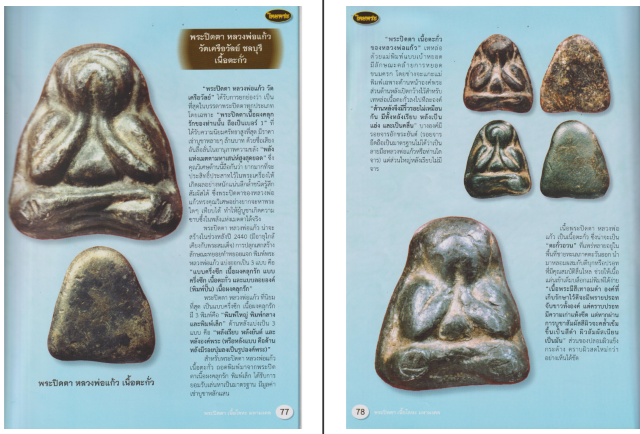
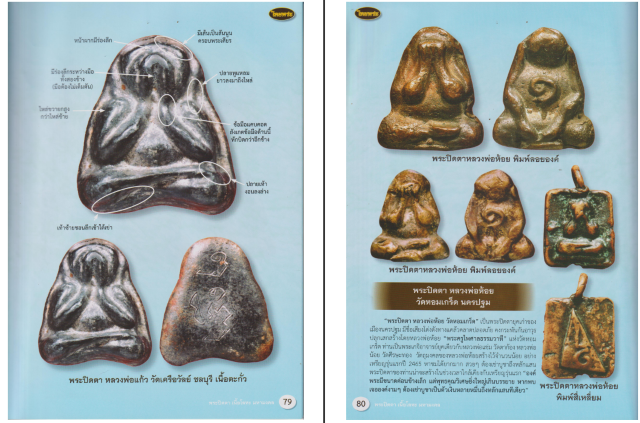
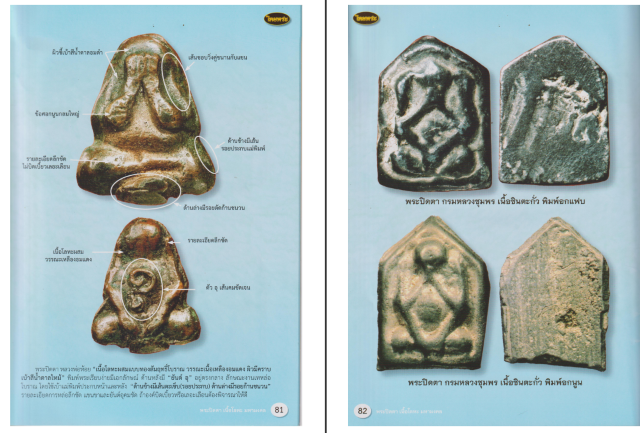
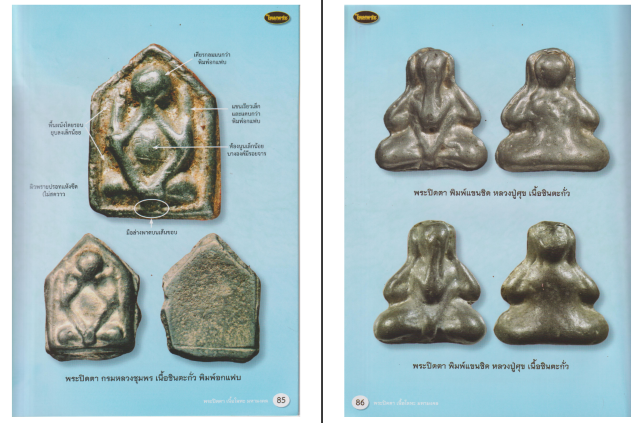
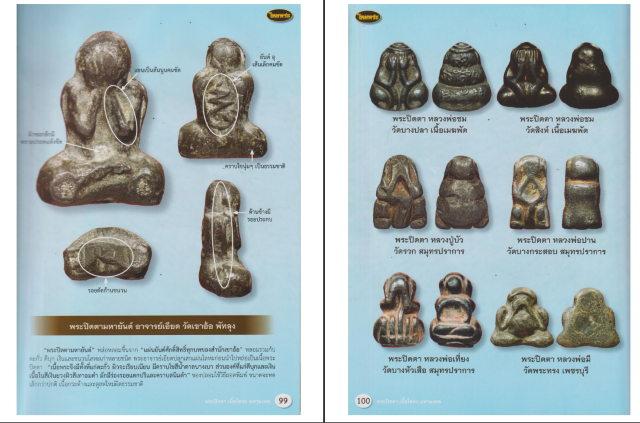
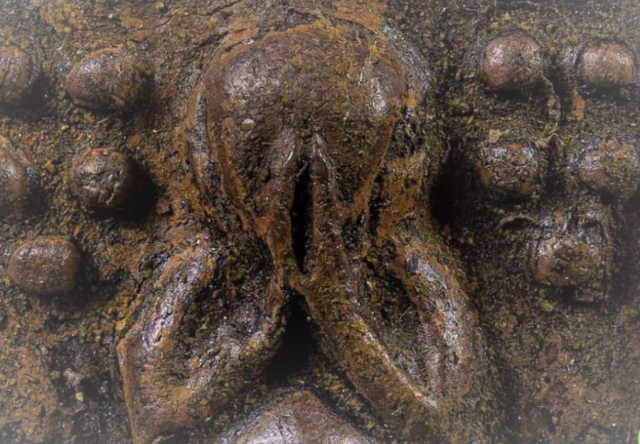
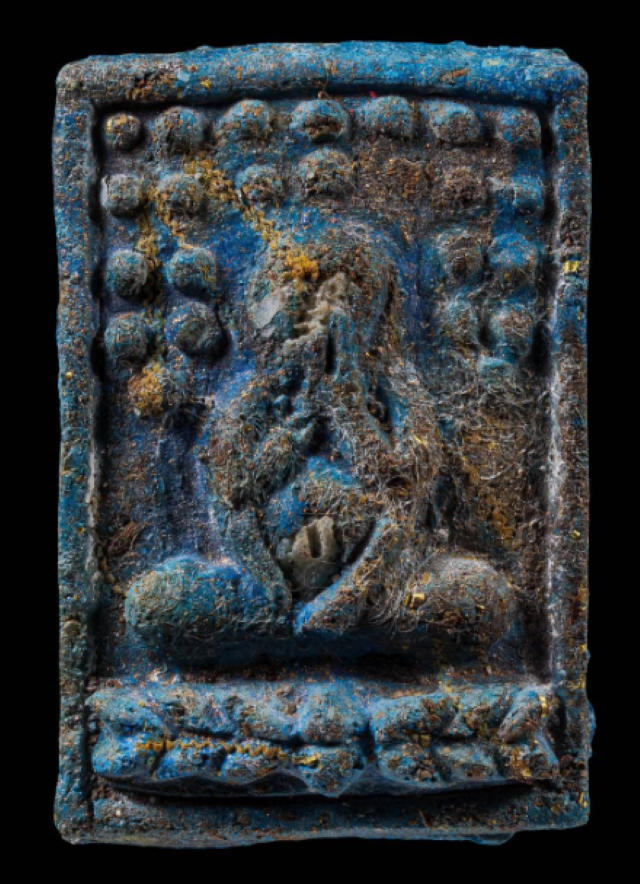
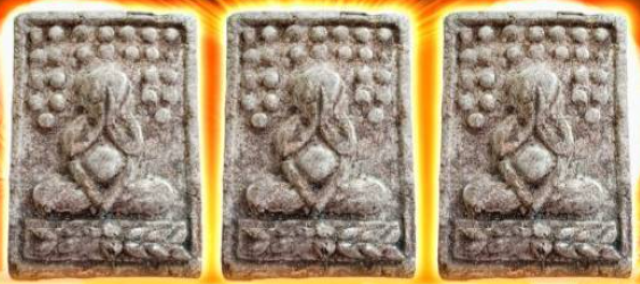
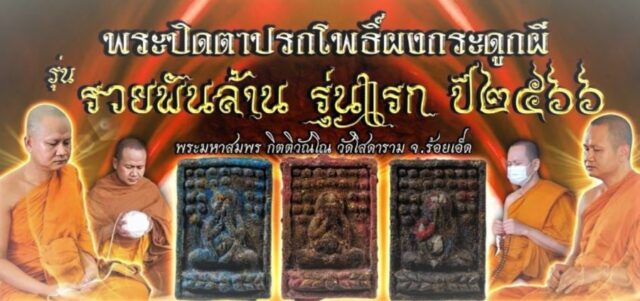
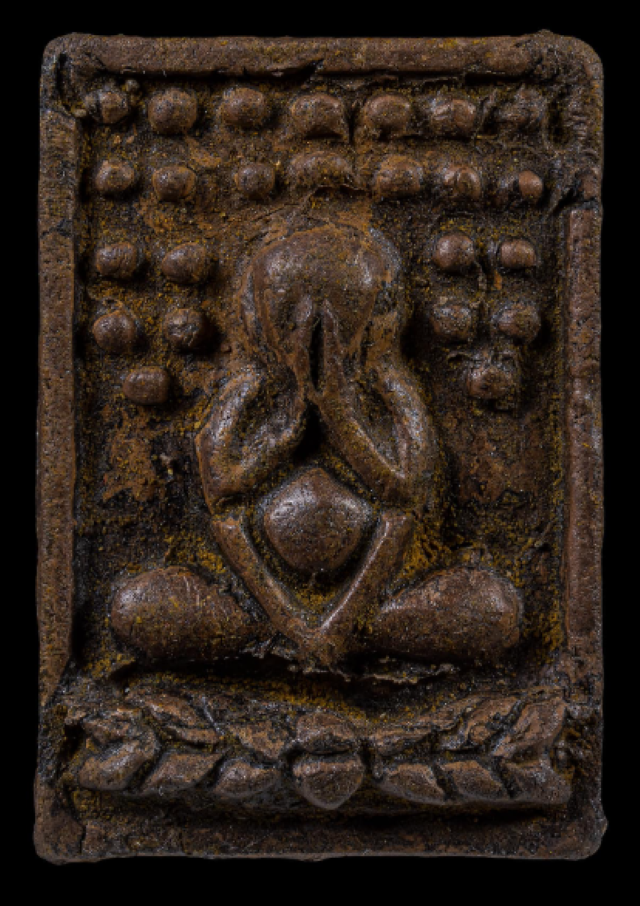
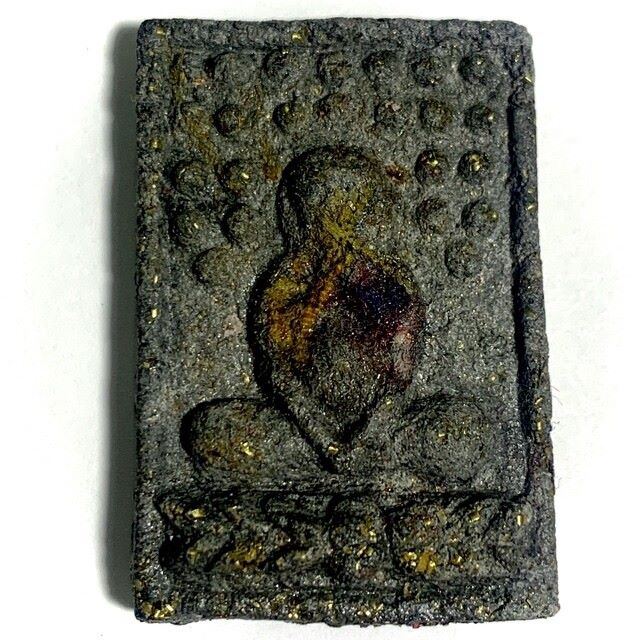
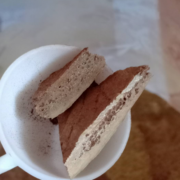
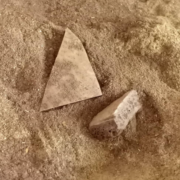

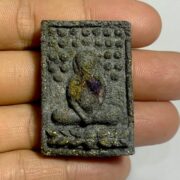
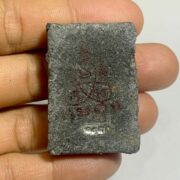
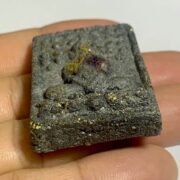
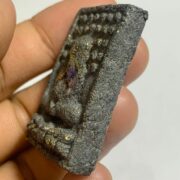
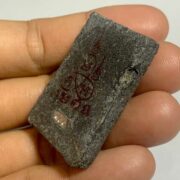
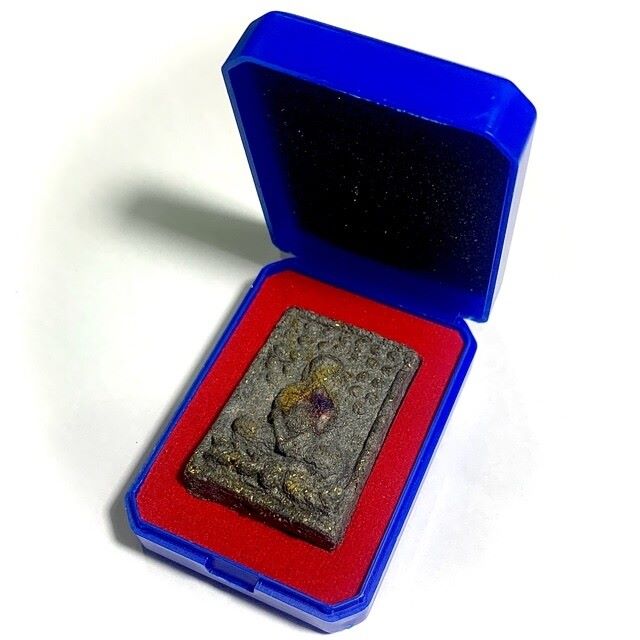
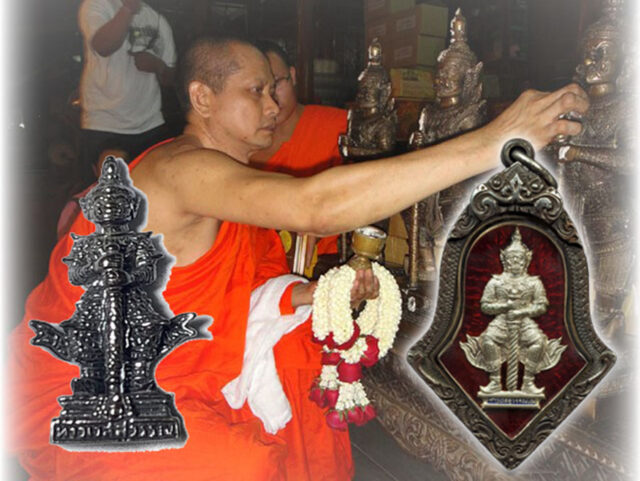
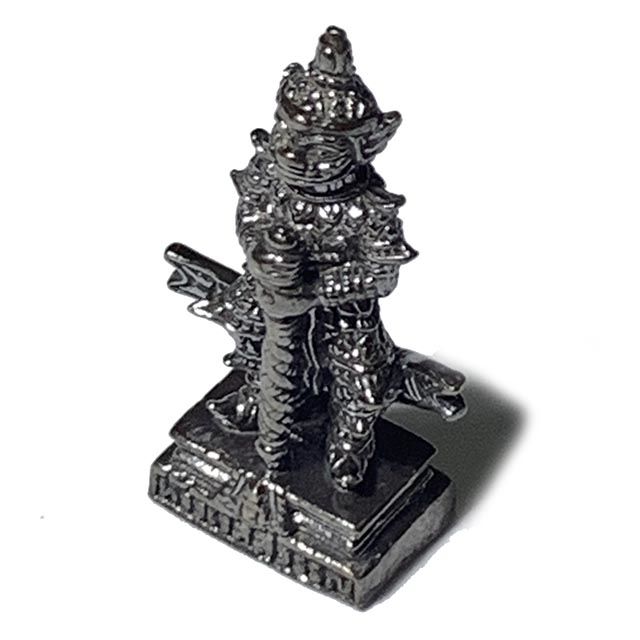
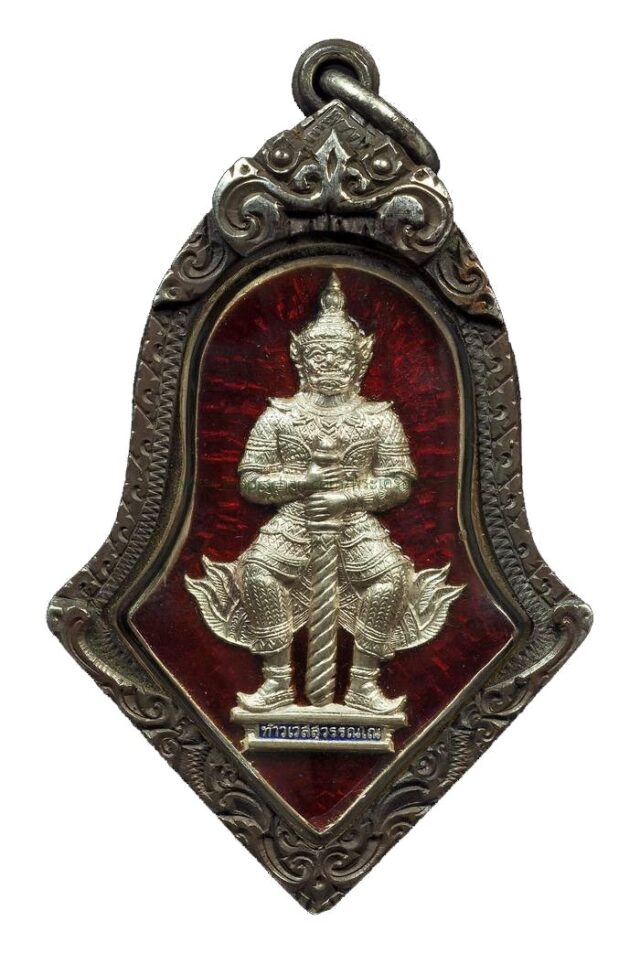
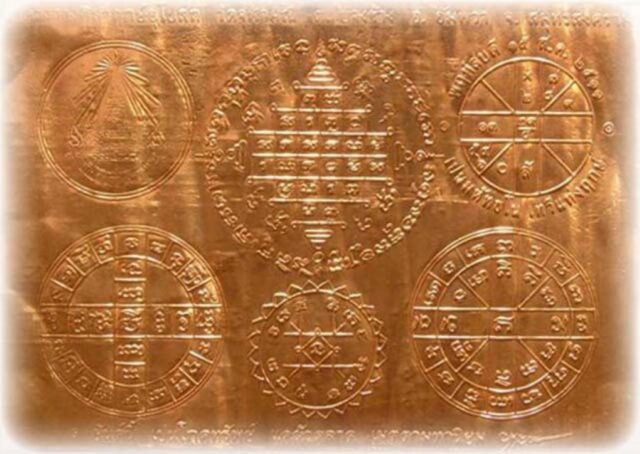

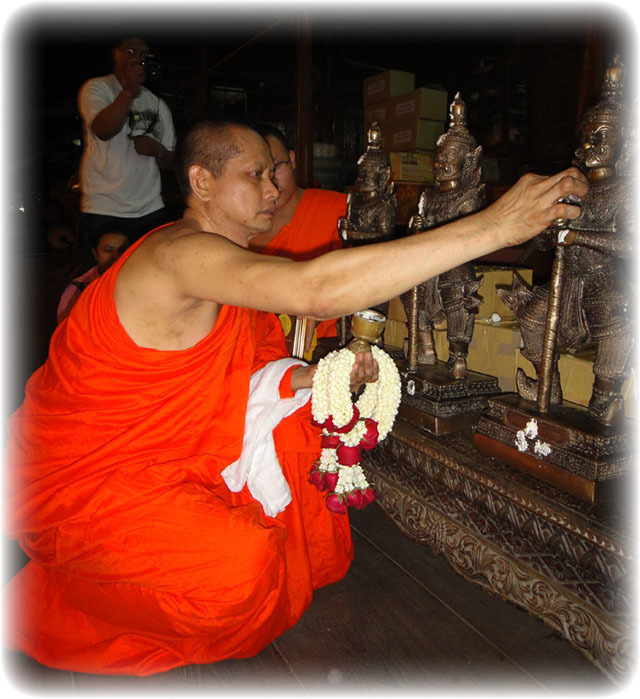

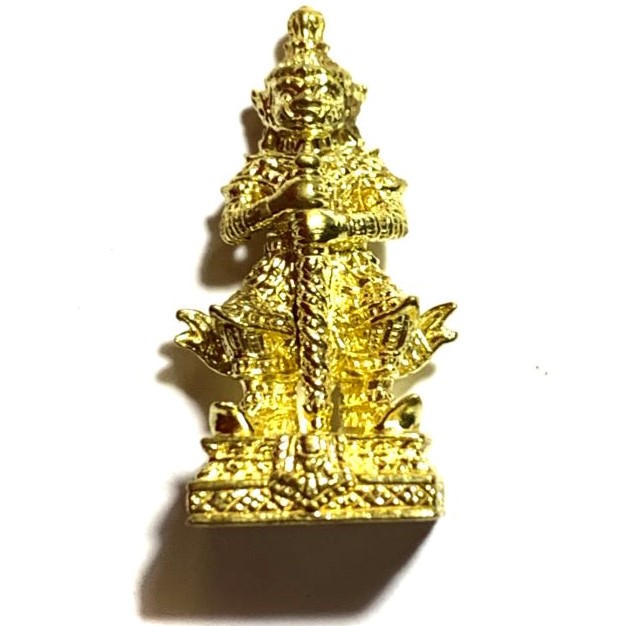
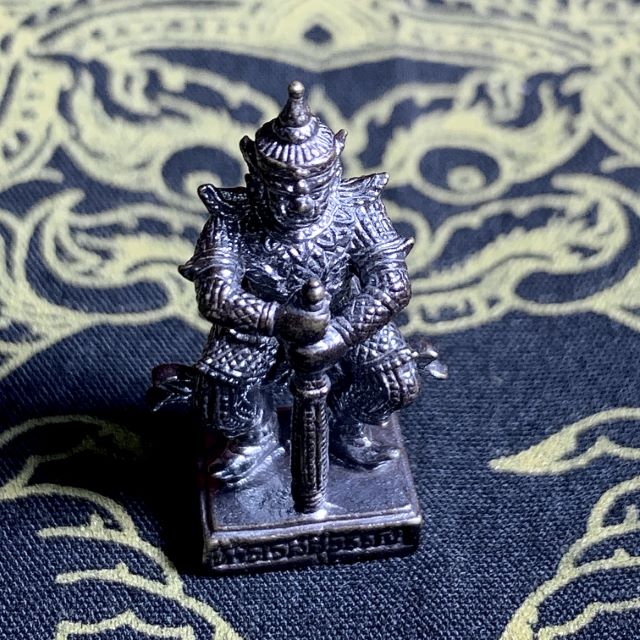


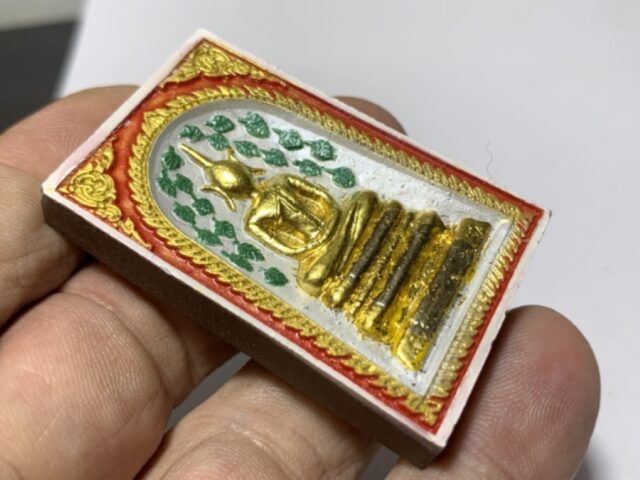
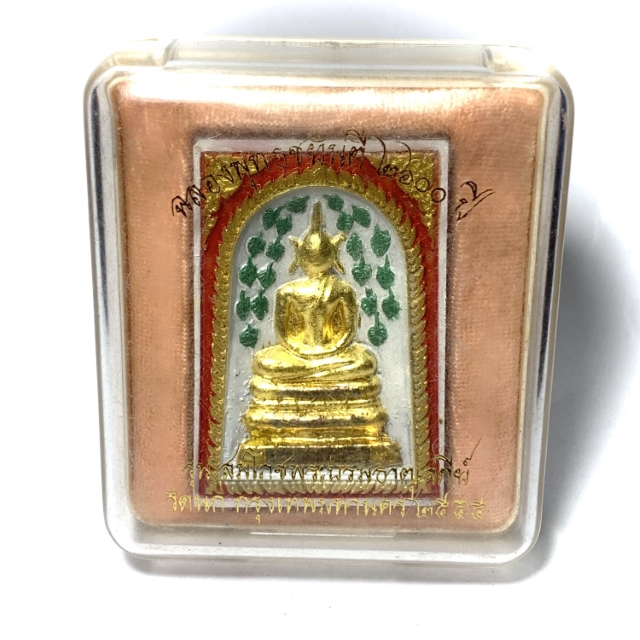
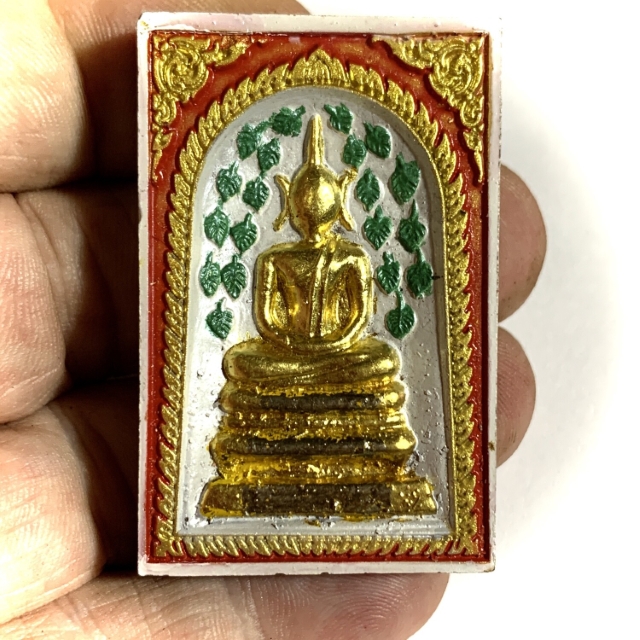
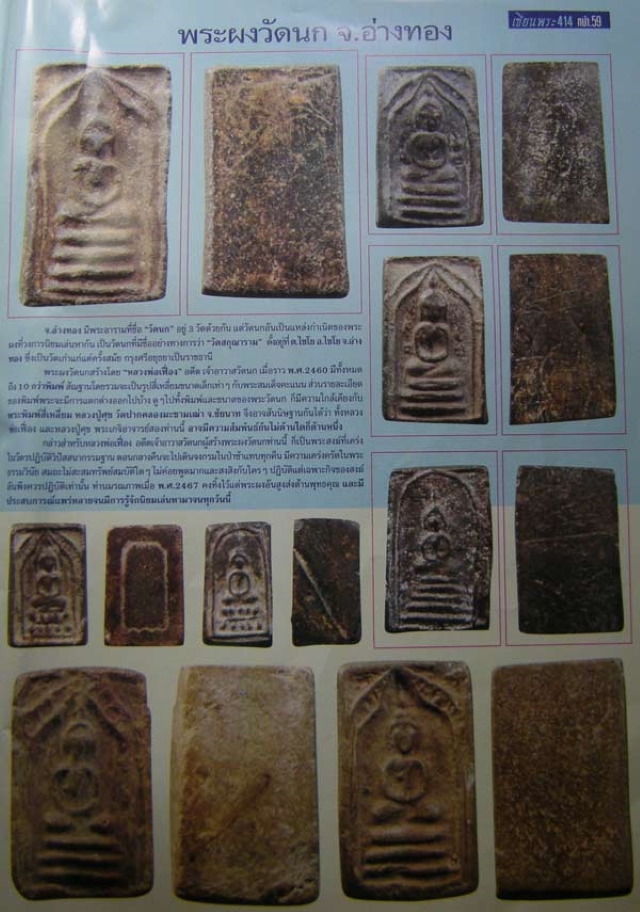
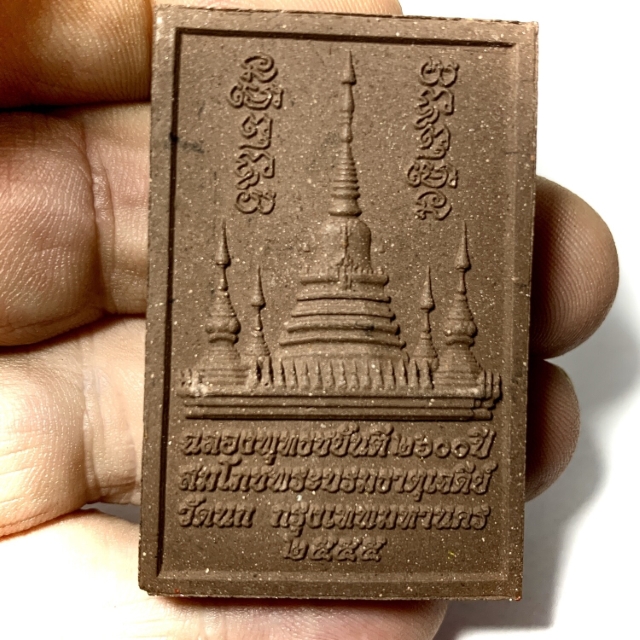
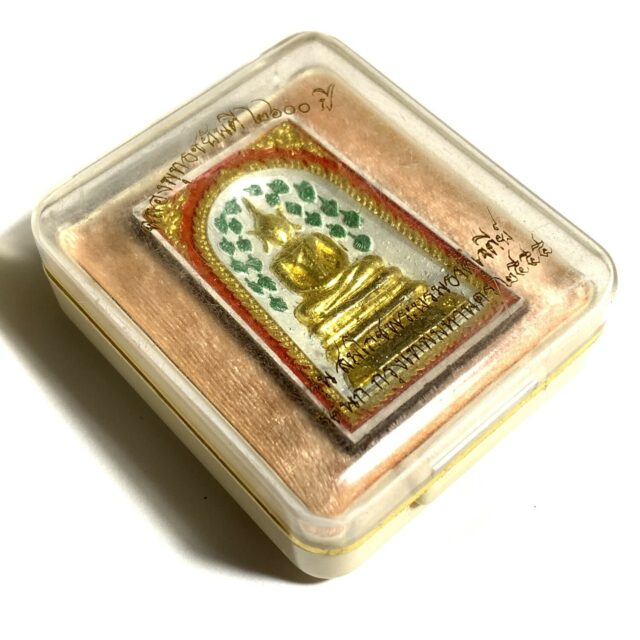
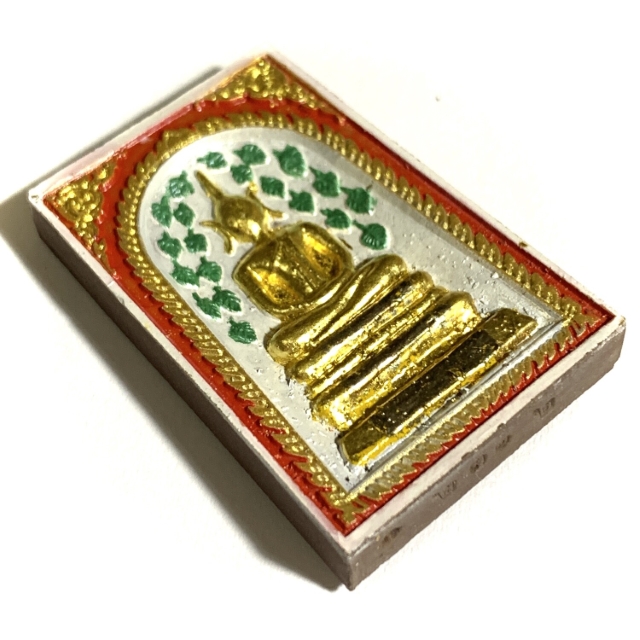
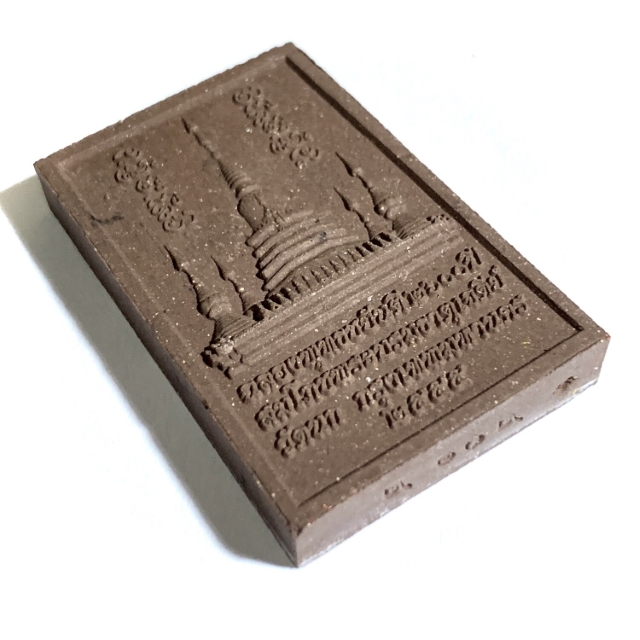
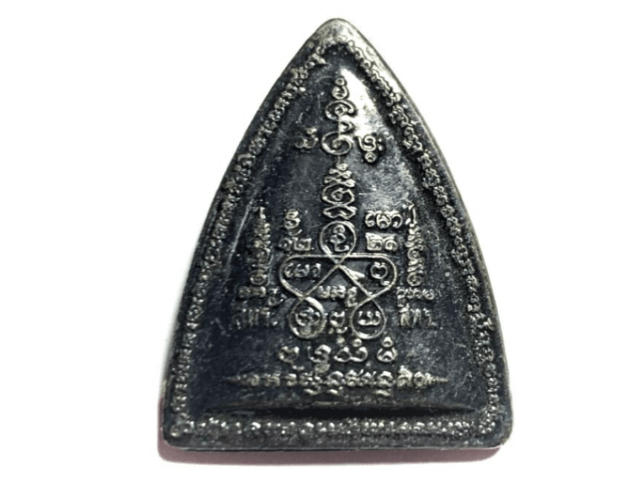
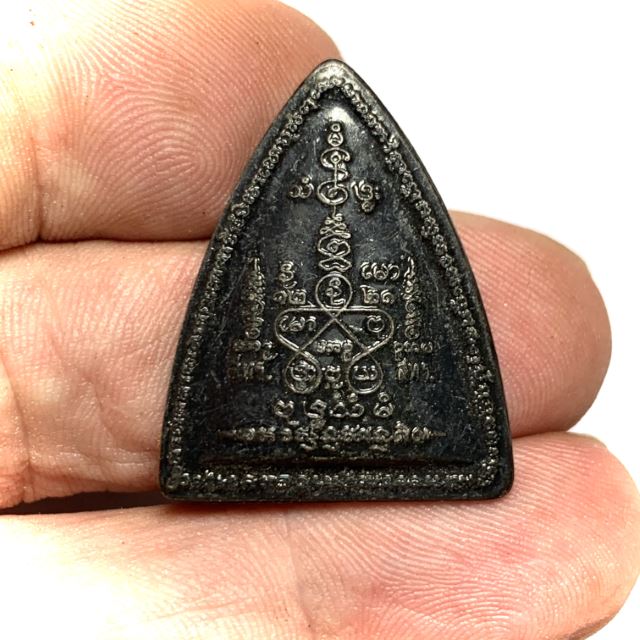
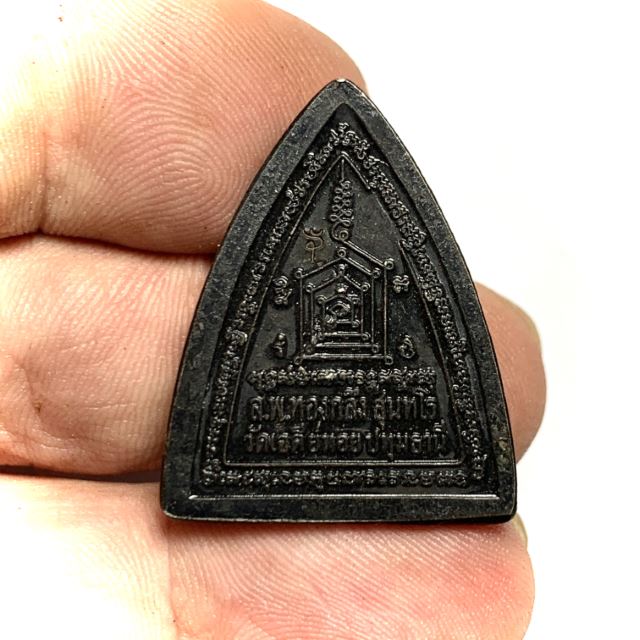
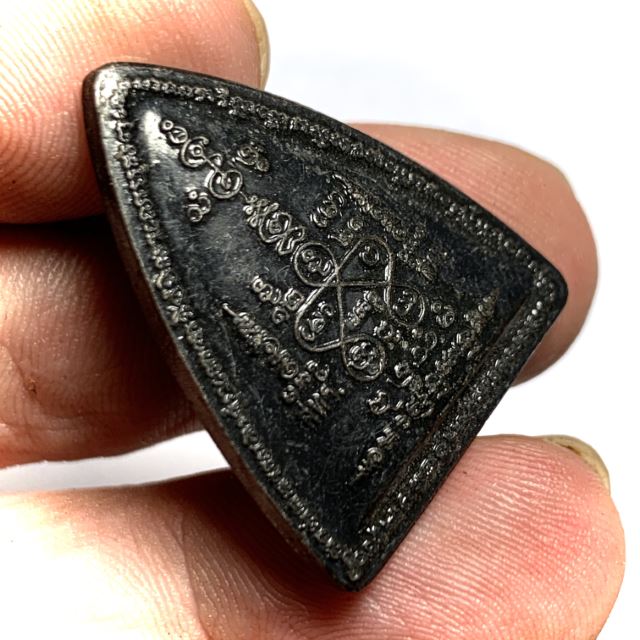
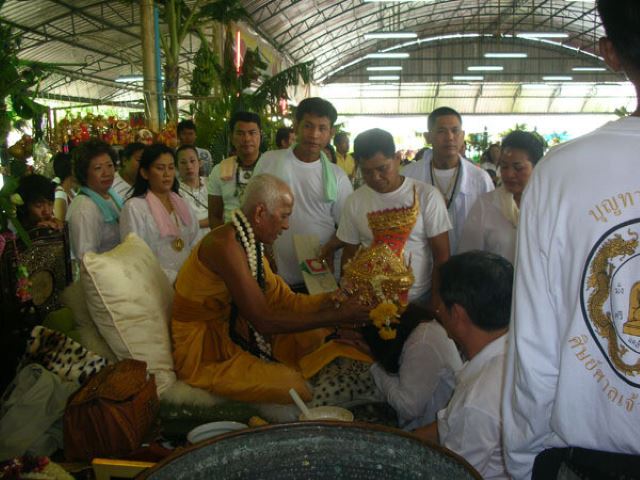
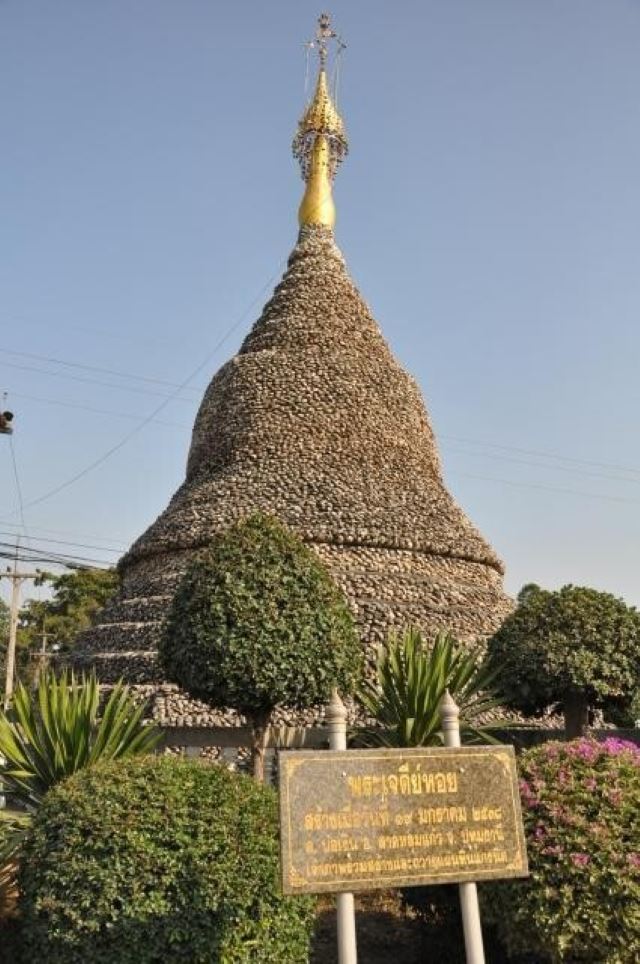
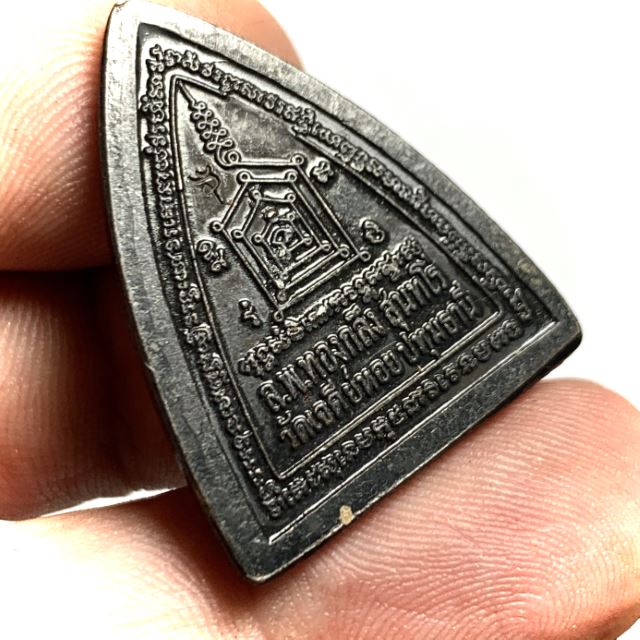
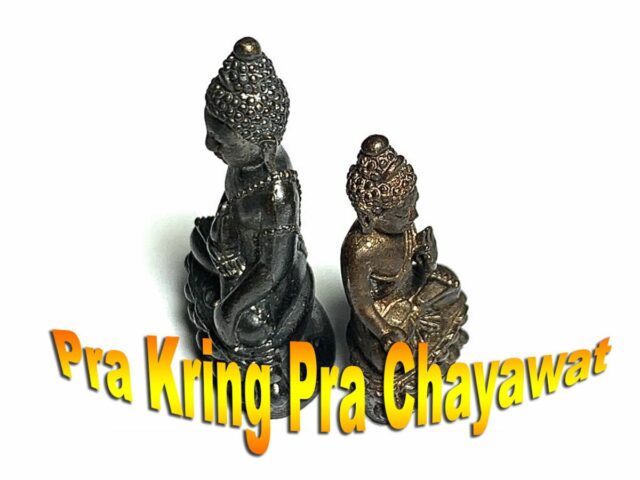
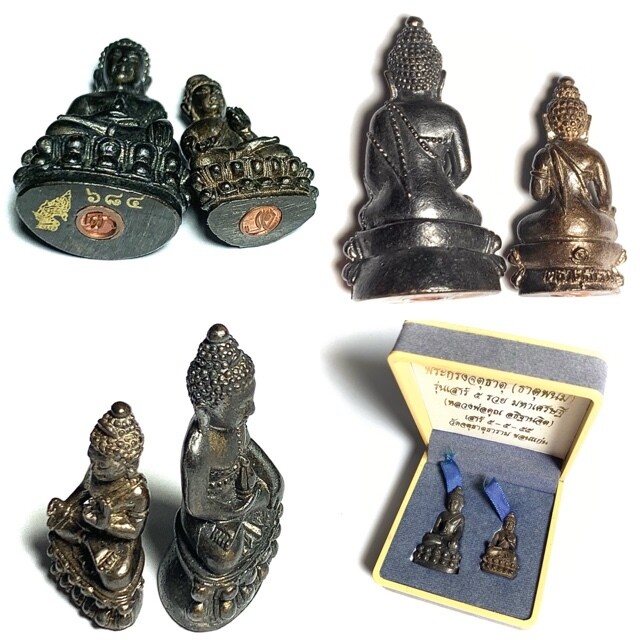

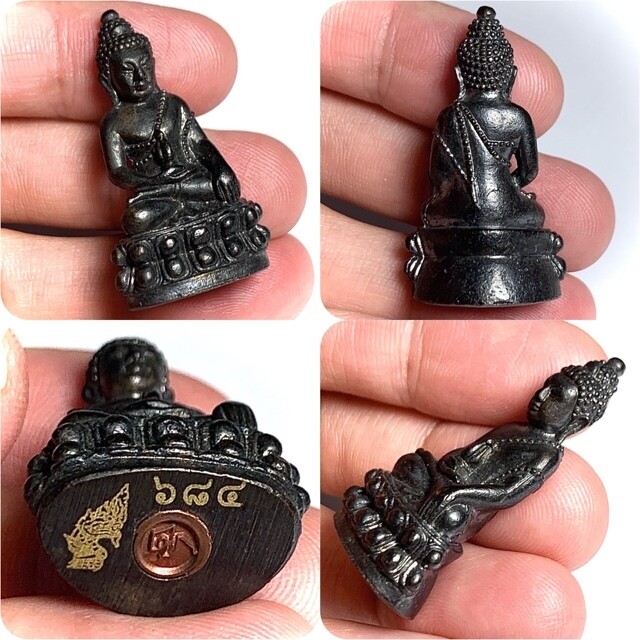
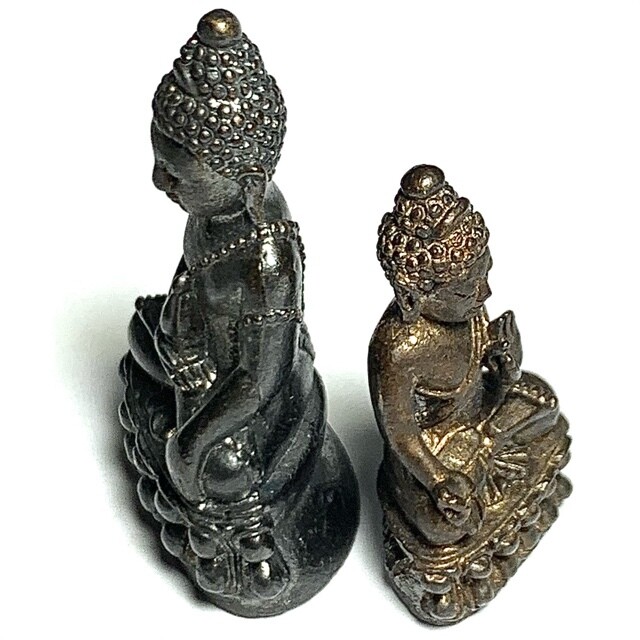
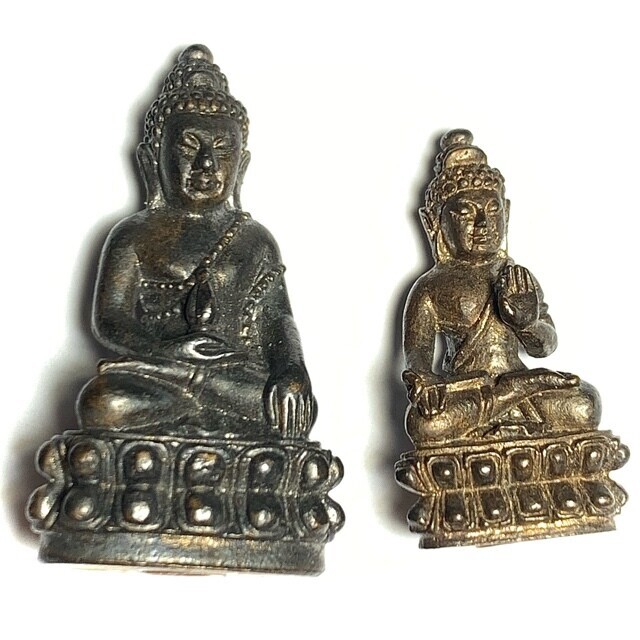

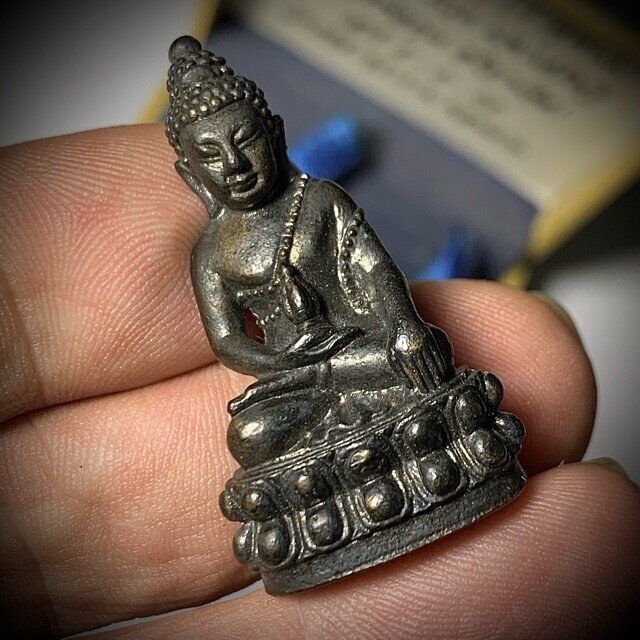


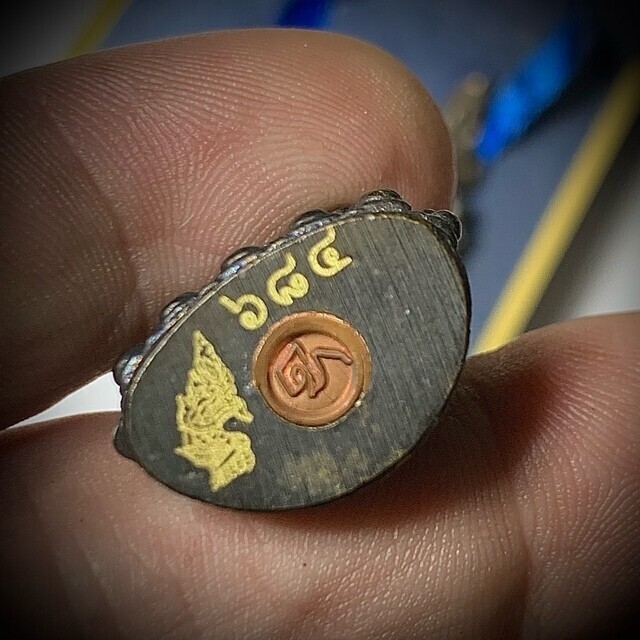

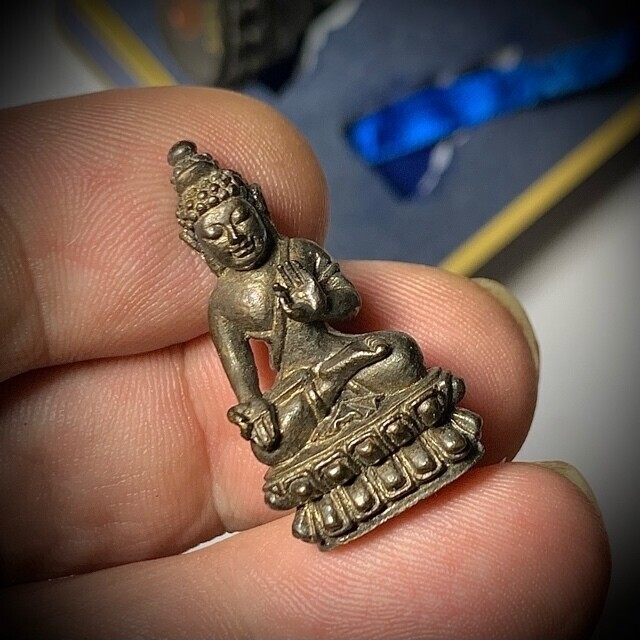


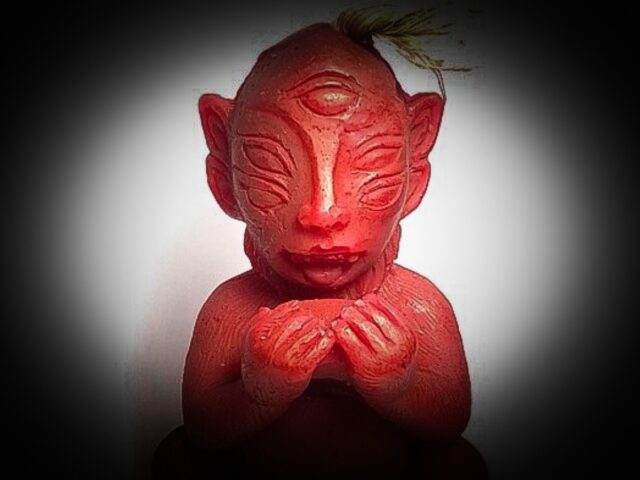
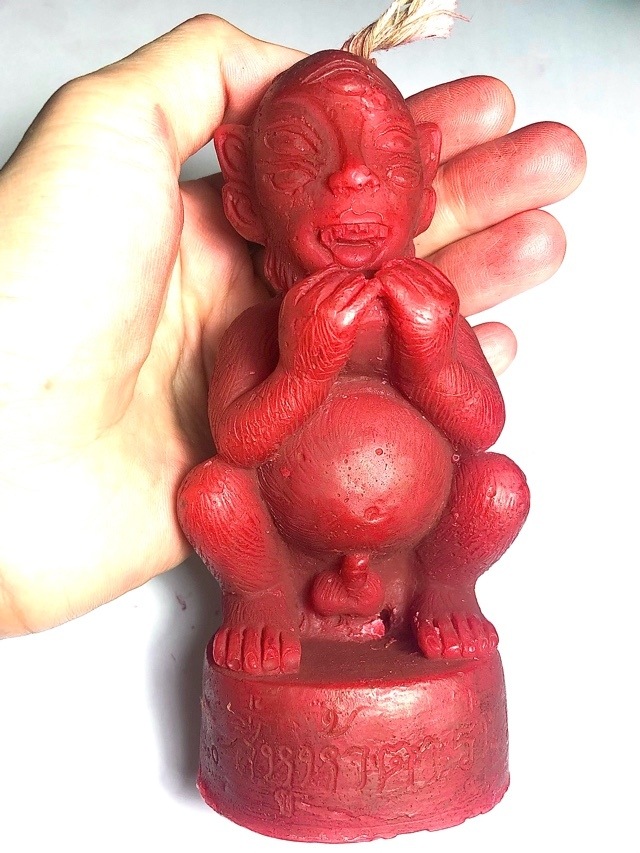
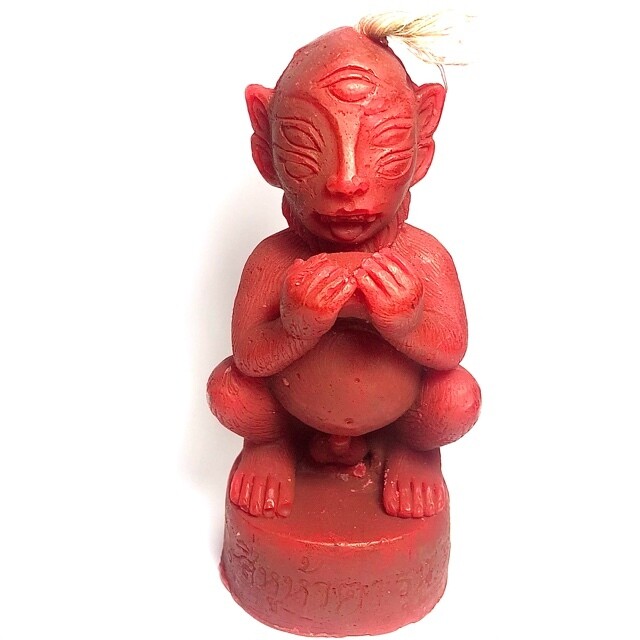
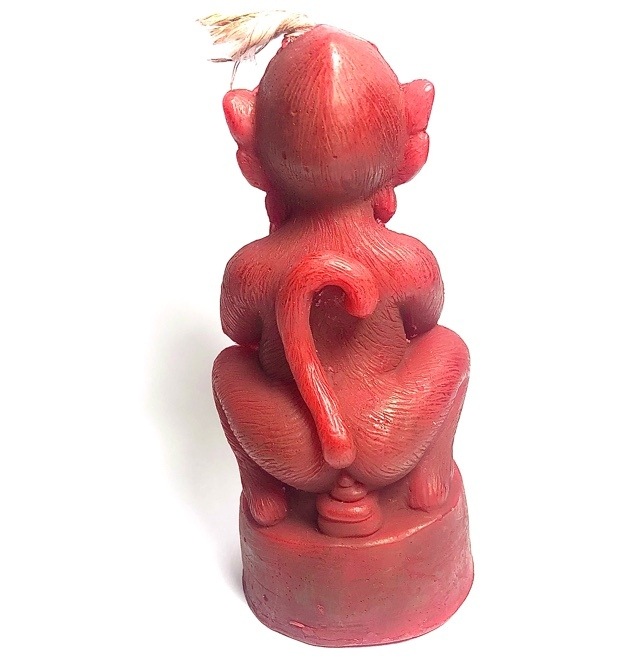
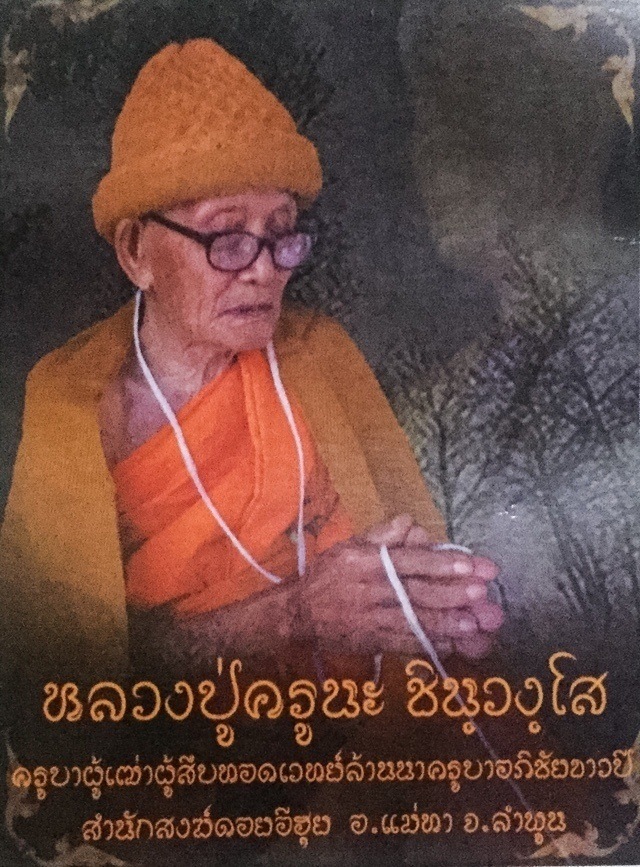
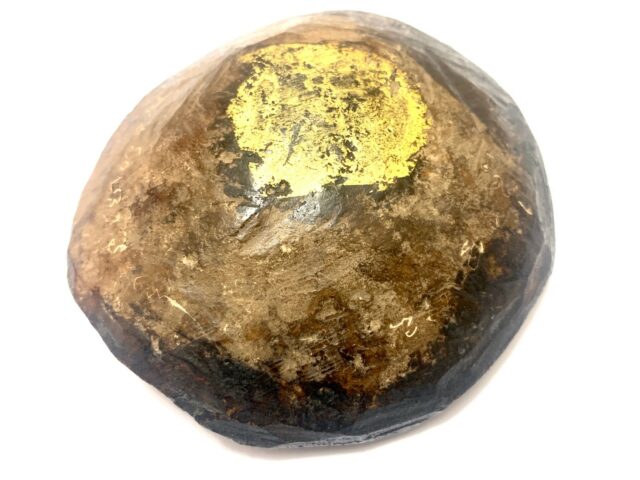
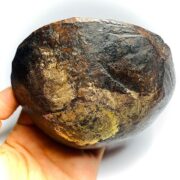
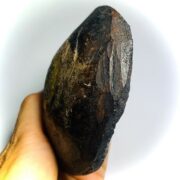
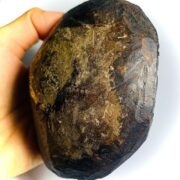
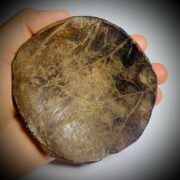
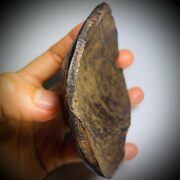
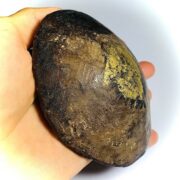
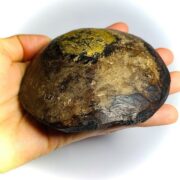
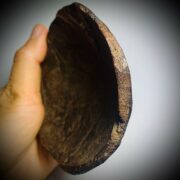
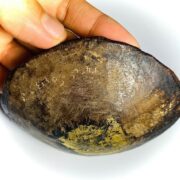
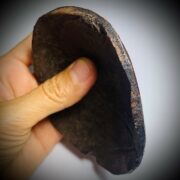
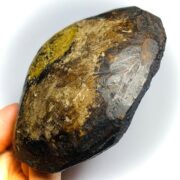
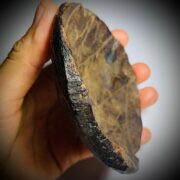
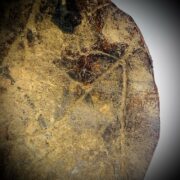
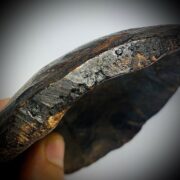
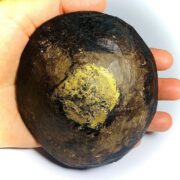
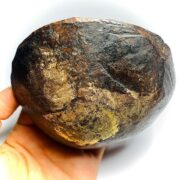
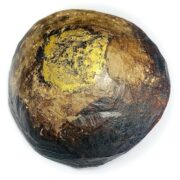
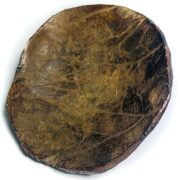
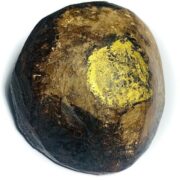
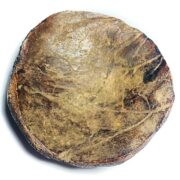
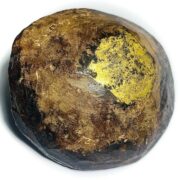
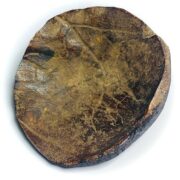
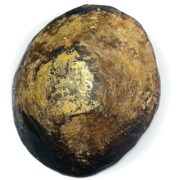
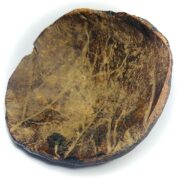
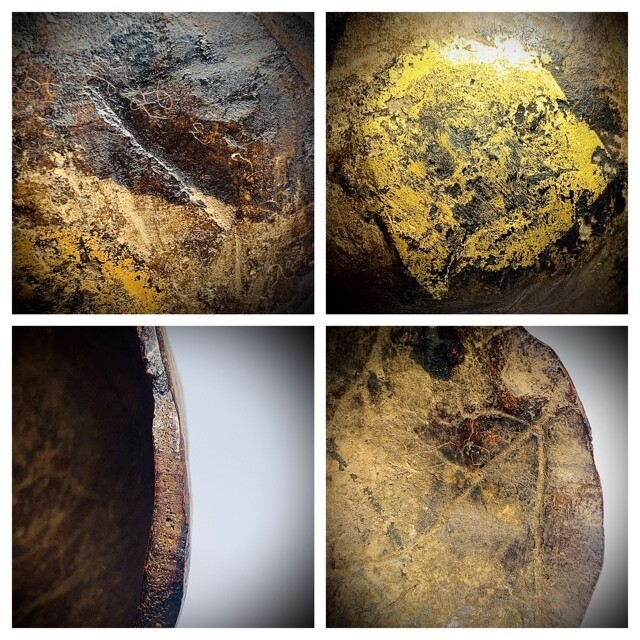
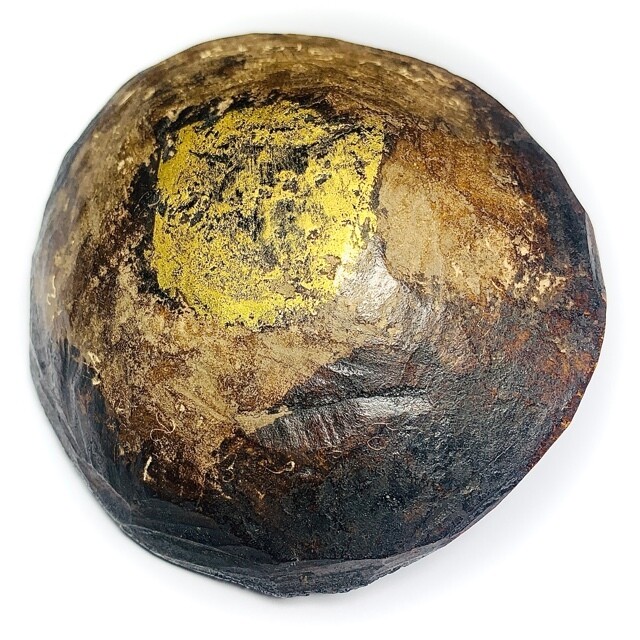
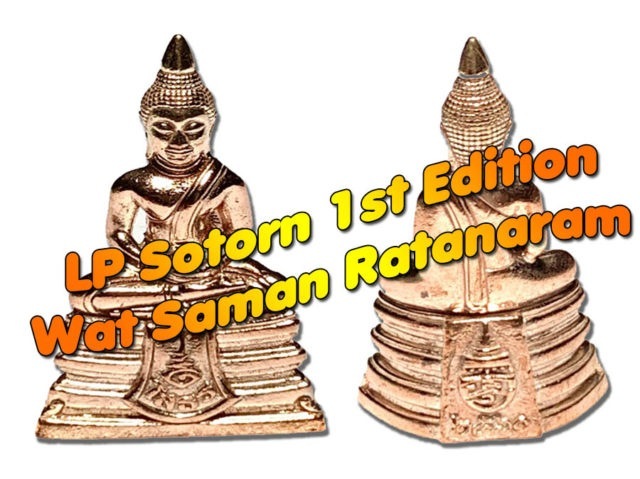
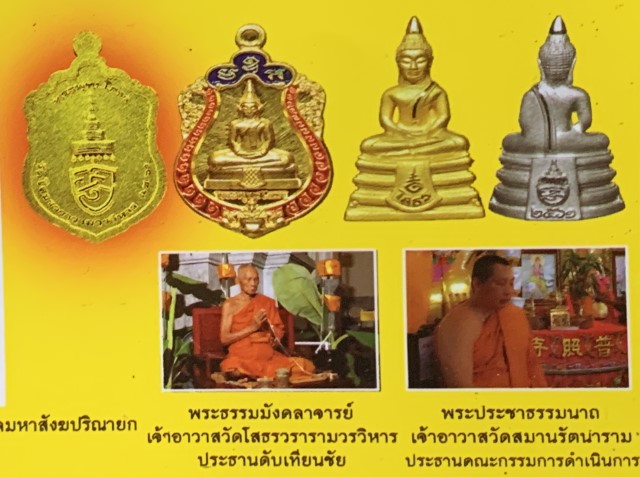
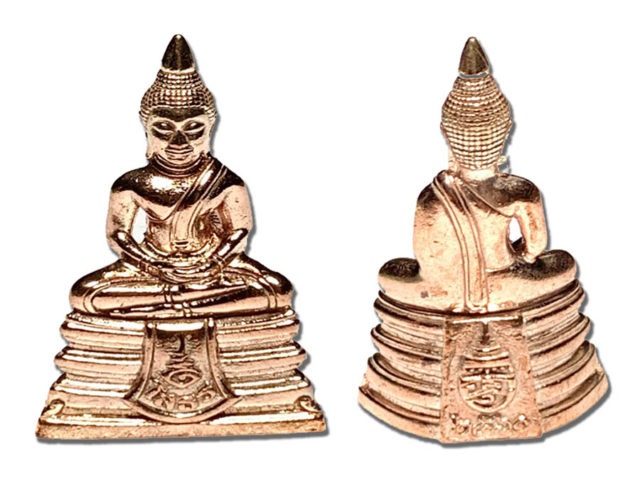
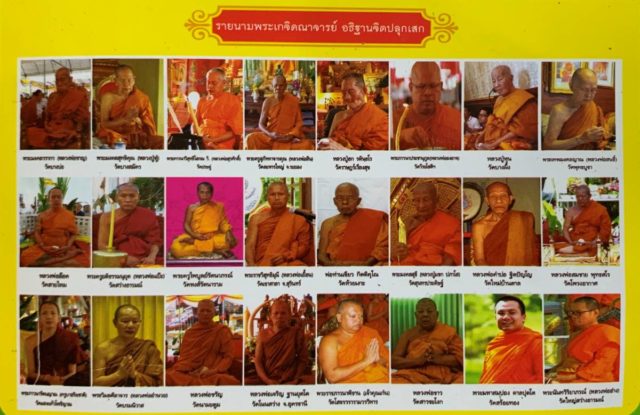
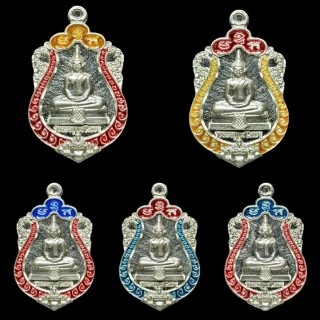
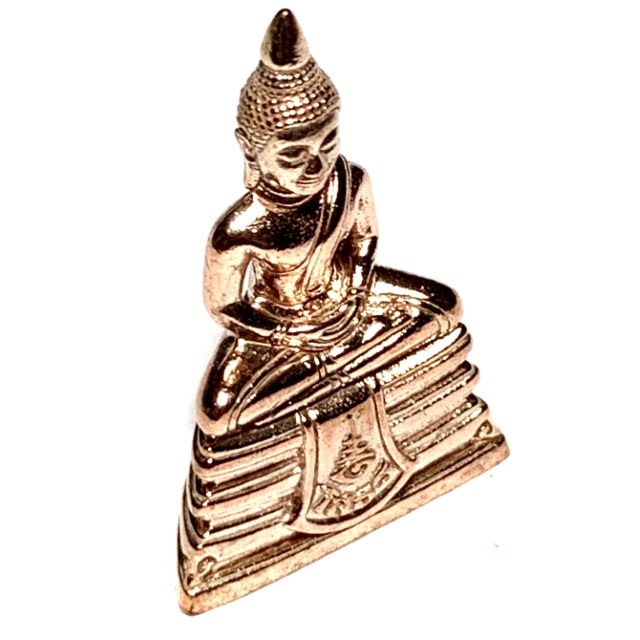
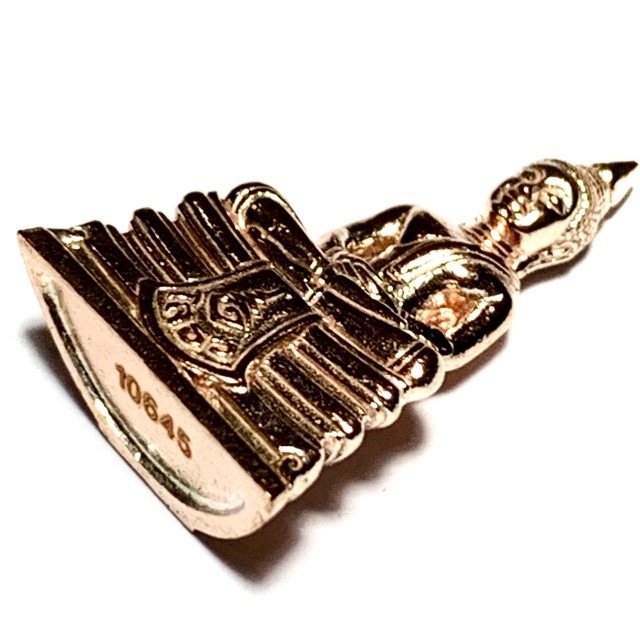


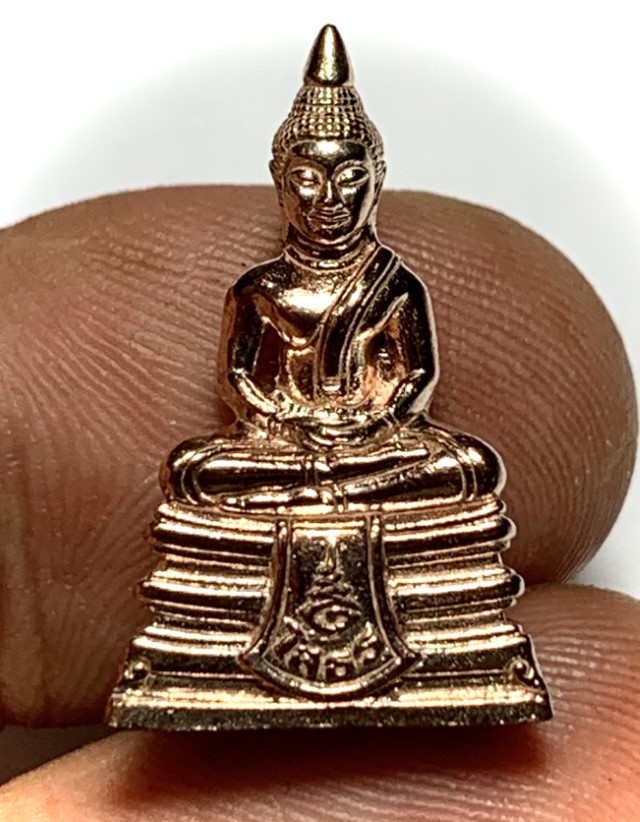
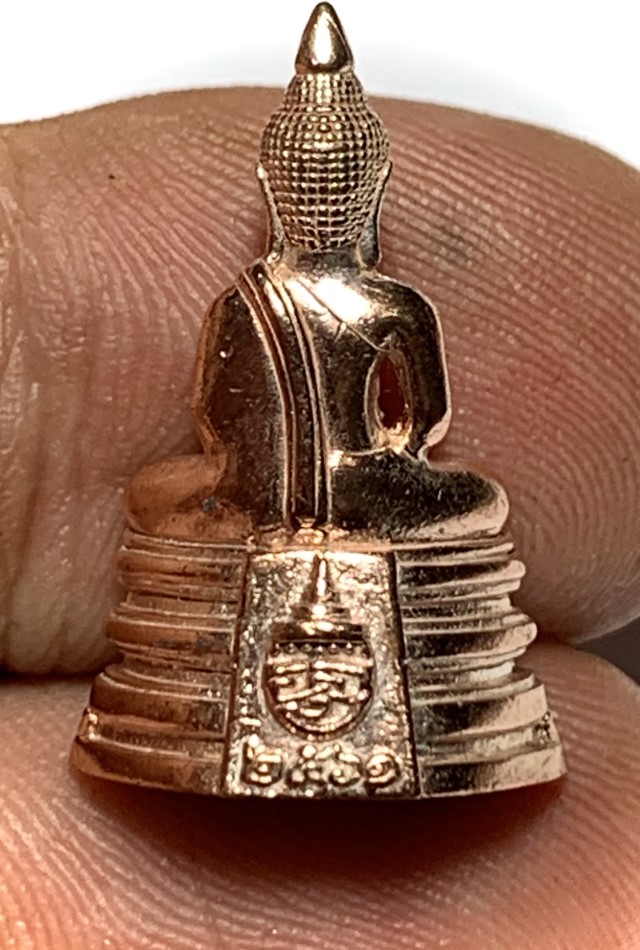
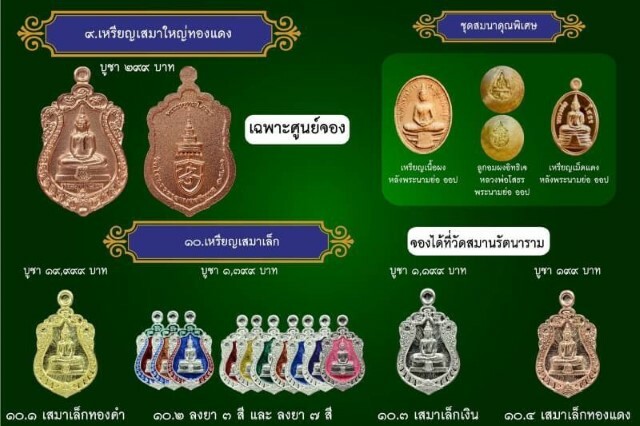
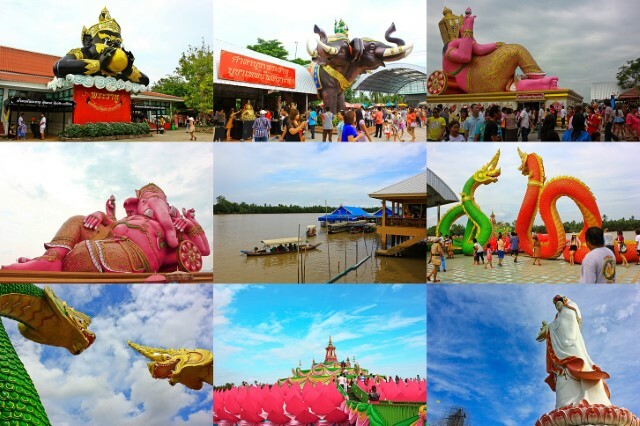

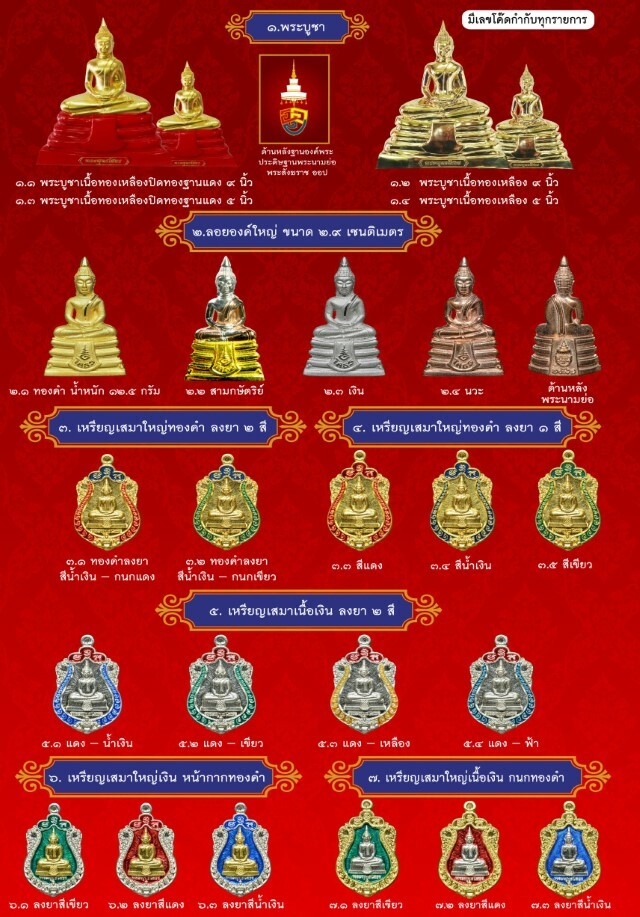
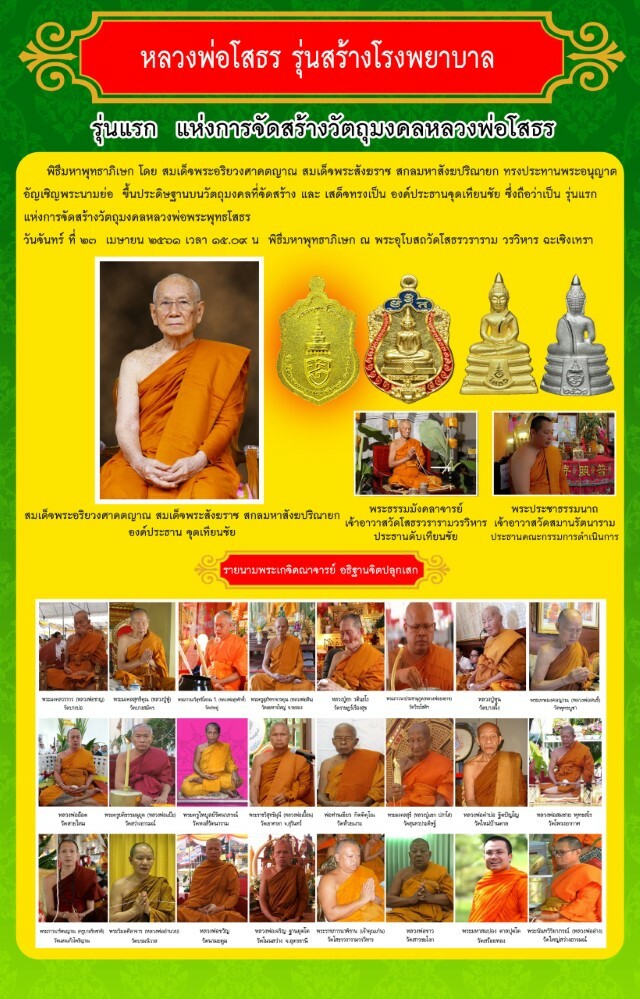

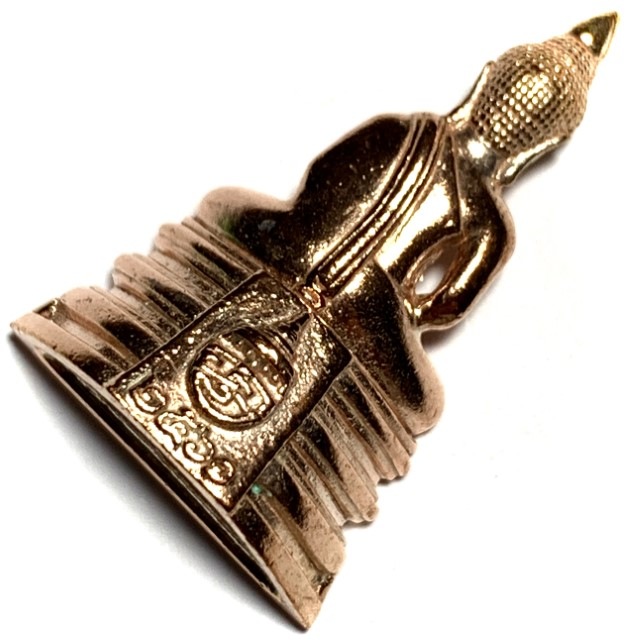
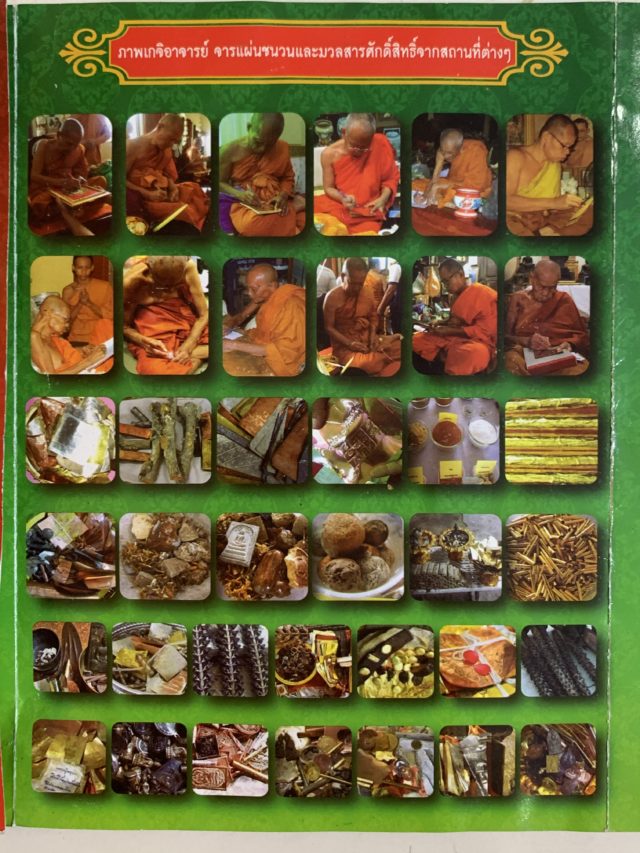
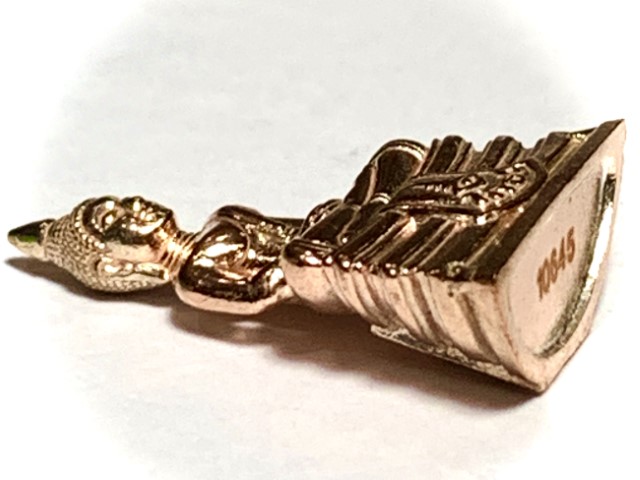
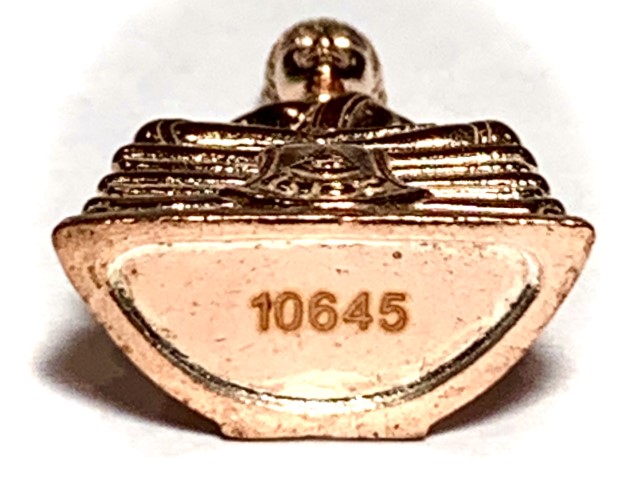

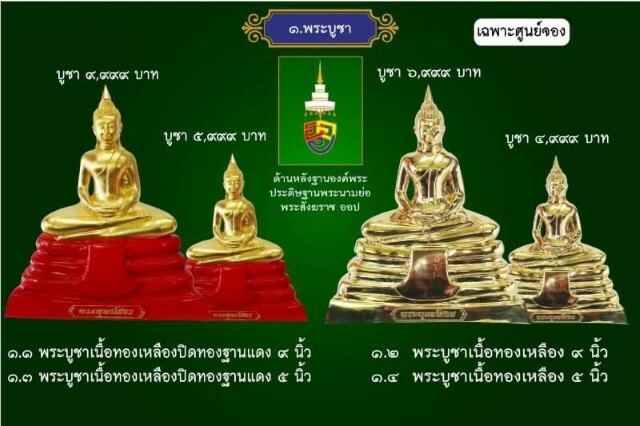
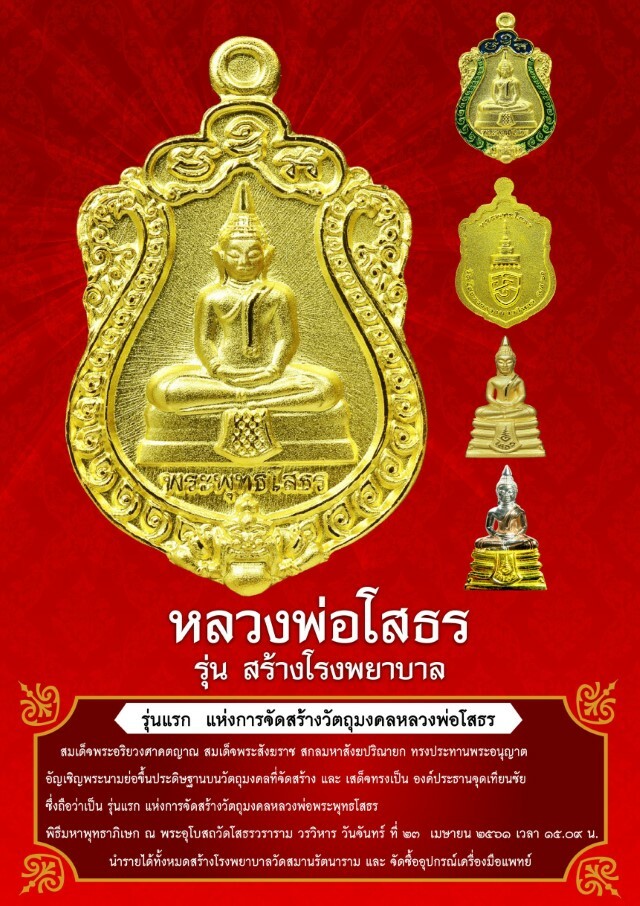
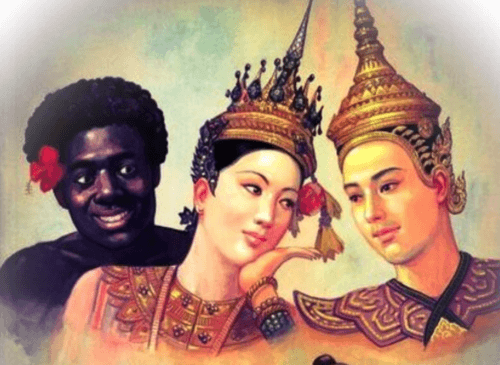
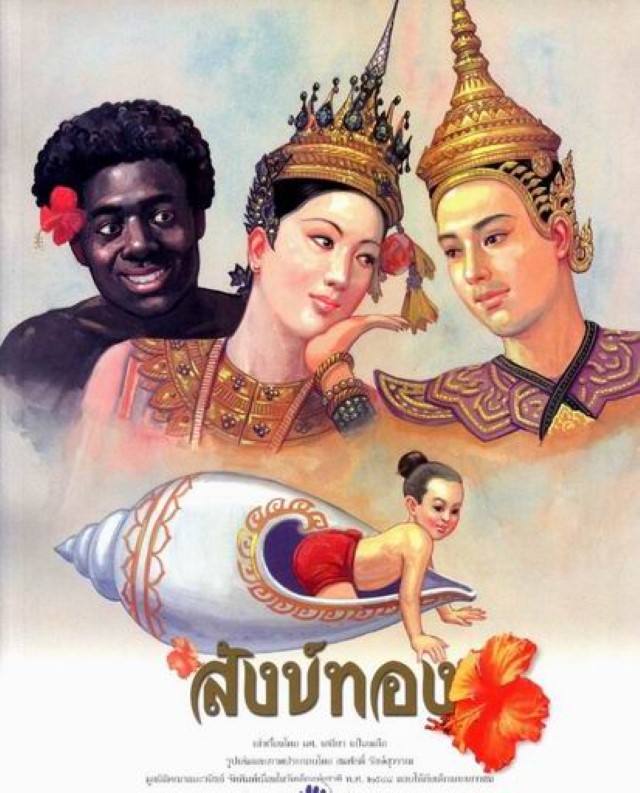
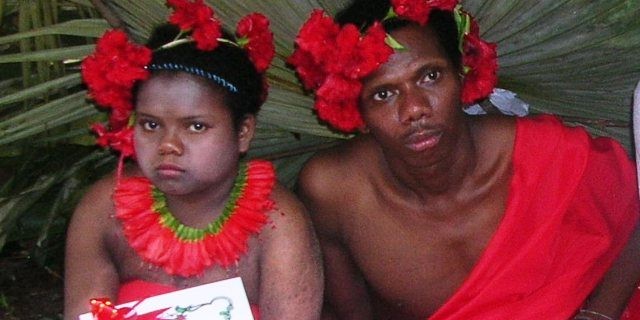
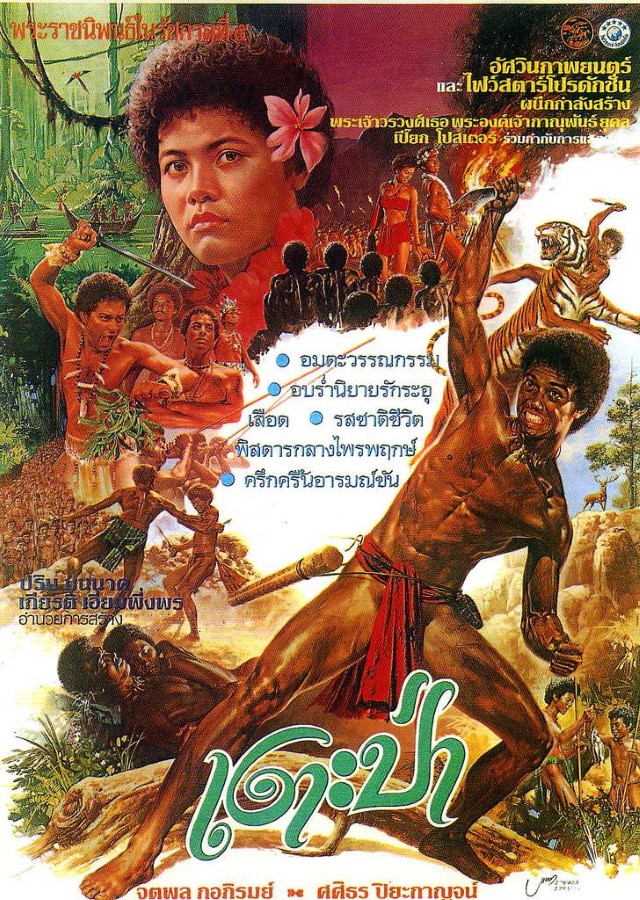
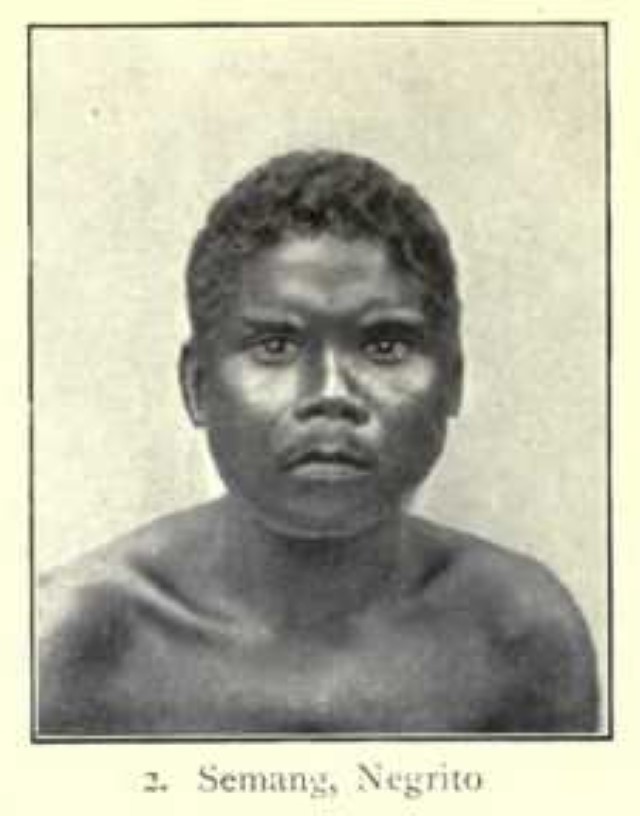
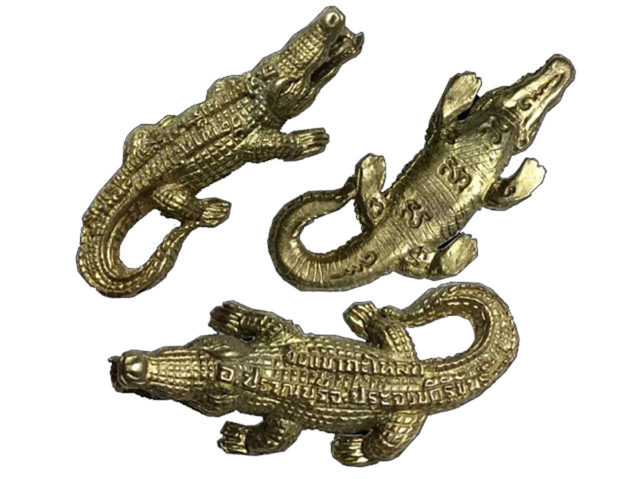
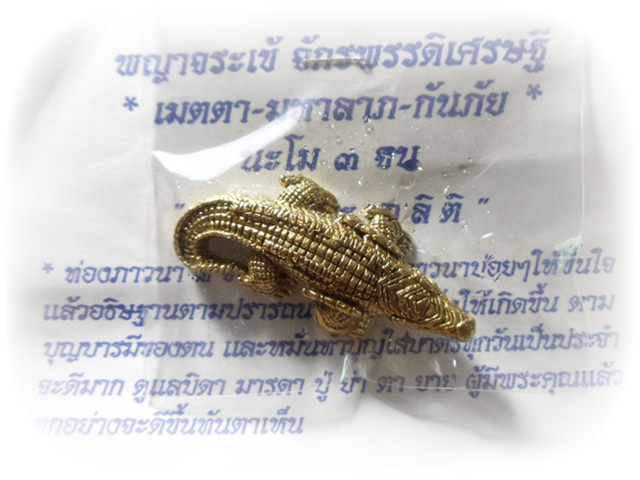
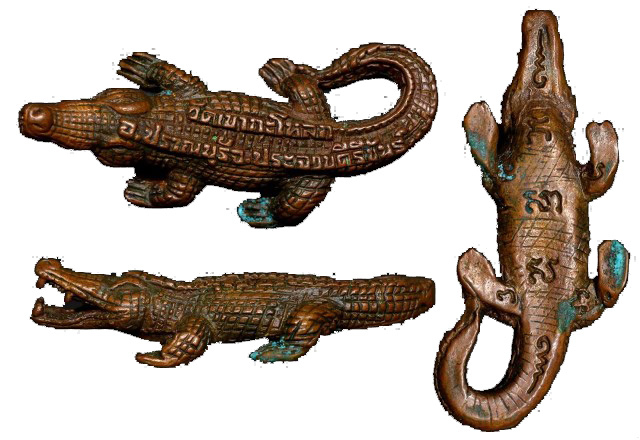
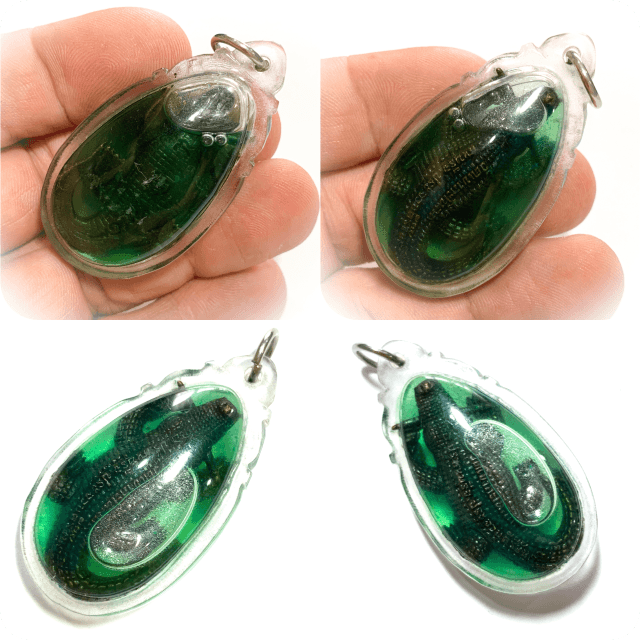
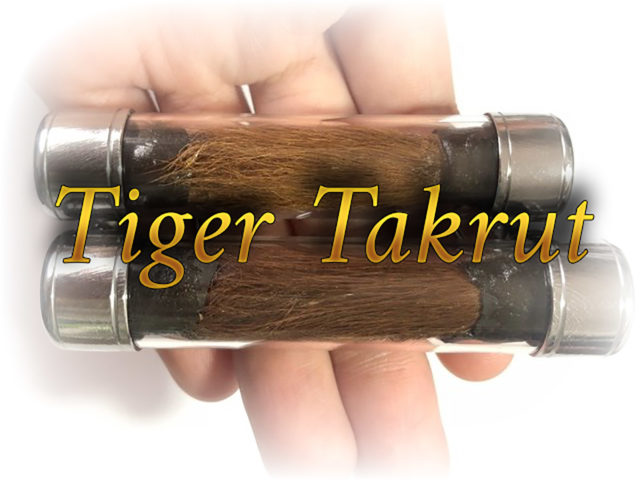
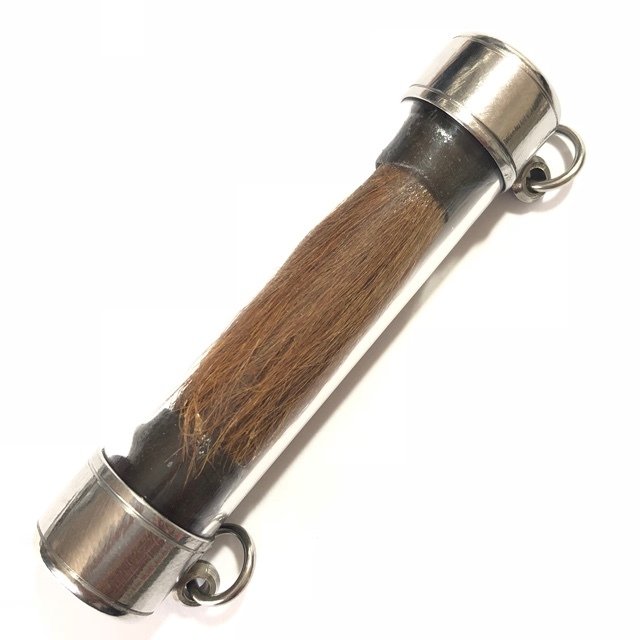
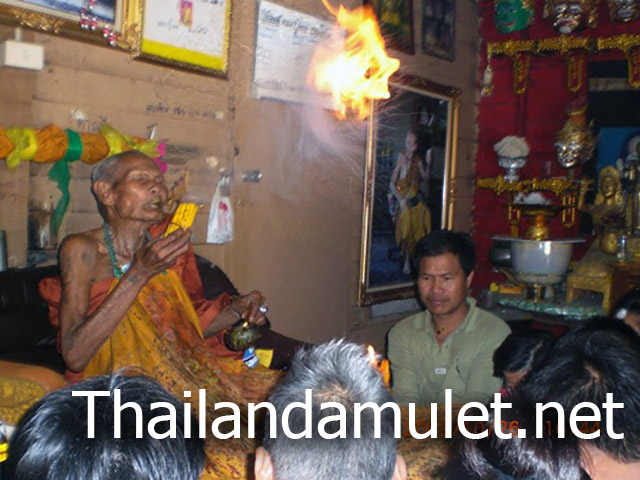
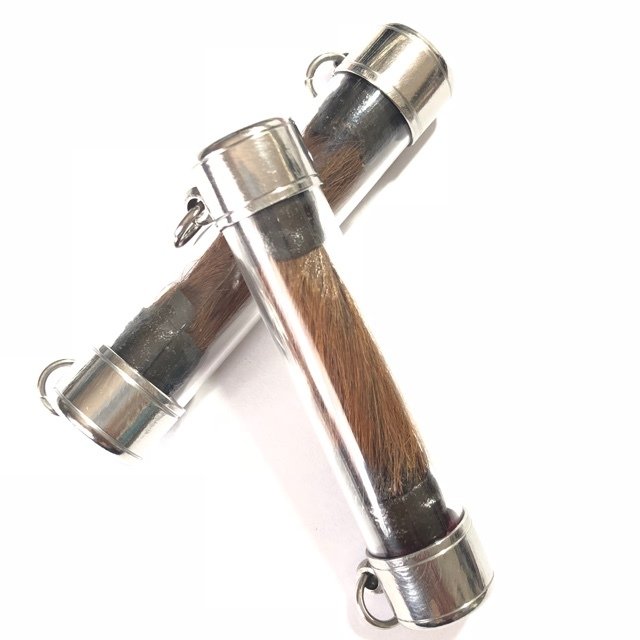
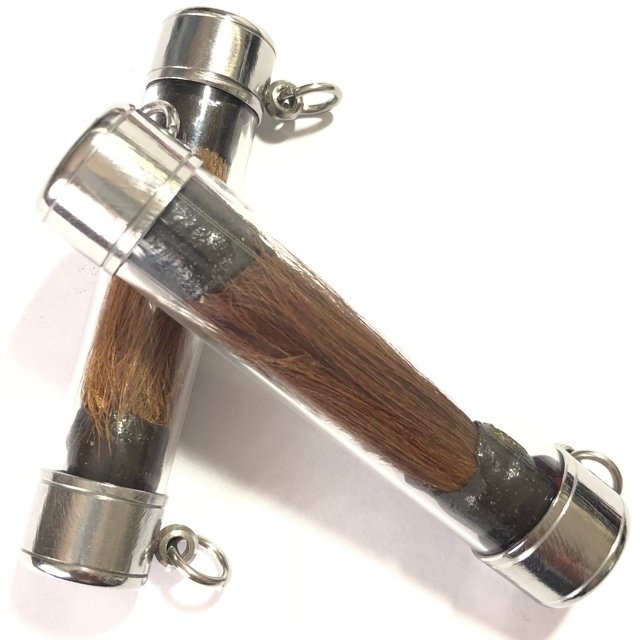
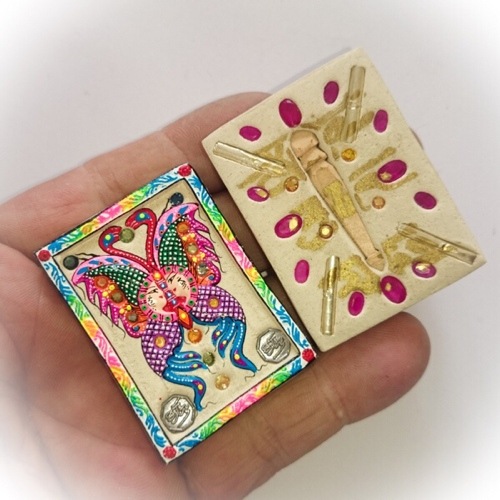
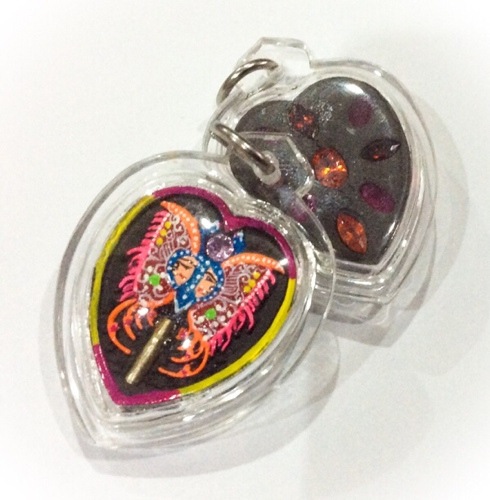
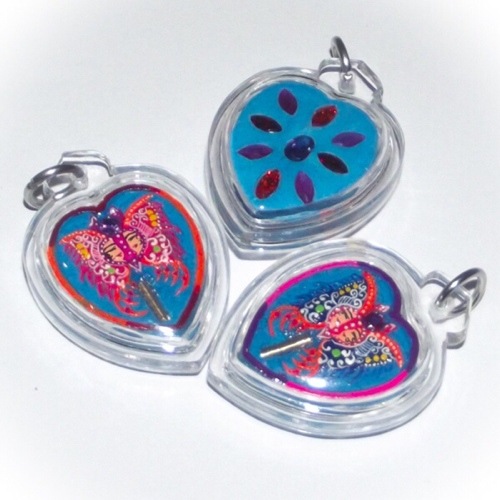
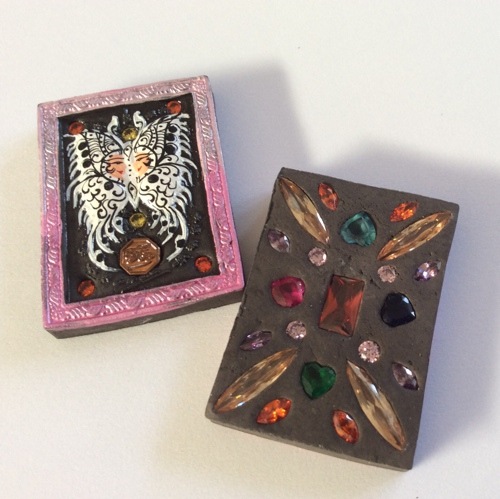

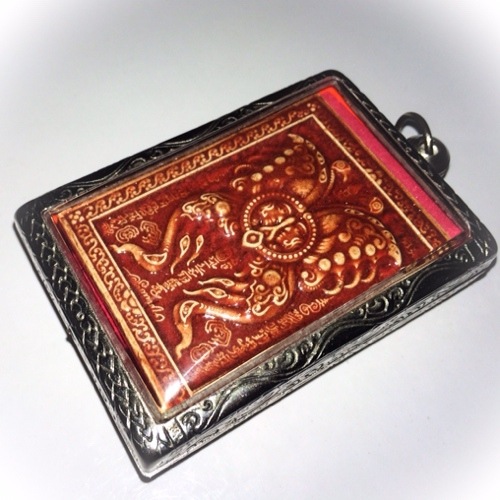
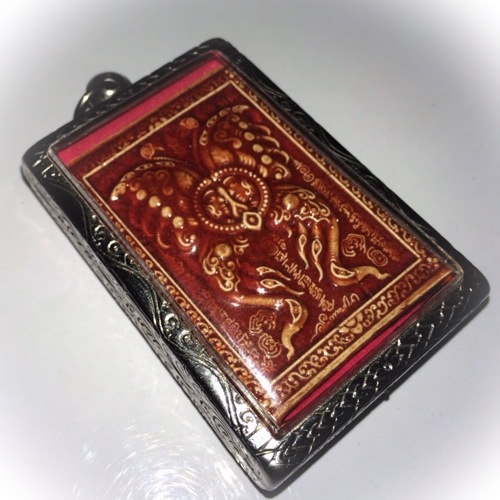 The rear face, features a money spider, weaving its web and sitting comfortably in the middle to trawl in all its prey, and treasures.
The rear face, features a money spider, weaving its web and sitting comfortably in the middle to trawl in all its prey, and treasures.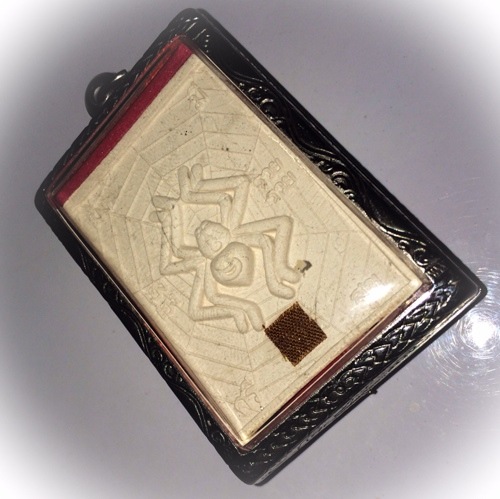 This brings the attractive magic to accumulate treasured possessions in, with powerful and ancient animist Invocations, dating back thousands of years, from Pre-Buddhist times. The money spider has been a Magical image of luck and wealthy fortunes, in almost all countries and cultures, around the world since days of old. Sorcery was eliminated in the Western World after the Witch Hunts, leaving almost no real authentic magical lineage remaining.
This brings the attractive magic to accumulate treasured possessions in, with powerful and ancient animist Invocations, dating back thousands of years, from Pre-Buddhist times. The money spider has been a Magical image of luck and wealthy fortunes, in almost all countries and cultures, around the world since days of old. Sorcery was eliminated in the Western World after the Witch Hunts, leaving almost no real authentic magical lineage remaining.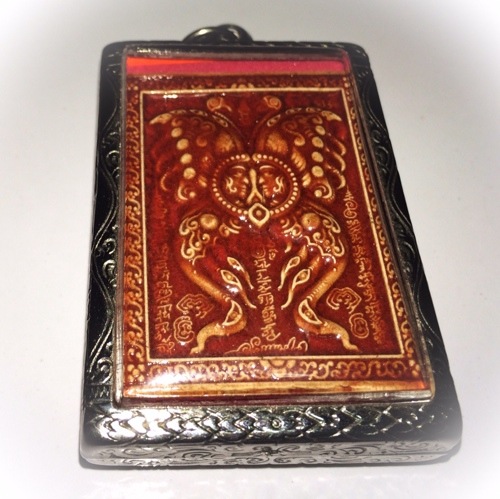
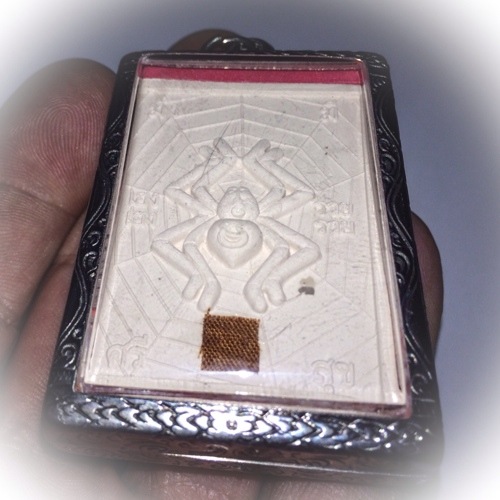
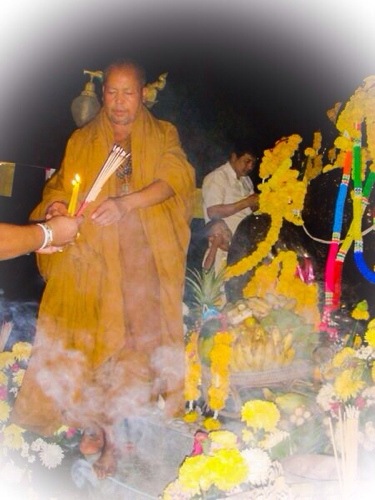 Kroo Ba Krissana Intawano is one of Thailand’s most sought after Masters for his beautiful miniature fine art in the form of his amulets, which are both aesthetically pleasing, as well as full of Metta Mahaniyom Maha Pokasap amd Maha Lap Magic.
Kroo Ba Krissana Intawano is one of Thailand’s most sought after Masters for his beautiful miniature fine art in the form of his amulets, which are both aesthetically pleasing, as well as full of Metta Mahaniyom Maha Pokasap amd Maha Lap Magic.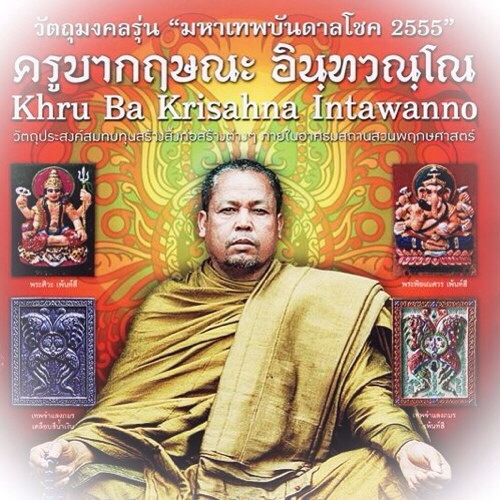
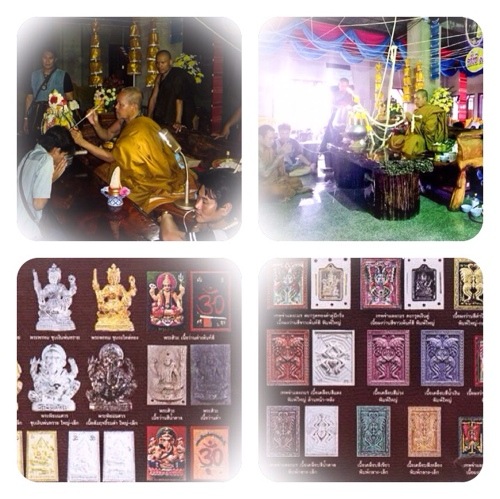
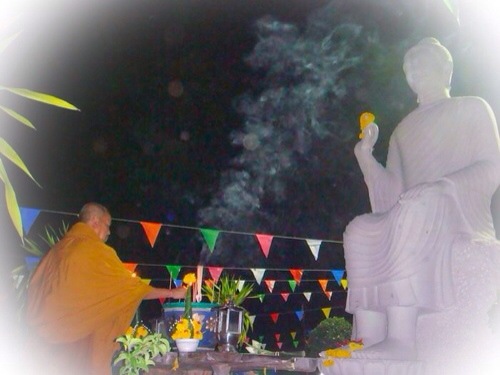
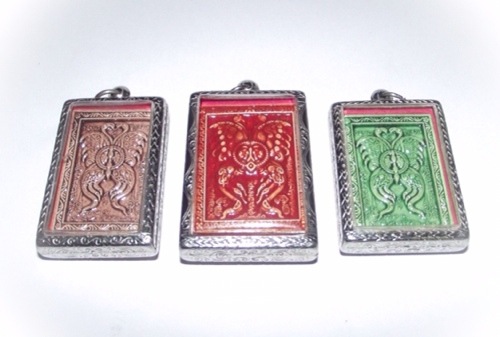
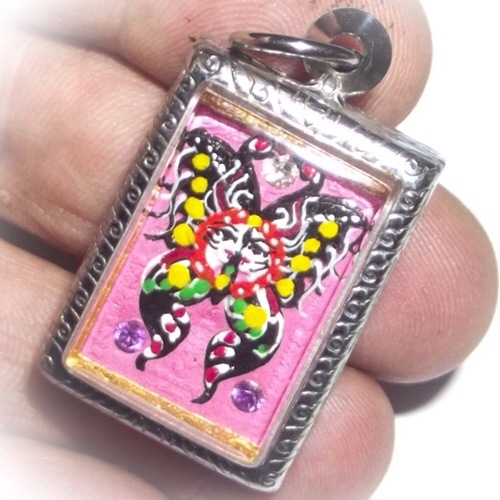
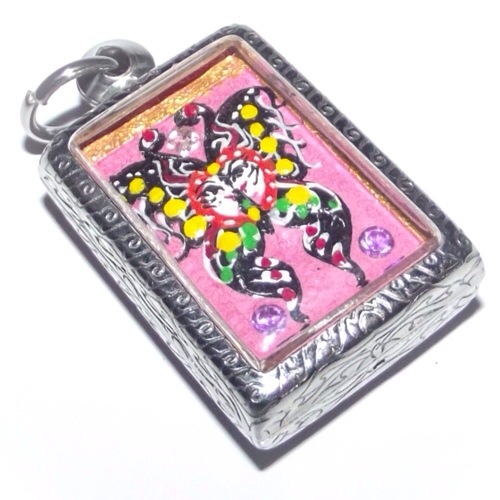
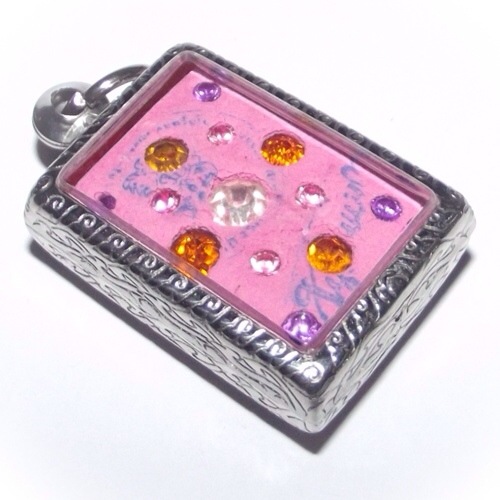
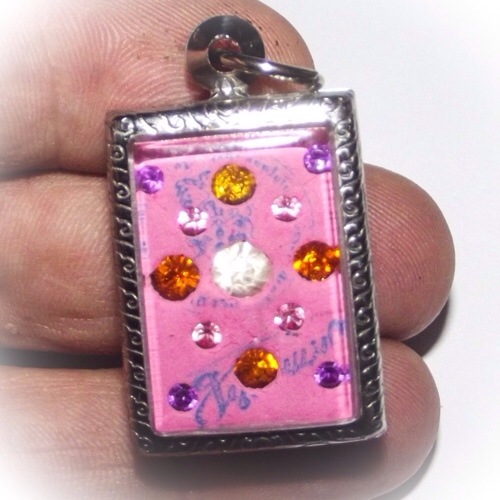
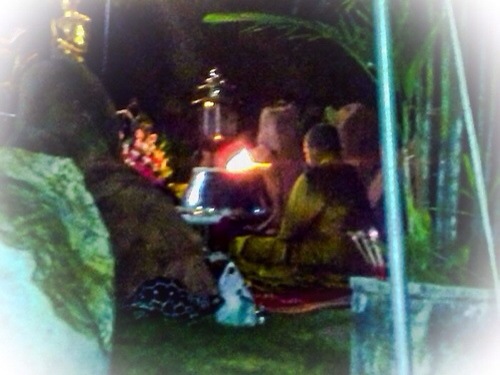
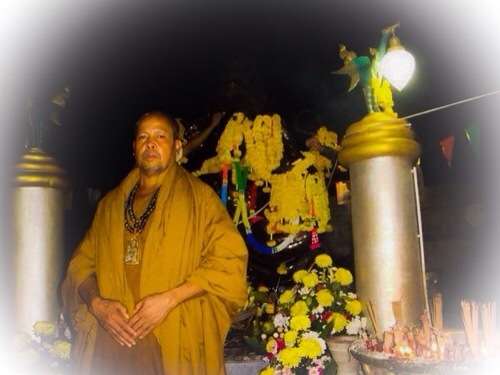
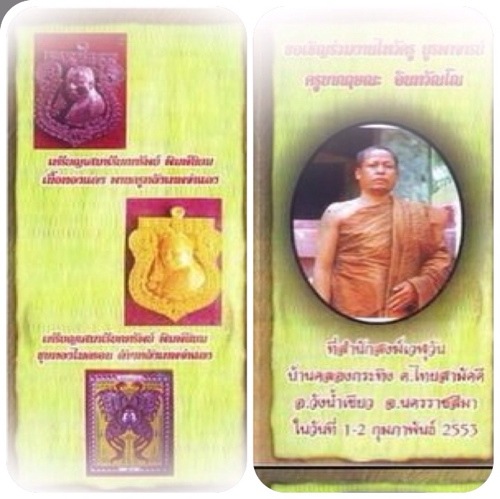
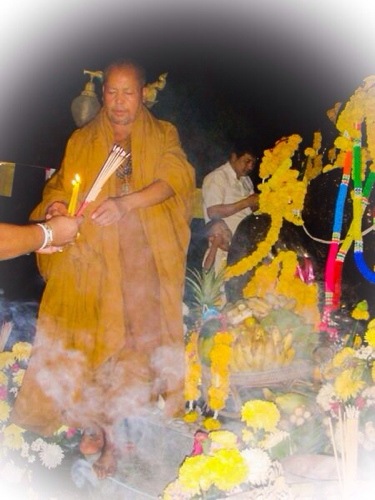
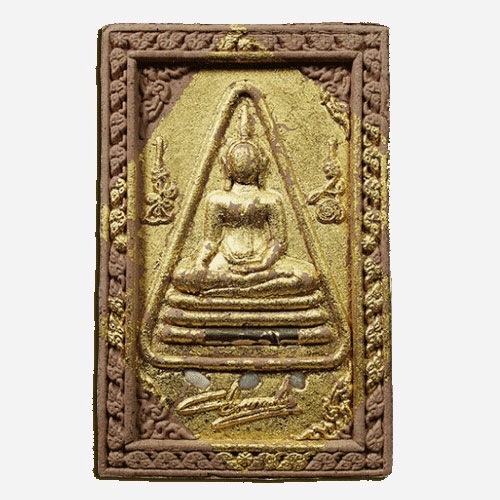
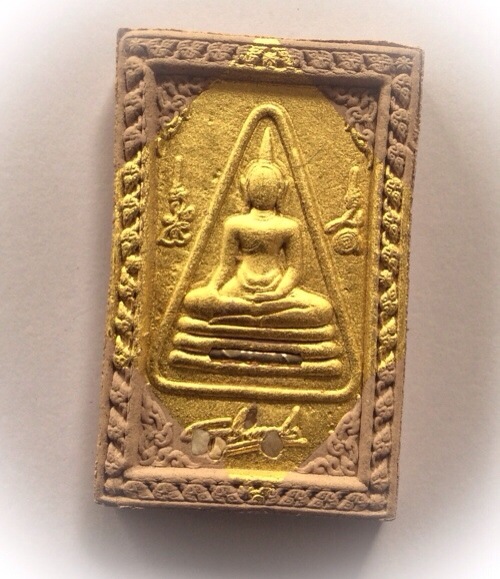
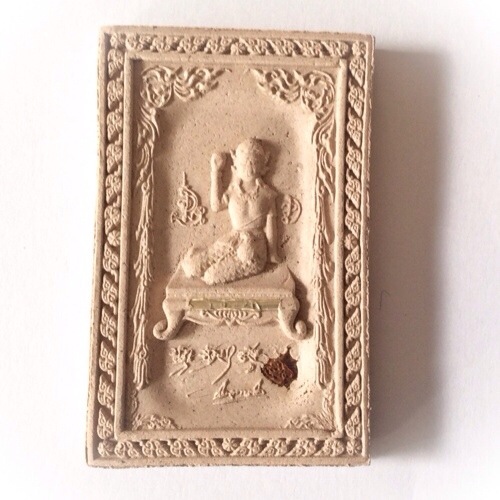
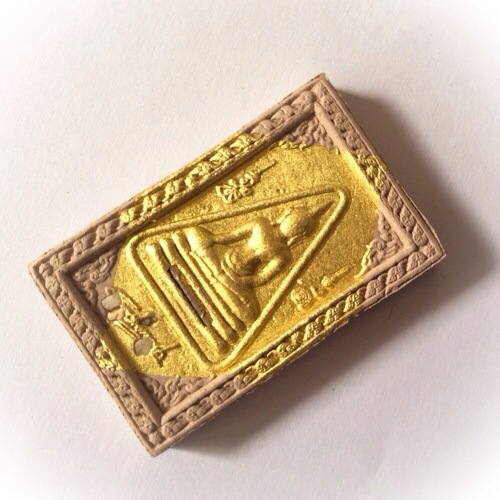
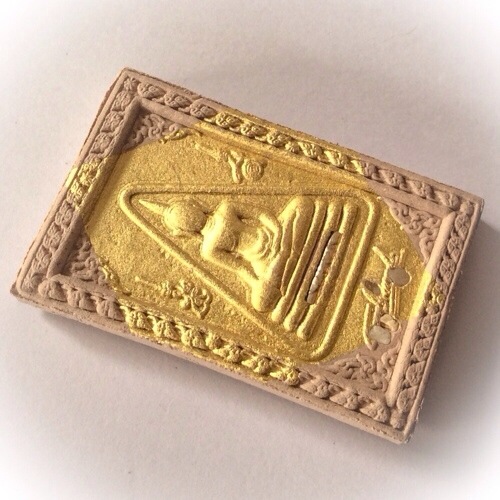
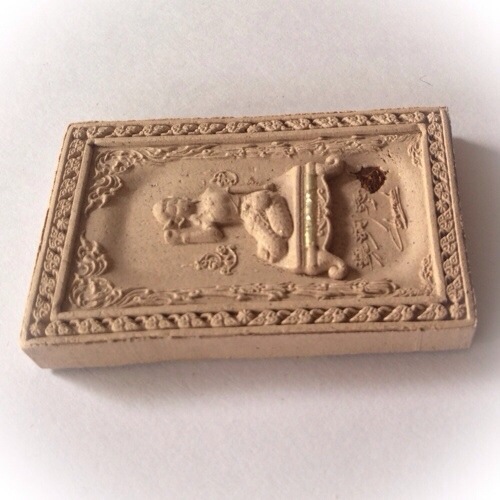
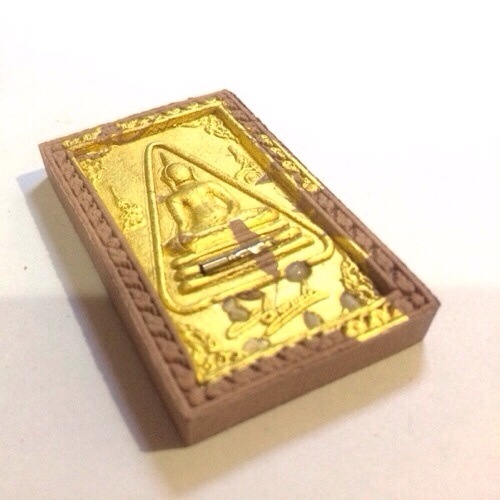
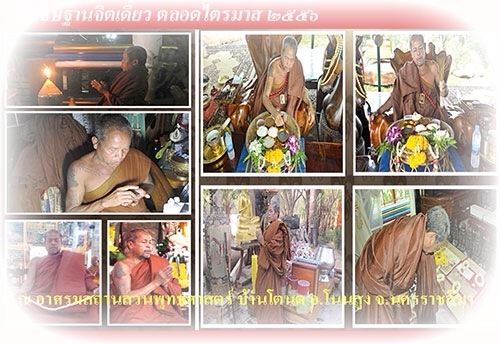
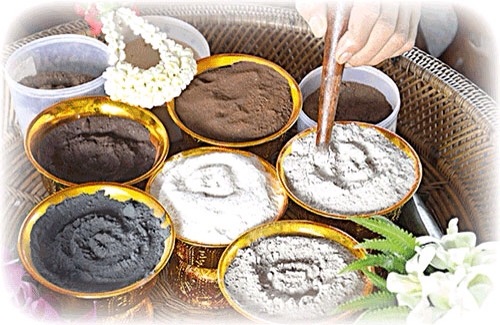

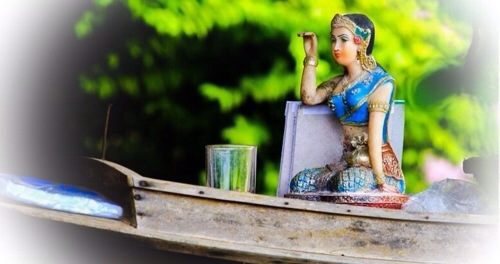
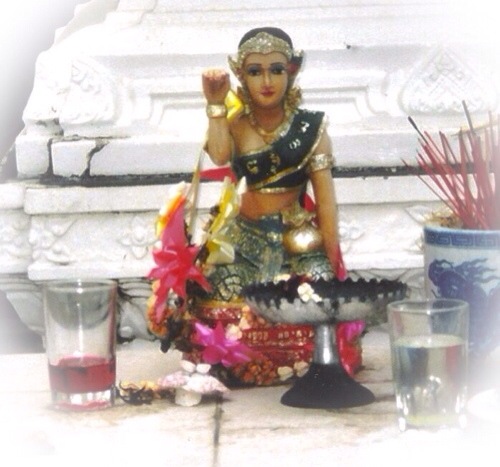 Sometimes, Supawadee their daughter, would ask to tag along for the ride, and help them. One day, as Supawadee was helping her parents to sell wares in a distant town, she was lucky to be able to hear a sermon by Phra Gumarn Gasabatera (พระกุมารกัสสปเถร); she was so convinced, and moved by his sermon, that she took refuge in the Triple Gem.
Sometimes, Supawadee their daughter, would ask to tag along for the ride, and help them. One day, as Supawadee was helping her parents to sell wares in a distant town, she was lucky to be able to hear a sermon by Phra Gumarn Gasabatera (พระกุมารกัสสปเถร); she was so convinced, and moved by his sermon, that she took refuge in the Triple Gem. 